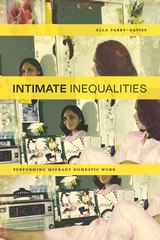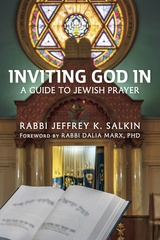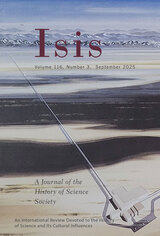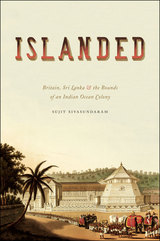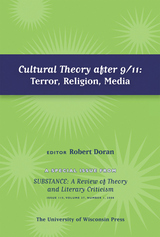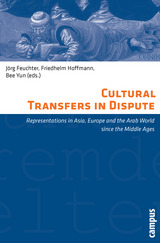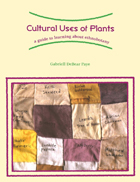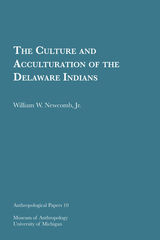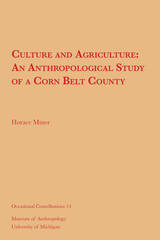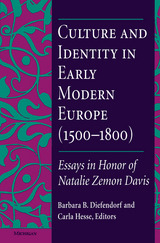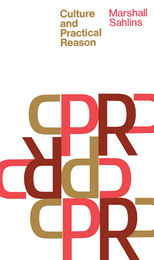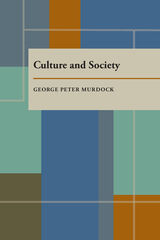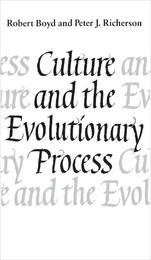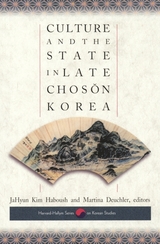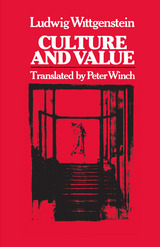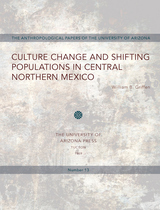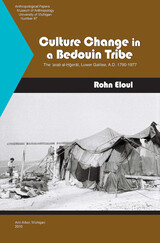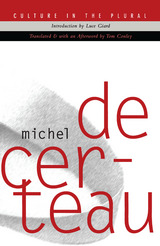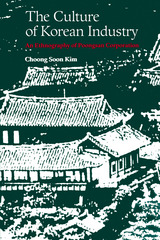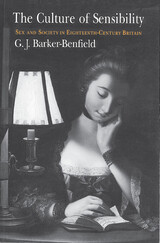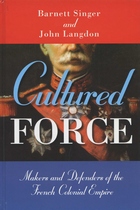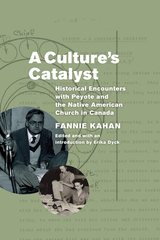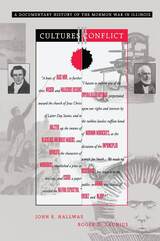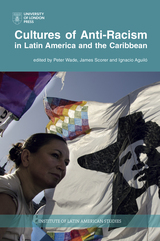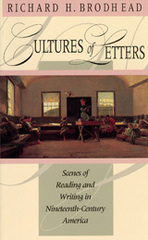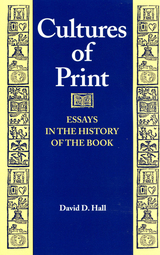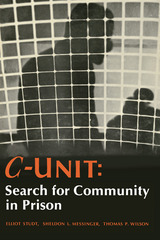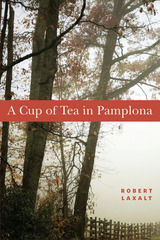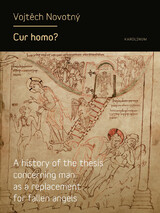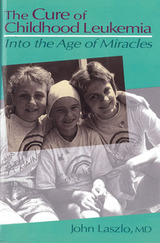The Cultural Set Up of Comedy: Affective Politics in the United States Post 9/11
Julie Webber
Intellect Books, 2013 How do various forms of comedy—including stand-up, satire, and film and television—transform contemporary invocations of nationalism and citizenship in youth cultures? And how are attitudes about gender, race, and sexuality transformed through comedic performances on social media? The Cultural Set Up of Comedy seeks to answer these questions by examining comedic performances by Chris Rock and Louis C.K., news parodies The Daily Show with Jon Stewart and The Colbert Report, the role of satire in the Arab Spring, and the groundbreaking performances by women in Bridesmaids. Breaking with the usual cultural studies debates over how to conceptualize youth, the book instead focuses on the comedic cultural and political scripts that frame them.
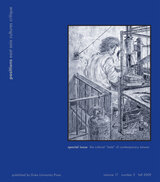 The Cultural State of Contemporary Taiwan, Volume 17
Christopher Lupke, ed.
Duke University Press This special issue is devoted to exploring the highly contested cultural and political space that makes up contemporary Taiwan. Examining a range of topics—from social formations, institutions, and legal discourse to popular culture, literary creativity, and cinematic representation—contributors to “The Cultural ‘State’ of Contemporary Taiwan” define what it means to live in Taiwan. The seven essays in this issue represent a broad spectrum of academic approaches that include sociology, anthropology, legal studies, film studies, literary studies, and cultural theory. One essay investigates Taiwanese who have relocated to Shanghai in search of a secure economic future. Another uses psychoanalysis to examine potentially fascist representations of Taiwan in Japanese manga. The third essay addresses the legal status of women in Taiwan in various marital situations and historical periods. The fourth discusses literary representations of the juancun, or soldiers’ villages, which were common enclaves for retired military personnel and their families. Also featured in this issue are explorations of literary portrayals of the aftermath of the February 28, 1947, massacre and resulting White Terror events, as well as a consideration of the philanthropy practiced by the massive Ciji corporation, which holds more power in the world than Taiwan’s recognized government. The final essay offers a careful study of the films of Cai Mingliang and Chen Guofu and focuses on the way that contemporary Taiwanese cinema handles questions of consumer society, urban alienation, and sexual and emotional relationships.
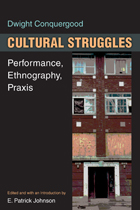 Cultural Struggles: Performance, Ethnography, Praxis
Dwight Conquergood
University of Michigan Press, 2013 The late Dwight Conquergood’s research has inspired an entire generation of scholars invested in performance as a meaningful paradigm to understand human interaction, especially between structures of power and the disenfranchised. Conquergood’s research laid the groundwork for others to engage issues of ethics in ethnographic research, performance as a meaningful paradigm for ethnography, and case studies that demonstrated the dissolution of theory/practice binaries.Cultural Struggles is the first gathering of Conquergood’s work in a single volume, tracing the evolution of one scholar’s thinking across a career of scholarship, teaching, and activism, and also the first collection of its kind to bring together theory, method, and complete case studies. The collection begins with an illuminating introduction by E. Patrick Johnson and ends with commentary by other scholars (Micaela di Leonardo, Judith Hamera, Shannon Jackson, D. Soyini Madison, Lisa Merrill, Della Pollock, and Joseph Roach), engaging aspects of Conquergood’s work and providing insight into how that work has withstood the test of time, as scholars still draw on his research to inform their current interests and methods.
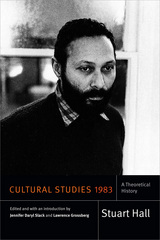 Cultural Studies 1983: A Theoretical History
Stuart Hall
Duke University Press, 2016 The publication of Cultural Studies 1983 is a touchstone event in the history of Cultural Studies and a testament to Stuart Hall's unparalleled contributions. The eight foundational lectures Hall delivered at the University of Illinois in 1983 introduced North American audiences to a thinker and discipline that would shift the course of critical scholarship. Unavailable until now, these lectures present Hall's original engagements with the theoretical positions that contributed to the formation of Cultural Studies. Throughout this personally guided tour of Cultural Studies' intellectual genealogy, Hall discusses the work of Richard Hoggart, Raymond Williams, and E. P. Thompson; the influence of structuralism; the limitations and possibilities of Marxist theory; and the importance of Althusser and Gramsci. Throughout these theoretical reflections, Hall insists that Cultural Studies aims to provide the means for political change.
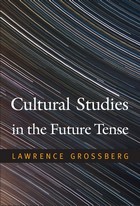 Cultural Studies in the Future Tense
Lawrence Grossberg
Duke University Press, 2010 Lawrence Grossberg is one of the leading figures in cultural studies internationally. In Cultural Studies in the Future Tense, he offers a powerful critique of the present state of cultural studies and, more broadly, of the intellectual left, especially in the Anglo-American academy. He develops a vision for the future of cultural studies as conjunctural analysis, a radically contingent and contextual study of the articulations of lived, discursive, and material contexts. Proposing a compelling analysis of the contemporary political problem space as a struggle over modernity, he suggests the possibility of multiple ways of being modern as an analytic and imaginative frame. He elaborates an ontology of the modern as the potentialities of multiple configurations of temporalities and spatialities, differences, territorialities, and powers, and argues that euro-modernity is a specific geohistorical realization of this complex diagram. Challenging the euro-modern fragmentation of the social formation, he discusses the rigorous conceptual and empirical work that cultural studies must do—including rethinking fundamental concepts such as economy, culture, and politics as well as modernity—to reinvent itself as an effective political intellectual project. This book offers a vision of a contemporary cultural studies that embraces complexity, rigorous interdisciplinary practice and experimental collaborations in an effort to better explain the present in the service of the imagination of other futures and the struggles for social transformation.
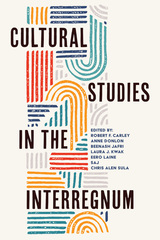 Cultural Studies in the Interregnum
Edited by Robert F. Carley, Anne Donlon, Beenash Jafri, Laura J. Kwak, Eero Laine, SAJ, and Chris Alen Sula
Temple University Press, 2025 The editors and contributors to Cultural Studies in the Interregnum mobilize transnational cultural studies as a tool for politically engaged intellectual critique. Alongside the work of emerging and established scholars and activists, they think through massive cultural shifts and explore the possibilities of the in-between.
Covering queer and feminist studies, critical disability studies, and critical race and ethnic studies, the essays in Cultural Studies in the Interregnum reflect on our shared political pasts and futures. Using examples ranging from media and literature to sex work, policing, and university systems, this exciting volume probes what cultural studies means in moments of social transformation.
Contributors include: Sean Johnson Andrews, C.M. Kaliko Baker, Mary Tuti Baker, James Bliss, Jorge E. Cuéllar, John R. Decker, Brian Dolber, Candace Fujikane, Evyn Lê Espiritu Gandhi, Chris Hall, Rachel Lim, Alexis Pauline Gumbs, Anna Karthika, Manu Karuka, Najwa Mayer, Kyle Mays, Andrew Ó Baoill, Yumi Pak, Therí A. Pickens, Sami Schalk, Leanne Betasamosake Simpson, Tia Trafford, and the editors
 The Cultural Study of Law: Reconstructing Legal Scholarship
Paul W. Kahn
University of Chicago Press, 1999 Belief in the rule of law characterizes our society, our political order, and even our identity as citizens. The Cultural Study of Law is the first full examination of what it means to conduct a modern intellectual inquiry into the culture of law. Paul Kahn outlines the tools necessary for such an inquiry by analyzing the concepts of time, space, citizen, judge, sovereignty, and theory within the culture of law's rule. Charting the way for the development of a new intellectual discipline, Paul Kahn advocates an approach that stands outside law's normative framework and looks at law as a way of life rather than as a set of rules.
"Professor Kahn's perspective is neat and alluring: We need a form of legal scholarship released from the project of reform so that we can better understand who and what we are. The new discipline should study 'not legal rules, but the imagination as it constructs a world of legal meaning.' . . . [C]oncise, good reading, and recommended." —New York Law Journal
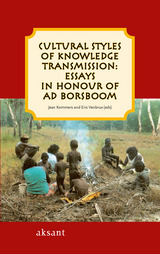 Cultural Styles of Knowledge Transmission: Essays in Honour of Ad Borsboom
Edited by Jean Kommers and Eric Venbrux
Amsterdam University Press, 2008 Anthropologist Dr Ad Borsboom, chair of Pacific Studies at Radboud University Nijmegen, devoted his academic career from 1972 onwards to the transmission of cultural knowledge. Borsboom handed the insights he acquired during many years of fieldwork among Australian Aborigines on to other academics, students and the general public. This collection of essays by his colleagues, specializing in cultures from across the globe, focuses on knowledge transmission. The contributions deal with local forms of education or pedagogics, the learning experiences of fieldwork and the nexus of status and education. Whereas some essays are reflexive, others are personal in nature. But all of the authors are fascinated by the divergent ways in which people handle ‘knowledge’. The volume provides readers with respectful representations of other cultures and their distinct epistemologies.
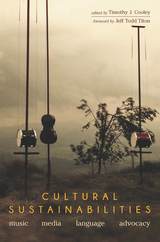 Cultural Sustainabilities: Music, Media, Language, Advocacy
Edited by Timothy J. Cooley
University of Illinois Press, 2019 Environmental sustainability and human cultural sustainability are inextricably linked. Reversing damaging human impact on the global environment is ultimately a cultural question, and as with politics, the answers are often profoundly local. Cultural Sustainabilities presents twenty-three essays by musicologists and ethnomusicologists, anthropologists, folklorists, ethnographers, documentary filmmakers, musicians, artists, and activists, each asking a particular question or presenting a specific local case study about cultural and environmental sustainability. Contributing to the environmental humanities, the authors embrace and even celebrate human engagement with ecosystems, though with a profound sense of collective responsibility created by the emergence of the Anthropocene. Contributors: Aaron S. Allen, Michael B. Bakan, Robert Baron, Daniel Cavicchi, Timothy J. Cooley, Mark F. DeWitt, Barry Dornfeld, Thomas Faux, Burt Feintuch, Nancy Guy, Mary Hufford, Susan Hurley-Glowa, Patrick Hutchinson, Michelle Kisliuk, Pauleena M. MacDougall, Margarita Mazo, Dotan Nitzberg, Jennifer C. Post, Tom Rankin, Roshan Samtani, Jeffrey A. Summit, Jeff Todd Titon, Joshua Tucker, Rory Turner, Denise Von Glahn, and Thomas Walker
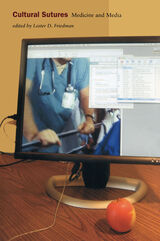 Cultural Sutures: Medicine and Media
Lester D. Friedman, ed.
Duke University Press, 2004 Medicine and the media exist in a unique symbiosis. Increasingly, health-care consumers turn to media sources—from news reports to Web sites to tv shows—for information about diseases, treatments, pharmacology, and important health issues. And just as the media scour the medical terrain for news stories and plot lines, those in the health-care industry use the media to publicize legitimate stories and advance particular agendas. The essays in Cultural Sutures delineate this deeply collaborative process by scrutinizing a broad range of interconnections between medicine and the media in print journalism, advertisements, fiction films, television shows, documentaries, and computer technology. In this volume, scholars of cinema studies, philosophy, English, sociology, health-care education, women’s studies, bioethics, and other fields demonstrate how the world of medicine engages and permeates the media that surround us. Whether examining the press coverage of the Jack Kevorkian–euthanasia controversy; pondering questions about accessibility, accountability, and professionalism raised by such films as Awakenings, The Doctor, and Lorenzo’s Oil; analyzing the depiction of doctors, patients, and medicine on E.R. and Chicago Hope; or considering the ways in which digital technologies have redefined the medical body, these essays are consistently illuminating and provocative. Contributors. Arthur Caplan, Tod Chambers, Stephanie Clark-Brown, Marc R. Cohen, Kelly A. Cole, Lucy Fischer, Lester D. Friedman, Joy V. Fuqua, Sander L. Gilman, Norbert Goldfield, Joel Howell, Therese Jones, Timothy Lenoir, Gregory Makoul, Marilyn Chandler McEntyre, Faith McLellan, Jonathan M. Metzl, Christie Milliken, Martin F. Norden, Kirsten Ostherr, Limor Peer, Audrey Shafer, Joseph Turow, Greg VandeKieft, Otto F. Wahl
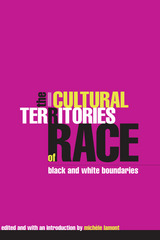 The Cultural Territories of Race: Black and White Boundaries
Edited by Michèle Lamont
University of Chicago Press, 1999 Even as America becomes more multiracial, the black-white divide remains central to understanding many patterns and tensions in contemporary society. Since the 1960s, however, social scientists concerned with this topic have been reluctant to discuss the cultural dimensions of racial inequality—not wanting to "blame the victim" for having "wrong values." The Cultural Territories of Race redirects this research tendency, employing today's more sophisticated methods of cultural analysis toward a new understanding of how cultural structures articulate the black/white problem.
These essays examine the cultural territories of race through topics such as blacks' strategies for dealing with racism, public categories for definition of race, and definitions of rules for cultural memberships. Empirically grounded, these studies analyze divisions among blacks according to their relationships with whites or with alternative black culture; differences among whites regarding their attitudes toward blacks; and differences both among blacks and between blacks and whites, in their cultural understandings of various aspects of social life ranging from material success to marital life and to ideas about feminism. The essays teach us about the largely underexamined cultural universes of black executives, upwardly mobile college students, fast-food industry workers, so-called deadbeat dads, and proponents of Afrocentric curricula.
The Cultural Territories of Race makes an important contribution to current policy debates by amplifying muted voices that have too often been ignored by other social scientists.
Contributors are: Elijah Anderson, Amy Binder, Bethany Bryson, Michael C. Dawson, Catherine Ellis, Herbert J. Gans, Jennifer L. Hochschild, Michèle Lamont, Jane J. Mansbridge, Katherine S. Newman, Maureen R. Waller, Pamela Barnhouse Walters, Mary C. Waters, Julia Wrigley, Alford A. Young Jr.
Cultural Theory after 9/11: Terror, Religion, Media: Special Issue of SubStance, Issue 115, 37:1 (2008)
Robert Doran
University of Wisconsin Press, 2008 This collection of material seeks to interpret the events of September 11, 2001 from the perspective of cultural theory — that is, from the perspective of anthropological and social forces that motivate human beings and give meaning to their thoughts, actions, and feelings. Though contributors to this volume work within various disciplines, their approach is necessarily holistic—because of the very nature of the event, which resonates on many levels and in diverse spheres of human activity.
Clearly the perception of who one’s enemy is has a cultural and psychological impact that goes far beyond the superficial media representations consumed on a daily basis; the very curriculum of American universities has been altered as a result of the 9/11 attacks, and this will have profound and far-reaching effects.
Cultural Transfers in Dispute: Representations in Asia, Europe and the Arab World since the Middle Ages
Edited by Jörg Feuchter, Friedhelm Hoffmann, and Bee Yun
Campus Verlag, 2011 Our conception of cultures and cultural change has altered dramatically in recent decades: no longer do we understand cultures as isolated units; rather, we see them as hybrid formations constantly engaged in a multidirectional process of exchange and influence with other cultures. Yet the very process by which we represent these cultural transfers is itself subject to cultural, political, and ideological conditions that affect our understanding, acknowledgment, and representation of them. Built around concrete examples of controversial representations of cultural transfer from Asia, the Arab world, and Europe, Cultural Transfers in Dispute presents a critical self-reflection on the scholarly practices that underpin our attempts to study and describe other cultures.
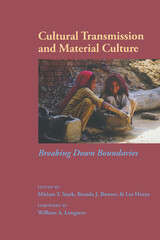 Cultural Transmission and Material Culture: Breaking Down Boundaries
Edited by Miriam T. Stark, Brenda J. Bowser, and Lee Horne
University of Arizona Press, 2008 How and why people develop, maintain, and change cultural boundaries through time are central issues in the social and behavioral sciences in generaland anthropological archaeology in particular. What factors influence people to imitate or deviate from the behaviors of other group members? How are social group boundaries produced, perpetuated, and altered by the cumulative outcomeof these decisions? Answering these questions is fundamental to understanding cultural persistence and change. The chapters included in this stimulating, multifaceted book address these questions.
Working in several subdisciplines, contributors report on research in the areas of cultural boundaries, cultural transmission, and the socially organized nature of learning. Boundaries are found not only within and between the societies in these studies but also within and between the communities of scholars who study them. To break down these boundaries, this volume includes scholars who use multiple theoretical perspectives, including practice theory and evolutionary traditions, which are sometimes complementary and occasionally clashing. Geographic coverage ranges from the indigenous Americas to Africa, the Near East, and South Asia, and the time frame extends from the prehistoric or precontact to colonial periods and up to the ethnographic present. Contributors include leading scholars from the United States, Canada, the United Kingdom, and Europe. Together, they employ archaeological, ethnographic, ethnoarchaeological,experimental, and simulation data to link micro-scale processes of cultural transmission to macro-scale processes of social group boundary formation, continuity, and change.
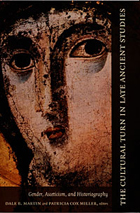 The Cultural Turn in Late Ancient Studies: Gender, Asceticism, and Historiography
Dale B. Martin and Patricia Cox Miller, eds.
Duke University Press, 2005 The essays in this provocative collection exemplify the innovations that have characterized the relatively new field of late ancient studies. Focused on civilizations clustered mainly around the Mediterranean and covering the period between roughly 100 and 700 CE, scholars in this field have brought history and cultural studies to bear on theology and religious studies. They have adopted the methods of the social sciences and humanities—particularly those of sociology, cultural anthropology, and literary criticism. By emphasizing cultural and social history and considerations of gender and sexuality, scholars of late antiquity have revealed the late ancient world as far more varied than had previously been imagined. The contributors investigate three key concerns of late ancient studies: gender, asceticism, and historiography. They consider Macrina’s scar, Mary’s voice, and the harlot’s body as well as Augustine, Jovinian, Gregory of Nazianzus, Julian, and Ephrem the Syrian. Whether examining how animal bodies figured as a means for understanding human passion and sexuality in the monastic communities of Egypt and Palestine or meditating on the almost modern epistemological crisis faced by Theodoret in attempting to overcome the barriers between the self and the wider world, these essays highlight emerging theoretical and critical developments in the field. Contributors. Daniel Boyarin, David Brakke, Virginia Burrus, Averil Cameron, Susanna Elm, James E. Goehring, Susan Ashbrook Harvey, David G. Hunter, Blake Leyerle, Dale B. Martin, Patricia Cox Miller, Philip Rousseau, Teresa M. Shaw, Maureen A. Tilley, Dennis E. Trout, Mark Vessey
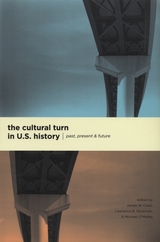 The Cultural Turn in U. S. History: Past, Present, and Future
Edited by James W. Cook, Lawrence B. Glickman, and Michael O'Malley
University of Chicago Press, 2008 A definitive account of one of the most dominant trends in recent historical writing, The Cultural Turn in U.S. History takes stock of the field at the same time as it showcases exemplars of its practice. The first of this volume’s three distinct sections offers a comprehensive genealogy of American cultural history, tracing its multifaceted origins, defining debates, and intersections with adjacent fields. The second section comprises previously unpublished essays by a distinguished roster of contributors who illuminate the discipline’s rich potential by plumbing topics that range from nineteenth-century anxieties about greenback dollars to confidence games in 1920s Harlem, from Shirley Temple’s career to the story of a Chicano community in San Diego that created a public park under a local freeway. Featuring an equally wide ranging selection of pieces that meditate on the future of the field, the final section explores such subjects as the different strains of cultural history, its relationships with arenas from mass entertainment to public policy, and the ways it has been shaped by catastrophe. Taken together, these essays represent a watershed moment in the life of a discipline, harnessing its vitality to offer a glimpse of the shape it will take in years to come.
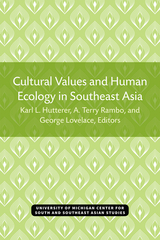 Cultural Values and Human Ecology in Southeast Asia
Karl L. Hutterer, A. Terry Rambo, and George Lovelace, Editors
University of Michigan Press, 1981 Ecologists have long based their conceptual frameworks in the natural sciences. Recently, however, they have acknowledged that ecosystems cannot be understood without taking into account human interventions that may have taken place for thousands of years. And for their part, social scientists have recognized that human behavior must be understood in the environment in which it is acted out. Researchers have thus begun to develop the area of “human ecology.” Yet human ecology needs suitable conceptual frameworks to tie the human and natural together. In response, Cultural Values and Human Ecology uses the framework of cultural values to collect a set of highly diverse contributions to the field of human ecology. Values represent an important and essential aspect of the intellectual organization of a society, integrated into and ordained by the over-arching cosmological system, and constituting the meaningful basis for action, in terms of concreteness and abstraction of content as well as mutability and permanence. Because of this balance, values lend themselves to the kinds of analyses of ecological relationships conducted here, those that demand a reasonable amount of specificity as well as historical stability. The contributions to Cultural Values and Human Ecology are exceedingly diverse. They include abstract theoretical discussions and specific case studies, ranging across the landscape of Southeast Asia from the islands to southern China. They deal with hunting-gathering populations as well as peasants operating within contemporary nation-states, and they are the work of natural scientists, social scientists, and humanists of Western and Asian origin. Diversity in the backgrounds of the authors contributes most to the varied approaches to the theme of this volume, because differences in cultural background and academic tradition will lead to different research interests and to differences in the empirical approaches chosen to pursue given problems.
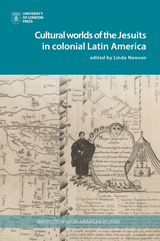 Cultural Worlds of the Jesuits in Colonial Latin America
Edited by Linda Newson
University of London Press, 2020 The Jesuits’ colonial legacy in Latin America is well-known. They pioneered an interest in indigenous languages and cultures, compiling dictionaries and writing some of the earliest ethnographies of the region. They also explored the region’s natural history and made significant contributions to the development of science and medicine. On their estates and in the missions they introduced new plants, livestock, and agricultural techniques, such as irrigation. In addition, they left a lasting legacy on the region’s architecture, art, and music. The volume demonstrates the diversity of Jesuit contributions to Latin American culture. This volume is unique in considering not only the range of Jesuit activities but also the diversity of perspectives from which they may be approached. It includes papers from scholars of history, linguistics, religion, art, architecture, cartography, music, medicine and science.
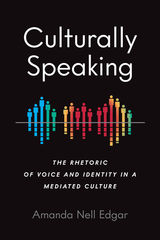 Culturally Speaking: The Rhetoric of Voice and Identity in a Mediated Culture
Amanda Nell Edgar
Ohio State University Press, 2019 Winner, 2020 Outstanding Book Award, Critical/Cultural Studies Division of the National Communication Association
Recent pieces by NPR, the BBC, and Forbes have called attention to the power of voice—positing that “your voice is the secret to getting hired” and that “voice can accelerate or hold back a career.” While it has become clearer that such things as pitch and intonation can be tied to assumptions about one’s gender, race/ethnicity, and class, studying voice as a socially constructed artifact carries with it unique challenges. In response, Culturally Speaking: The Rhetoric of Voice and Identity in a Mediated Culture presents an innovative approach to studying the spoken voice in media, showing how racial and gendered oppression bubble beneath the surface of American culture’s most recognized speaking voices, spreading invisible messages about which kinds of vocal identities are privileged and which kinds should be silenced.
Through her analysis of prominent voices in American culture—including Morgan Freeman, Tina Fey, Barack Obama, Adele, Dave Chappelle, Richard Pryor, and George Lopez—Amanda Nell Edgar argues that voices carry a residue of the particular cultural environments in which they are formed, and that these environments can be traced and analyzed to add a sonic dimension to our understanding of race and gender as rhetorically situated identities—pushing back against the often-unnoticed systems of sound-based discrimination.
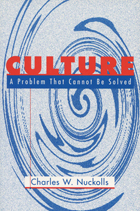 Culture: A Problem That Cannot Be Solved
Charles W. Nuckolls
University of Wisconsin Press, 1998
French historian Alexis de Tocqueville observed that the conflict between the ideals of individualism and community defines American culture. In this groundbreaking new work, anthropologist Charles Nuckolls discovers that every culture consists of such paradoxes, thus making culture a problem that cannot be solved. He does, however, find much creative tension in these unresolvable opposites.
Nuckolls presents three fascinating case studies that demonstrate how values often are expressed in the organization of social roles. First he treats the Micronesian Ifaluks’ opposition between cooperation and self-gratification by examining the nature versus nurture debate. Nuckolls then shifts to the values of community and individual adventure by looking at the conflicts in the identities of public figures in Oklahoma. Finally, he investigates the cultural significance in the diagnostic system and practices of psychiatry in the United States. Nuckolls asserts that psychiatry treats genders differently, assigning dependence to women and independence to men and, in some cases, diagnoses the extreme forms of these values as disorders.
Nuckolls elaborates on the theory of culture that he introduced in his previous book, The Cultural Dialectics of Knowledge and Desire, which proposed that the desire to resolve conflicts is central to cultural knowledge. In Culture: A Problem that Cannot Be Solved, Nuckolls restores the neglected social science concept of values, which addresses both knowledge and motivation. As a result, he brings together cognition and psychoanalysis, as well as sociology and psychology, in his study of cultural processes.
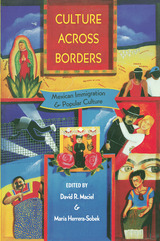 Culture across Borders: Mexican Immigration and Popular Culture
Edited by David R. Maciel and María Herrera-Sobek
University of Arizona Press, 1998 For as long as Mexicans have emigrated to the United States they have responded creatively to the challenges of making a new home. But although historical, sociological, and other aspects of Mexican immigration have been widely studied, its cultural and artistic manifestations have been largely overlooked by scholars—even though Mexico has produced the greatest number of cultural works inspired by the immigration process. And recently Chicana/o artists have addressed immigration as a central theme in their cultural productions and motifs. Culture across Borders is the first and only book-length study to analyze a wide range of cultural manifestations of the immigration experience, including art, literature, cinema, corridos, and humor. It shows how Mexican immigrants have been depicted in popular culture both in Mexico and the United States—and how Mexican and Chicano/Chicana artists, intellectuals, and others have used artistic means to protest the unjust treatment of immigrants by U.S. authorities. Established and upcoming scholars from both sides of the border contribute their expertise in art history, literary criticism, history, cultural studies, and other fields, capturing the many facets of the immigrant experience in popular culture. Topics include the difference between Chicano/a and Mexican representation of immigration; how films dealing with immigrants are treated differently by Mexican, Chicano, and Hollywood producers; the rich literary and artistic production on immigration themes; and the significance of immigration in Chicano jokes. As a first step in addressing the cultural dimensions of Mexican immigration to the United States, this book captures how the immigration process has inspired powerful creative responses on both sides of the border.
The Culture and Acculturation of the Delaware Indians
William W. Newcomb, Jr.
University of Michigan Press, 1956 In 1951 and 1952, William W. Newcomb, Jr. visited the Delaware people of Oklahoma in order to write an ethnographic study of the tribe. He discusses the origins and linguistic affiliations of the Delaware, their social systems, economic and material culture, and religion and folklore, as well as the process of acculturation and assimilation that took place after European contact.
Culture and Agriculture: An Anthropological Study of a Corn Belt County
Horace Miner
University of Michigan Press, 1949 In 1939, Horace Miner lived for four months in Hardin County, Iowa, in order to carry out an anthropological study of farm life. The following year, Miner wrote up his results for the United States Agricultural Department, which had requested the study. Due to political concerns, it would be nearly a decade before his study was published. This slim volume contains the results of his fieldwork.
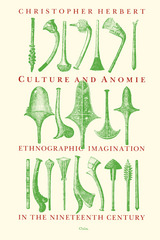 Culture and Anomie: Ethnographic Imagination in the Nineteenth Century
Christopher Herbert
University of Chicago Press, 1991 Few ideas are as important and pervasive in the discourse of the twentieth century as the idea of culture. Yet culture, Christopher Herbert contends, is an idea laden from its inception with ambiguity and contradiction. In Culture and Anomie, Christopher Herbert conducts an inquiry into the historical emergence of the modern idea of culture that is at the same time an extended critical analysis of the perplexities and suppressed associations underlying our own exploitation of this term.
Making wide reference to twentieth-century anthropologists from Malinowski and Benedict to Evans-Pritchard, Geertz, and Lévi-Strauss as well as to nineteenth-century social theorists like Tylor, Spencer, Mill, and Arnold, Herbert stresses the philosophically dubious, unstable character that has clung to the "culture" idea and embarrassed its exponents even as it was developing into a central principle of interpretation.
In a series of detailed studies ranging from political economy to missionary ethnography, Mayhew, and Trollope's fiction, Herbert then focuses on the intellectual and historical circumstances that gave to "culture" the appearance of a secure category of scientific analysis despite its apparent logical incoherence. What he describes is an intimate relationship between the idea of culture and its antithesis, the myth or fantasy of a state of boundless human desire—a conception that binds into a single tradition of thought such seemingly incompatible writers as John Wesley, who called this state original sin, and Durkheim, who gave it its technical name in sociology: anomie.
Methodologically provocative and rich in unorthodox conclusions, Culture and Anomie will be of interest not only to specialists in nineteenth-century literature and intellectual history, but also to readers across the wide range of fields in which the concept of culture plays a determining role.
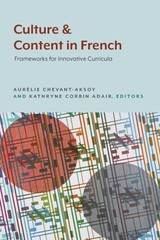 Culture and Content in French: Frameworks for Innovative Curricula
Aurélie Chevant-Aksoy
Lever Press, 2022 Instructors in today’s language classrooms face the challenge of preparing globally competent and socially responsible students with transcultural aptitude. As classroom content shifts toward communication, collaboration, and problem solving across cultural, racial, and linguistic boundaries, the teaching of culture is an integral part of foreign language education. This volume offers nontraditional approaches to teaching culture in a complex time when the internet and social networks have blurred geographical, social, and political borders. The authors offer practical advice about teaching culture with kinesthetics, music, improvisation, and communication technologies for different competency levels. The chapters also explore multi-literacies, project-based learning, and discussions on teaching culture through literature, media, and film. The appendices share examples of course syllabi, specific course activities, and extracurricular projects that explore culinary practices, performing arts, pop culture, geolocation, digital literacy, journalism, and civic literacy.
Culture and Contestation in the New Century
Edited by Marc James Léger
Intellect Books, 2011 A series of essays by internationally known artists, scholars, and critics in the growing field of cultural theory, Culture and Contestation in the New Century examines the conditions of cultural production in the first decade of the twenty-first century. With an emphasis on how current neoliberal policies have affected institutions of cultural production and dissemination, it emphasizes the ensuing changes to critical theory. The contributors here are among the most respected scholars in art, art criticism, and cultural studies, and this powerful analysis poses important questions about cultural democracy and social change.
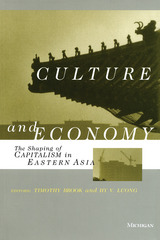 Culture and Economy: The Shaping of Capitalism in Eastern Asia
Timothy Brook and Hy Van Luong, Editors
University of Michigan Press, 1999 In recent years, most of the economies of Eastern Asia have been absorbed into global capitalism. Capitalism has transformed these economies, but the process has not been one-way. The cultures of Eastern Asia have in turn shaped how capitalism organizes labor, capital, and markets in ways that could not have been anticipated even ten years ago. On the basis of rich empirical analyses of East and Southeast Asia, and with theoretical insights from different approaches in the social sciences, Culture and Economy addresses these issues in both macroscopic and microscopic terms. Specific topics discussed range from the use and reinvention of Confucian and Islamic legacies in South Korea and Malaysia to promote a particular vision of the economy, to the role of family- and network-structured firms and the reliance on trust-based personal networks in Southeast Asia, to the cultures of labor and management in Chinese village enterprises and Vietnamese ceramics firms, as well as in South Korean export processing zones and the current Chinese labor market. These careful case studies suggest that it is inevitable that Eastern Asia will shape, even remake, capitalism into a system of production and consumption beyond its original definition. Timothy Brook is Professor of History, Stanford University. Hy V. Luong is Professor of Anthropology, University of Toronto.
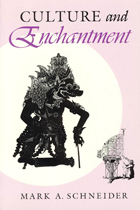 Culture and Enchantment
Mark A. Schneider
University of Chicago Press, 1993 Max Weber viewed modern life as disenchanted, an arena from which scientific inquiry had banished magic. In contrast, Mark Schneider argues intriguingly that enchantment—the sense that we are confronted by inexplicable phenomena—persists in the world today, although it has shifted from the natural to the cultural arena. Culture and Enchantment shows that students of culture today operate in social and intellectual circumstances similar to those of seventeenth-century natural philosophers. Just as Newton was drawn to alchemy, scholars today are fascinated by ghostly and mercurial agents thought to account for the meanings of cultural entities.
For interpretive disciplines, Schneider suggests, meaning often behaves behaves as mysteriously as the apparitions pursued by centuries ago by natural philosophers. He demonstrates this using two case studies from anthropology: Clifford Geertz's description of Balinese cockfights and Yoruba statuary, and Claude Levi-Strauss's analyses of myths. These provide a basis for actively engaging disputes over the meaning and interpretation of culture.
Culture and Enchantment will appeal to an interdisciplinary audience in anthropology, sociology, history, history and sociology of science, culture studies, and literary theory. Schneider's provocative arguments will make this book a fulcrum in the continuing debate over the nature and prospects of cultural inquiry.
Culture and Equality: An Egalitarian Critique of Multiculturalism
Brian Barry
Harvard University Press, 2001 All major Western countries contain groups that differ from the mainstream and from each other in religious beliefs, customary practices, or cultural ideas. How should public policy respond to this diversity? Brian Barry challenges the currently orthodox answer and develops a powerful restatement of an egalitarian liberalism for the twenty-first century.
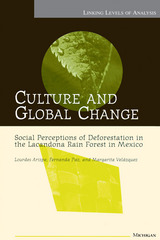 Culture and Global Change: Social Perceptions of Deforestation in the Lacandona Rain Forest in Mexico
Lourdes Arizpe, Fernanda Paz, and Margarita Velazquez
University of Michigan Press, 1996 Never before in history have humans had such power over the environment as we have today, and never before have we been so close to the end of nature. With the destruction of the earth a realistic possibility, global change is the point on which theoretical discussions and practical challenges must converge.
The authors of this compelling book argue that before suitable solutions can be found to pressing environmental problems, we need a way to gather information on the human dimensions of global changes. How do small and everyday individual actions add up to the intricate networks of global interactions? What are our rights and responsibilities as humans toward the planet and its natural resources?
The Lacandon rain forest in Mexico provides a vivid example of an environmental challenge that will demand the concerted efforts of many different groups, and not only technical solutions, to resolve successfully. Using data taken largely from in-depth interviews with landowners, farm workers, cattle raisers, housewives, professionals, and civil servants, the authors draw a rich portrait of the varied perceptions and positions these groups and individuals hold. At issue are the social, rather than psychological, bases of their perspectives.
Culture and Global Change offers a model for how the social sciences, and anthropology in particular, can lead the way in developing comprehensive understandings of the interrelationships between groups at the local, regional, and international levels that affect perceptions of the environment and thus the viability of solutions. It is required reading for anthropologists and environmental activists alike.
Lourdes Arizpe is Assistant Director-General for Culture, UNESCO. Fernanda Paz and Margarita Vel´zquez work for the Centro Regional de Investigaciones Multidisciplinarias, Universidad Nacional Autonoma de México.
 Culture and Human Nature: Theoretical Papers of Melford E. Spiro
Melford E. Spiro
University of Chicago Press, 1987 One of the most prominent figures in psychoanalytic and psychological anthropology, Melford E. Spiro has produced an oeuvre of broad theoretical and ethnographic scope. One of the few anthropologists who are also trained in psychoanalysis, he has made the study of culture and personality a distinctive theoretical approach to anthropological work and has been a consistent and forceful critic of such popular intellectual movements as structuralism, hermeneutics, cultural determinism, and symbolic anthropology.
This volume of Spiro's major theoretical writings concentrates on theories of culture and human nature, functional analysis, and religion. Spiro argues that important dimensions of the human family are the same everywhere and that a theory of human nature is both possible and necessary. He discusses religious beliefs, analyzing not only their structures but also the ways such beliefs are held and the meanings attributed to them. This analysis, Spiro shows, can be done most successfully by means of a theory of the human family, of infant and child development and socialization, of panhuman unconscious processes, and of universal psychodynamic constellations such as the Oedipus complex.
 Culture and Inference: A Trobriand Case Study
Edwin Hutchins
Harvard University Press, 1980 This book takes a major step in psychological anthropology by applying new analytic tools from cognitive science to one of the oldest and most vexing anthropological problems: the nature of "primitive" thought.
For a decade or more there has been broad agreement within anthropology that culture might be usefully viewed as a system of tacit rules that constrain the meaningful interpretation of events and serve as a guide to action. However, no one has made a serious attempt to write a cultural grammar that would make such rules explicit. In Culture and Inference Edwin Hutchins makes just such an attempt for one enormously instructive case, the Trobriand Islanders' system of land tenure.
Using the propositional network notation developed by Rumeihart and Norman, Hutchins describes native knowledge about land tenure as a set of twelve propositions. Inferences are derived from these propositions by a set of transfer formulas that govern the way in which static knowledge about land tenure can be applied to new disputes. After deriving this descriptive system by extensive observation of the Trobrianders' land courts and by interrogation of litigants, Hutchins provides a test of his grammar by showing how it can be used to simulate decisions in new cases.
What is most interesting about these simulations, generally, is that theyrequire all the same logical operations that arise from a careful analysis of Western thought. Looking closely at "primitive" inference in a natural situation, Hutchins finds that Trobriand reasoning is no more primitive than our own.
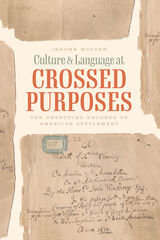 Culture and Language at Crossed Purposes: The Unsettled Records of American Settlement
Jerome McGann
University of Chicago Press, 2022 Culture and Language at Crossed Purposes unpacks the interpretive problems of colonial treaty-making and uses them to illuminate canonical works from the period.
Classic American literature, Jerome McGann argues, is haunted by the betrayal of seventeenth- and eighteenth-century Indian treaties—“a stunned memory preserved in the negative spaces of the treaty records.” A noted scholar of the “textual conditions” of literature, McGann investigates canonical works from the colonial period, including the Arbella sermon and key writings of William Bradford, John Winthrop, Anne Bradstreet, Cotton Mather’s Magnalia, Benjamin Franklin’s celebrated treaty folios and Autobiography, and Thomas Jefferson’s Notes on the State of Virginia. These are highly practical, purpose-driven works—the record of Enlightenment dreams put to the severe test of dangerous conditions. McGann suggests that the treaty-makers never doubted the unsettled character of what they were prosecuting, and a similar conflicted ethos pervades these works. Like the treaty records, they deliberately test themselves against stringent measures of truth and accomplishment and show a distinctive consciousness of their limits and failures. McGann’s book is ultimately a reminder of the public importance of truth and memory—the vocational commitments of humanist scholars and educators.
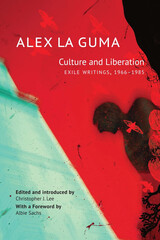 Culture and Liberation: Exile Writings, 1966–1985
Alex La Guma
Seagull Books, 2020 One of South Africa’s best-known writers during the apartheid era, Alex La Guma was a lifelong activist and a member of the South African Communist Party and the African National Congress. Persecuted and imprisoned by the South African regime in the 1950s and 60s, La Guma went into exile in the United Kingdom with his wife and children in 1966, eventually serving as the ANC’s diplomatic representative for Latin America and the Caribbean in Cuba. Culture and Liberation captures a different dimension of his long writing career by collecting his political journalism, literary criticism, and other short pieces published while he was in exile.
This volume spans La Guma’s political and literary life in exile through accounts of his travels to Algeria, Lebanon, Vietnam, Soviet Central Asia, and elsewhere, along with his critical assessments of Paul Robeson, Nadine Gordimer, Maxim Gorky, Alexander Solzhenitsyn, and Pablo Neruda, among other writers. The first dedicated collection of La Guma’s exile writing, Culture and Liberation restores an overlooked dimension of his life and work, while opening a window on a wider world of cultural and political struggles in Africa, Asia, and Latin America during the second half of the twentieth century.
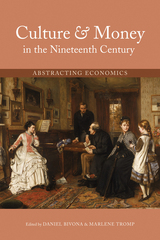 Culture and Money in the Nineteenth Century: Abstracting Economics
Daniel Bivona
Ohio University Press, 2016 Since the 1980s, scholars have made the case for examining nineteenth-century culture—particularly literary output—through the lens of economics. In Culture and Money in the Nineteenth Century: Abstracting Economics, two luminaries in the field of Victorian studies, Daniel Bivona and Marlene Tromp, have collected contributions from leading thinkers that push New Economic Criticism in new and exciting directions. Spanning the Americas, India, England, and Scotland, this volume adopts an inclusive, global view of the cultural effects of economics and exchange. Contributors use the concept of abstraction to show how economic thought and concerns around money permeated all aspects of nineteenth-century culture, from the language of wills to arguments around the social purpose of art. The characteristics of investment and speculation; the fraught symbolic and practical meanings of paper money to the Victorians; the shifting value of goods, services, and ideas; the evolving legal conceptualizations of artistic ownership—all of these, contributors argue, are essential to understanding nineteenth-century culture in Britain and beyond. Contributors: Daniel Bivona, Suzanne Daly, Jennifer Hayward, Aeron Hunt, Roy Kreitner, Kathryn Pratt Russell, Cordelia Smith, and Marlene Tromp.
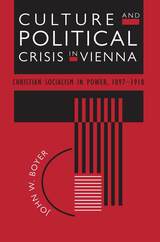 Culture and Political Crisis in Vienna: Christian Socialism in Power, 1897-1918
John W. Boyer
University of Chicago Press, 1995 In this sequel to Political Radicalism in Late Imperial Vienna, John Boyer picks up the history of the Christian Social movement after founder Karl Lueger's rise to power in Vienna in 1897 and traces its evolution from a group of disparate ward politicians, through its maturation into the largest single party in the Austrian parliament by 1907, to its major role in Imperial politics during the First World War.
Boyer argues that understanding the unprecedented success that this dissident bourgeois political group had in transforming the basic tenets of political life is crucial to understanding the history of the Central European state and the ways in which it was slowly undermined by popular electoral politics. The movement's efforts to save the Austrian Empire by trying to create an economically integrated but ethnically pluralistic state are particularly enlightening today in the shadow of ethnic violence in Sarajevo, where began the end of the Austrian Empire in 1914.
The most comprehensive account of any mass political movement in late-nineteenth century Central Europe, this two- volume work is crucial reading for anyone interested in Hapsburg history, German history or the history of social democracy.
Culture and Power in the Reconstitution of the Chinese Realm, 200-600
Scott Pearce
Harvard University Press, 2001 The period between the fall of the Han in 220 and the reunification of the Chinese realm in the late sixth century receives short shrift in most accounts of Chinese history. The period is usually characterized as one of disorder and dislocation, ethnic strife, and bloody court struggles. Its lone achievement, according to many accounts, is the introduction of Buddhism. In the eight essays of Culture and Power in the Reconstitution of the Chinese Realm, 200-600, the authors seek to chart the actual changes occurring in this period of disunion, and to show its relationship to what preceded and followed it.
This exploration of a neglected period in Chinese history addresses such diverse subjects as the era's economy, Daoism, Buddhist art, civil service examinations, forays into literary theory, and responses to its own history.
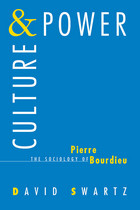 Culture and Power: The Sociology of Pierre Bourdieu
David Swartz
University of Chicago Press, 1997 Pierre Bourdieu is one of the world's most important social theorists and is also one of the great empirical researchers in contemporary sociology. However, reading Bourdieu can be difficult for those not familiar with the French cultural context, and until now a comprehensive introduction to Bourdieu's oeuvre has not been available.
David Swartz focuses on a central theme in Bourdieu's work—the complex relationship between culture and power—and explains that sociology for Bourdieu is a mode of political intervention. Swartz clarifies Bourdieu's difficult concepts, noting where they have been misinterpreted by critics and where they have fallen short in resolving important analytical issues. The book also shows how Bourdieu has synthesized his theory of practices and symbolic power from Durkheim, Marx, and Weber, and how his work was influenced by Sartre, Levi-Strauss, and Althusser.
Culture and Power is the first book to offer both a sympathetic and critical examination of Bourdieu's work and it will be invaluable to social scientists as well as to a broader audience in the humanities.
Culture and Practical Reason
Marshall Sahlins
University of Chicago Press, 1978 "The main thrust of this book is to deliver a major critique of materialist and rationalist explanations of social and cultural forms, but the in the process Sahlins has given us a much stronger statement of the centrality of symbols in human affairs than have many of our 'practicing' symbolic anthropologists. He demonstrates that symbols enter all phases of social life: those which we tend to regard as strictly pragmatic, or based on concerns with material need or advantage, as well as those which we tend to view as purely symbolic, such as ideology, ritual, myth, moral codes, and the like. . . ."—Robert McKinley, Reviews in Anthropology
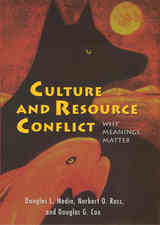 Culture and Resource Conflict: Why Meanings Matter
Douglas L. Medin
Russell Sage Foundation, 2006 In a multi-cultural society, differing worldviews among groups can lead to conflict over competing values and behaviors. Nowhere is this tension more concrete than in the wilderness, where people of different cultures hunt and fish for the same animals. White Americans tend to see nature as something external which they have some responsibility to care for. In contrast, Native Americans are more likely to see themselves as one with nature. In Culture and Resource Conflict, authors Douglas Medin, Norbert Ross, and Douglas Cox investigate the discord between whites and Menominee American Indians over hunting and fishing, and in the process, contribute to our understanding of how and why cultures so often collide. Based on detailed ethnographic and experimental research, Culture and Resource Conflict finds that Native American and European American hunters and fishermen have differing approaches—or mental models—with respect to fish and game, and that these differences lead to misunderstanding, stereotyping, and conflict. Menominee look at the practice of hunting and fishing for sport as a sign of a lack of respect for nature. Whites, on the other hand, define respect for nature more on grounds of resource management and conservation. Some whites believe—contrary to fact—that Native Americans are depleting animal populations with excessive hunting and fishing, while the Menominee protest that they only hunt what they need and make extensive use of their catch. Yet the authors find that, despite these differences, the two groups share the fundamental underlying goal of preserving fish and game for future generations, and both groups see hunting and fishing as deeply meaningful activities. At its core, the conflict between these two groups is more about mistrust and stereotyping than actual disagreement over values. Combining the strengths of psychology and anthropology, Culture and Resource Conflict shows how misunderstandings about the motives of others can lead to hostility and conflict. As debates over natural resources rage worldwide, this unique book demonstrates the obstacles that must be overcome for different groups to reach consensus over environmental policy.
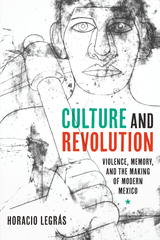 Culture and Revolution: Violence, Memory, and the Making of Modern Mexico
By Horacio Legrás
University of Texas Press, 2017 In the twenty years of postrevolutionary rule in Mexico, the war remained fresh in the minds of those who participated in it, while the enigmas of the revolution remained obscured. Demonstrating how textuality helped to define the revolution, Culture and Revolution examines dozens of seemingly ahistorical artifacts to reveal the radical social shifts that emerged in the war’s aftermath. Presented thematically, this expansive work explores radical changes that resulted from postrevolution culture, including new internal migrations; a collective imagining of the future; popular biographical narratives, such as that of the life of Frida Kahlo; and attempts to create a national history that united indigenous and creole elite society through literature and architecture. While cultural production in early twentieth-century Mexico has been well researched, a survey of the common roles and shared tasks within the various forms of expression has, until now, been unavailable. Examining a vast array of productions, including popular festivities, urban events, life stories, photographs, murals, literature, and scientific discourse (including fields as diverse as anthropology and philology), Horacio Legrás shows how these expressions absorbed the idiosyncratic traits of the revolutionary movement. Tracing the formation of modern Mexico during the 1920s and 1930s, Legrás also demonstrates that the proliferation of artifacts—extending from poetry and film production to labor organization and political apparatuses—gave unprecedented visibility to previously marginalized populations, who ensured that no revolutionary faction would unilaterally shape Mexico’s historical process during these formative years.
 Culture and Society in Lucian
Christopher P. Jones
Harvard University Press, 1986 The works of the second-century satirist Lucian--of which about seventy survive--have had a marked influence on western literature since the Renaissance. Translated by Erasmus, and called "inimitable" by Gibbon, Lucian is the first to tell the famous story of the Sorcerer's Apprentice. His subjects range from the hypocrisy of philosophers to fantastic voyages in space. He is often thought the true father of science fiction and, at the same time, is one of the most important witnesses to early Christianity. C. P Jones examines Lucian's work, setting this brilliant writer in the social and intellectual context of an age that proved pivotal in Greco-Roman history.
Lucian's art has been widely considered bookish, concerned with people and customs he and his readers knew only from literature. Jones argues that on the contrary his attacks on such targets as mercenary Stoics and the snake-god Glycon were aimed with mischievous precision. The result is a fresh portrait of Lucian and a vivid picture of a society whose outward assurance masked uncertainty and the onset of profound change.
Culture and Society: Twenty-Four Essays
George Peter Murdock
University of Pittsburgh Press, 1965
Twenty four essays cover a broad range of topics in cultural anthropology, and represent the best writings of George Peter Murdock and reveal his theoretical orientation and his many landmark contributions to the field.
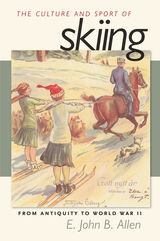 The Culture and Sport of Skiing: From Antiquity to World War ll
E. John B. Allen
University of Massachusetts Press, 2007 A comprehensive history of skiing from its earliest origins to the outbreak of World War II, this book traces the transformation of what for centuries remained an exclusively utilitarian practice into the exhilarating modern sport we know today. E. John B. Allen places particular emphasis on the impact of culture on the development of skiing, from the influence of Norwegian nationalism to the role of the military in countries as far removed as Austria, India, and Japan. Although the focus is on Europe, Allen's analysis ranges all over the snow-covered world, from Algeria to China to Zakopane. He also discusses the participation of women and children in what for much of its history remained a male-dominated sport.
Of all the individuals who contributed to the modernization of skiing before World War II, Allen identifies three who were especially influential: Fridtjof Nansen of Norway, whose explorations on skis paradoxically inspired the idea of skiing as sport; Arnold Lunn of England, whose invention of downhill skiing and the slalom were foundations of the sport's globalization; and Hannes Schneider, whose teachings introduced both speed and safety into the sport.
Underscoring the extent to which ancient ways persisted despite modernization, the book ends with the Russo-Finnish War, a conflict in which the Finns, using equipment that would have been familiar a thousand years before, were able to maneuver in snow that had brought the mechanized Soviet army to a halt.
More than fifty images not only illustrate this rich history but provide further opportunity for analysis of its cultural significance.
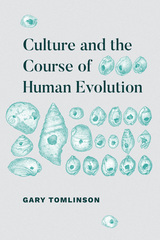 Culture and the Course of Human Evolution
Gary Tomlinson
University of Chicago Press, 2018 The rapid evolutionary development of modern Homo sapiens over the past 200,000 years is a topic of fevered interest in numerous disciplines. How did humans, while undergoing few physical changes from their first arrival, so quickly develop the capacities to transform their world? Gary Tomlinson’s Culture and the Course of Human Evolution is aimed at both scientists and humanists, and it makes the case that neither side alone can answer the most important questions about our origins.
Tomlinson offers a new model for understanding this period in our emergence, one based on analysis of advancing human cultures in an evolution that was simultaneously cultural and biological—a biocultural evolution. He places front and center the emergence of culture and the human capacities to create it, in a fashion that expands the conceptual framework of recent evolutionary theory. His wide-ranging vision encompasses arguments on the development of music, modern technology, and metaphysics. At the heart of these developments, he shows, are transformations in our species’ particular knack for signmaking. With its innovative synthesis of humanistic and scientific ideas, this book will be an essential text.
Culture and the Evolutionary Process
Robert Boyd and Peter J. Richerson
University of Chicago Press, 1985 How do biological, psychological, sociological, and cultural factors combine to change societies over the long run? Boyd and Richerson explore how genetic and cultural factors interact, under the influence of evolutionary forces, to produce the diversity we see in human cultures. Using methods developed by population biologists, they propose a theory of cultural evolution that is an original and fair-minded alternative to the sociobiology debate.
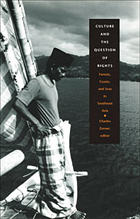 Culture and the Question of Rights: Forests, Coasts, and Seas in Southeast Asia
Charles Zerner, ed.
Duke University Press, 2003 This collection of ethnographic and interpretive essays fundamentally alters the debate over indigenous land claims in Southeast Asia and beyond. Based on fieldwork conducted in Malaysia and Indonesia during the 1980s and 1990s, these studies explore new terrain at the intersection of environmental justice, nature conservation, cultural performance, and the politics of making and interpreting claims. Calling for radical redefinitions of development and ownership and for new understandings of the translation of culture and rights in politically dangerous contexts—natural resource frontiers—this volume links social injustice and the degradation of Southeast Asian environments. Charles Zerner and his colleagues show how geographical areas once viewed as wild and undeveloped are actually cultural artifacts shaped by complex interactions with human societies. Drawing on richly varied sources of evidence and interpretation—from trance dances, court proceedings, tree planting patterns, marine and forest rituals, erotic poems, and codifications of customary law, Culture and the Question of Rights reveals the ironies, complexities, and histories of contemporary communities’ struggles to retain their gardens, forests, fishing territories, and graveyards. The contributors examine how these cultural activities work to both construct and to lay claim to nature. These essays open up new avenues for negotiating indigenous rights against a background of violence, proliferating markets, and global ideas of biodiversity and threatened habitat. Contributors. Jane Atkinson, Don Brenneis, Stephanie Fried, Nancy Peluso, Marina Roseman, Anna Tsing, Charles Zerner
Culture and the State in Late Chosŏn Korea
JaHyun Kim Haboush
Harvard University Press, 1999 Investigating the late sixteenth through the nineteenth century, this work looks at the shifting boundaries between the Choson state and the adherents of Confucianism, Buddhism, Christianity, and popular religions. Seeking to define the meaning and constitutive elements of the hegemonic group and a particular marginalized community in this Confucian state, the contributors argue that the power of each group and the space it occupied were determined by a dynamic interaction of ideology, governmental policies, and the group's self-perceptions.
Collectively, the volume counters the static view of the Korean Confucian state, elucidates its relationship to the wider Confucian community and religious groups, and suggests new views of the complex way in which each negotiated and adjusted its ideology and practices in response to the state's activities.
Culture and Value
Ludwig Wittgenstein
University of Chicago Press, 1980 The most wide-ranging and accessible thoughts of a philosophical genius, from his private notebooks
Throughout his life, Ludwig Wittgenstein reliably set down his thoughts in notebooks. This volume offers a selection of the most interesting and important of the remarks from those notebooks that deal with matters other than technical philosophical issues. In these pages, Wittgenstein reflects on religion, the work of philosophy, genius, music, architecture, and much more. Peter Winch's translation of Wittgenstein's remarks on culture and value presents all entries chronologically, with the German text alongside the English and a subject index for reference.
Culture and Well-Being: Anthropological Approaches to Freedom and Political Ethics
Alberto Corsin Jimenez
Pluto Press, 2008 The concept of well-being has emerged as a key category of social and political thought, especially in the fields of moral and political philosophy, development studies, and economics.
This book takes a critical look at the notion of well-being by examining what well-being means, or could mean, to people living in a number of different regions including Sudan, Nepal, Papua New Guinea, India, Sierra Leone, and the UK.
The contributors take issue with some of the assumptions behind Western concepts of well-being. They explore what characterizes a "good life" and how this idea has been affected by globalization and neoliberalism.
The book makes a major contribution to social theory by presenting new analytical models that make sense of the changing shapes of people's life and ethical values.
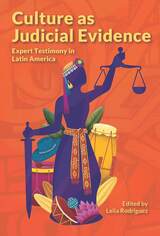 Culture as Judicial Evidence: Expert Testimony in Latin America
Edited by Leila Rodriguez
University of Minnesota Press, 2020 In Latin America, as early as 1975 testimony given under oath by anthropologists has been applied in the civil law systems in a number of Latin American countries. Called peritajes antropológicos culturales, this testimony can come in the form of written affidavits and/or oral testimony. These experts build bridges of intercultural dialogue, which overcome language and cultural barriers that have historically limited equal access to justice for indigenous and ethnic people all over the word.
Culture as Judicial Evidence in Latin America summarizes the current state of this work in six countries: Mexico, Costa Rica, Peru, Chile, Colombia, and Uruguay, and lays out the challenges and dilemmas involved in the creation and use of cultural expert testimony. Organized into three sections, the book advances a framework for the use of cultural evidence, and presents readers with nine case studies based on trials in six individual countries. These countries have implemented legal reform, constitutional amendments and the adoption of international legislation to create the legal frameworks that enable this new form of legal evidence to be admissible in Latin American courts. The contributing authors are cultural anthropologists with vast experience researching the impact of cultural expert witness testimony. A forward-looking final section examines the dilemmas and challenges of this work that remain to be solved.
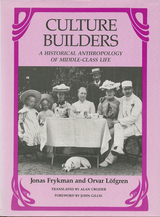 Culture Builders: A Historical Anthropology of Middle Class Life
Frykman, Jonas
Rutgers University Press, 1987 The culture of the bourgeoisie gradually came to dominate European society during the nineteenth century. Jonas Frykman and Orvar Löfgren examine how this new style of life developed and how it spread. They focus on Swedish society from 1880 to 1910, conceptualizing events and behavior in a way that applies to western culture in general during that era, and illustrate their yhemeswith contemporary photographs. Through their interpretation, we are reminded that middle-class culture is only one alternative among many, and not always the best.
Culture Builders deals primarily with the ways in which ideas about the good and proper life are anchored in the trivialities and routines of everyday life: in the sharing of a meal, in holiday-making, and in the upbringing of children. The authors describe how the attitudes of the bourgeoisie toward. Time and time-keeping set them apart from the peasantry. Uses and perceptions of naturals increasingly divided the classes. For peasants, nature consisted of natural resources to be used. Fr the bourgeoisie, nature had only non-productive connotations. Another change was the growing importance of home over the community. Life became a romantic ideal, not an economic necessity. For the first time, parents became self-conscious about how to raise their children.
Frykman and Lögnen also show how the middle-class developed new perceptions of dirt, pollution, orderliness, health, sexuality, and bodily functions, and how they disdained the filth of peasant households. By stressing refinement, rationality, morality, and discipline, the middle classes were able to differentiate themselves not only from the peasants, but also from the degenerate aristocracy and the disordered and uncontolled emerging working class. The bourgeoisie viewed their own form of culture as the highest on the evolutionary ladder, and turned it into a national culture against which all other groups would be measured.
Culture Change in a Bedouin Tribe: The ‘arab al-?gerat, Lower Galilee, A.D. 1790-1977
Rohn Eloul
University of Michigan Press, 2010 Against the historical dynamics of this complex region, this richly documented volume reconstructs the growth of the 'arab al-Ḥǧerāt of the Galilee from some five herding households at the end of the Ottoman eighteenth century into a thriving sedentary tribe of regional importance nearly 200 years later.
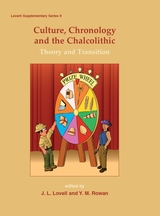 Culture, Chronology and the Chalcolithic
J. Lovell
Council for British Research in the Levant, 2011 To some, the Chalcolithic (4700/4500-3700/3600 BC cal.), as the first period with metallurgy, large sprawling villages, rich mortuary offerings, and cult centres, represents a developmental stage on the road to the urban Bronze Age, the "dawn of history". Others have called it 'the end of prehistory'. More recent scholarship focuses upon the diversification of the subsistence economy, elaborated craft production, and expanded networks for resource acquisition. Many of today's Chalcolithic specialists were taught by biblical archaeologists, such that the culture history paradigm remains deeply embedded. This volume grew out of a workshop held in Madrid in 2006 and aims to kick start a dialogue about how to move beyond culture history and chronology in order to re-engage with larger theoretical discourses. A vast swathe of research in the region ignores these issues and considers theory to be irrelevant. One has the impression that the political realities of the region (including a predilection for biblical archaeology) has left a large proportion of archaeologists in the region, including prehistorians, lost without a map. Contributors to this volume recognize that culture history is the platform upon which current archaeological research is discussed but differ in the degree of emphasis placed on previously defined entities or phases. Delineating levels of difference and similarity between temporal boundaries is critical in this process. The two themes of this volume - culture and chronology - combine the need for theoretical engagement with the establishment of broader, more precise empirical data using explicit classificatory schemes. This is, essentially, the rock and the hard place where much archaeological debate is wedged, and as such the volume will have resonance for scholars of other periods and regions.
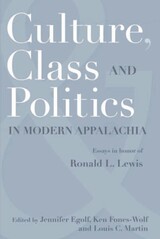 CULTURE, CLASS, AND POLITICS IN MODERN APPALACHIA: ESSAYS IN HONOR OF RONALD L. LEWIS
Edited by Jennifer Egolf, Ken Fones-Wolf, and Louis C. Martin
West Virginia University Press, 2009 Culture, Class, and Politics in Modern Appalachia takes stock of the field of Appalachian studies as it explores issues still at the center of its scholarship: culture, industrialization, the labor movement, and twentieth-century economic and political failure and their social impact. A new generation of scholars continues the work of Appalachian studies’ pioneers, exploring the diversity and complexity of the region and its people. Labor migrations from around the world transformed the region during its critical period of economic growth. Collective struggles over occupational health and safety, the environment, equal rights, and civil rights challenged longstanding stereotypes. Investigations of political and economic power and the role of social actors and social movements in Appalachian history add to the foundational work that demonstrates a dynamic and diverse region.
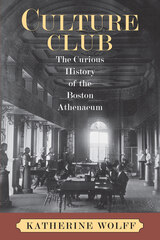 Culture Club: The Curious History of the Boston Athenaeum
Katherine Wolff
University of Massachusetts Press, 2009 Founded in 1807, the successor to a literary club called the Anthology Society, the Boston Athenaeum occupies an important place in the early history of American intellectual life. At first a repository for books, to which works of art were later added, the Athenaeum attracted over time a following that included such literary luminaries as Ralph Waldo Emerson and Henry James.
Yet from the outset, Katherine Wolff shows, the Boston Athenaeum was more than a library; it was also a breeding ground for evolving notions of cultural authority and American identity. Though governed by the Boston elite, who promoted it as a way of strengthening their own clout in the city, the early Athenaeum reflected conflicting and at times contradictory aims and motives on the part of its membership. On the one hand, by drawing on European aesthetic models to reinforce an exalted sense of mission, Athenaeum leaders sought to establish themselves as guardians of a nascent American culture. On the other, they struggled to balance their goals with their concerns about an increasingly democratic urban populace. As the Boston Athenaeum opened its doors to women as well as men outside its inner circle, it eventually began to define itself against a more accessible literary institution, the Boston Public Library.
Told through a series of provocative episodes and generously illustrated, Culture Club offers a more complete picture than previously available of the cultural politics behind the making of a quintessentially American institution.
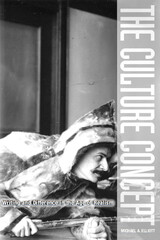 Culture Concept: Writing and Difference in the Age of Realism
Michael A. Elliott
University of Minnesota Press, 2002 Examines the prehistory of the American struggle to address cultural difference. "Culture" is a term we commonly use to explain the differences in our ways of living. In this book Michael A. Elliott returns to the moment this usage was first articulated, tracing the concept of culture to the writings-folktales, dialect literature, local color sketches, and ethnographies-that provided its intellectual underpinnings in turn-of-the-century America. The Culture Concept explains how this now-familiar definition of "culture" emerged during the late nineteenth century through the intersection of two separate endeavors that shared a commitment to recording group-based difference-American literary realism and scientific ethnography. Elliott looks at early works of cultural studies as diverse as the conjure tales of Charles Chesnutt, the Ghost Dance ethnography of James Mooney, and the prose narrative of the Omaha anthropologist-turned-author Francis La Flesche. His reading of these works-which struggle to find appropriate theoretical and textual tools for articulating a less chauvinistic understanding of human difference-is at once a recovery of a lost connection between American literary realism and ethnography and a productive inquiry into the usefulness of the culture concept as a critical tool in our time and times to come.
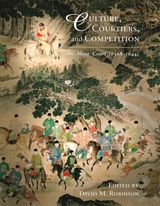 Culture, Courtiers, and Competition: The Ming Court (1368–1644)
David M. Robinson
Harvard University Press, 2008 This collection of essays reveals the Ming court as an arena of competition and negotiation, where a large cast of actors pursued individual and corporate ends, personal agency shaped protocol and style, and diverse people, goods, and tastes converged. Rather than observing an immutable set of traditions, court culture underwent frequent reinterpretation and rearticulation, processes driven by immediate personal imperatives, mediated through social, political, and cultural interaction.
The essays address several common themes. First, they rethink previous notions of imperial isolation, instead stressing the court’s myriad ties both to local Beijing society and to the empire as a whole. Second, the court was far from monolithic or static. Palace women, monks, craftsmen, educators, moralists, warriors, eunuchs, foreign envoys, and others strove to advance their interests and forge advantageous relations with the emperor and one another. Finally, these case studies illustrate the importance of individual agency. The founder’s legacy may have formed the warp of court practices and tastes, but the weft varied considerably. Reflecting the complexity of the court, the essays represent a variety of perspectives and disciplines—from intellectual, cultural, military, and political to art history and musicology.
 Culture, Ethnicity, and Justice in the South: The Southern Anthropological Society, 1968-1971
Southern Anthropological Southern Anthropological Society
University of Alabama Press, 2004 An important anthology putting the leading topics in Southern anthropology in the context of the 1960s Proceedings of the Southern Anthropological Society:
No. 1, Essays on Medical Anthropology (1968), edited by Thomas Weaver, with contributions by Frank J. Essene, Thomas Weaver, Charles Hudson, Helen Phillips, Hazel Hitson Weidman, Dorothea C. Leighton, Nora F. Cline, Peter Goethals, Berton H. Kaplan, Alice H. Murphree, John G. Peck, and Gianna Hochstein
No. 2, Urban Anthropology: Research Perspectives and Strategies (1968, edited by Elizabeth M. Eddy, with contributions by Charles Hudson, Elizabeth M. Eddy, Conrad M. Arensberg, Charles H. Fairbanks, H. W. Hutchinson, Anthony Leeds, Hans C. Buechler, Brian M. de Toit, Emilio Willems, Michael D. Olien, and John Gulick
No. 3, Concepts and Assumptions in Contemporary Anthropology (1969), edited by Stephen A. Tyler, with contributions by Charles Hudson, Stephen A. Tyler, Eric R. Wolf, Ann Fischer, E. Pendleton Banks, Munro S. Edmonson, Francis E. Johnston, William G. Haag, Arden R. King, and Jan Brukman
No. 4, The Not So Solid South: Anthropological Studies in a Regional Subculture (1971), edited by J. Kenneth Morland, with contributions by Charles Hudson, J. Kenneth Morland, Helen Phillips Keber, Jared Harper, Edward E. Knipe, Helen M. Lewis, Milton B. Newton Jr., Ronald J. Duncan, John Gordon, H. Eugene Hodges, William L. Partridge, Max E. Stanton, Robert Sayers, James L. Peacock, and Christopher Crocker
No. 5, Red, White, and Black: Symposium on Indians in the Old South (1971), edited by Charles M. Hudson, with contributions by Charles Hudson, Louis De Vorsey Jr., William S. Pollitzer, Mary R. Haas, David J. Hally, Charles H. Fairbanks, F. N. Boney, Joseph L. Brent III, William S. Willis Jr., John H. Peterson Jr., and Charles Crowe.
Originally distributed by the University of Georgia Press, are all combined herein with a historical overview in the new introduction by Miles Richardson and with a new index to the complete anthology.
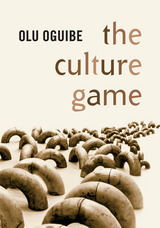 Culture Game
Olu Oguibe
University of Minnesota Press, 2004 An acclaimed artist and cultural provocateur reveals the hidden biases of the contemporary art world In self-congratulatory tones of tolerance and open-mindedness, the Western gatekeepers of the contemporary art world—gallery owners and museum curators, patrons and promoters—take great pains to demonstrate their inclusive vision of world culture. They highlight the Latin American show mounted “a few years ago” or the African works featured in a recent exhibition of non-Western artists. Non-Western artists soon discover that this veneer of liberalism masks an array of unwritten, unspoken, and unseemly codes and quotas dictating the acquisition and exhibition of their works and the success of their careers. In past decades, cultural institutions and the critical establishment in the West resisted difference; today, they are obsessed with exoticism. Both attitudes reflect firmly entrenched prejudices that prescribe the rules of what Nigerian-born artist, curator, and scholar Olu Oguibe terms the “culture game.” In the celebrated, controversial essays gathered here, Oguibe exposes the disparities and inconsistencies of the reception and treatment afforded Western and non-Western artists; the obstacles that these contradictions create for non-Western and minority artists, especially those who live and practice in the Western metropolis; and the nature and peculiar concerns of contemporary non-Western art as it deals with the ramifications and residues of the colonial encounter as well as its own historical and cultural past. Ranging from the impact of the West’s appetite for difference on global cultural relations and the existence of a digital Third World to the African redefinition of modernity, Oguibe’s uncompromising and unapologetic criticism provides a uniquely global vision of contemporary art and culture.
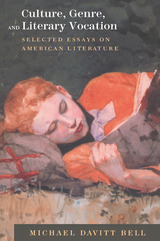 Culture, Genre, and Literary Vocation: Selected Essays on American Literature
Michael Davitt Bell
University of Chicago Press, 2000 In Culture, Genre, and Literary Vocation, Michael Davitt Bell charts the important and often overlooked connection between literary culture and authors' careers. Bell's influential essays on nineteenth-century American writers—originally written for such landmark projects as The Columbia Literary History of the United States and The Cambridge History of American Literature—are gathered here with a major new essay on Richard Wright.
Throughout, Bell revisits issues of genre with an eye toward the unexpected details of authors' lives, and invites us to reconsider the hidden functions that terms such as "romanticism" and "realism" served for authors and their critics. Whether tracing the demands of the market or the expectations of readers, Bell examines the intimate relationship between literary production and culture; each essay closely links the milieu in which American writers worked with the trajectory of their storied careers.
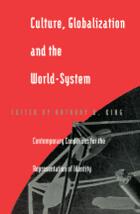 Culture, Globalization and the World-System: Contemporary Conditions for the Representation of Identity
Anthony D. King
University of Minnesota Press, 1997 A foundational work in the study of the globalization of culture. First published in 1991, Culture, Globalization and the World-System is one of the inaugural books discussing the increasing tendency of cultural practices to cross national boundaries. Now widely available in the United States for the first time and updated with a new preface, these influential essays by a distinguished group of scholars and cultural critics lay the groundwork for a vital and exciting new field of inquiry. Culture, Globalization and the World-System views culture through different prisms and categories—including race, gender, ethnicity, class, and nation. The contributors consider how socially organized systems of meaning are produced and represented. Drawing from sociology, art history, film studies, and anthropology, these essays—many of them representing their authors’ only treatment of globalization—provide paradigms for understanding cultures and the representation of identity in “the world as a single place.” Contributors: Barbara Abou-El-Haj, SUNY, Binghamton; Janet Abu-Lughod, New School for Social Research; Stuart Hall, Open U, UK; Ulf Hannerz, U of Stockholm, Sweden; Roland Robertson, U of Pittsburgh; John Tagg, SUNY, Binghamton; Maureen Turim, U of Florida, Gainesville; Immanuel Wallerstein, SUNY, Binghamton; Janet Wolff, U of Rochester.
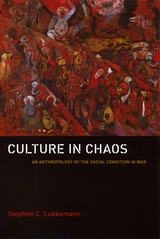 Culture in Chaos: An Anthropology of the Social Condition in War
Stephen C. Lubkemann
University of Chicago Press, 2007 Fought in the wake of a decade of armed struggle against colonialism, the Mozambican civil war lasted from 1977 to 1992, claiming hundreds of thousands of lives while displacing millions more. As conflicts across the globe span decades and generations, Stephen C. Lubkemann suggests that we need a fresh perspective on war when it becomes the context for normal life rather than an exceptional event that disrupts it. Culture in Chaos calls for a new point of departure in the ethnography of war that investigates how the inhabitants of war zones live under trying new conditions and how culture and social relations are transformed as a result.
Lubkemann focuses on how Ndau social networks were fragmented by wartime displacement and the profound effect this had on gender relations. Demonstrating how wartime migration and post-conflict return were shaped by social struggles and interests that had little to do with the larger political reasons for the war, Lubkemann contests the assumption that wartime migration is always involuntary. His critical reexamination of displacement and his engagement with broader theories of agency and social change will be of interest to anthropologists, political scientists, historians, and demographers, and to anyone who works in a war zone or with refugees and migrants.
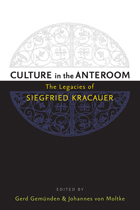 Culture in the Anteroom: The Legacies of Siegfried Kracauer
Edited by Gerd Gemünden and Johannes von Moltke
University of Michigan Press, 2012 Culture in the Anteroom introduces an English-speaking readership to the full range of Siegfried Kracauer's work as novelist, architect, journalist, sociologist, historian, exile critic, and theorist of visual culture. This interdisciplinary anthology---including pieces from Miriam Bratu Hansen, Andreas Huyssen, Noah Isenberg, Lutz Koepnick, Eric Rentschler, and Heide Schlüpmann---brings together literary and film scholars, historians and art historians, sociologists, and architects to address the scope and current relevance of a body of work dedicated to investigating all aspects of modernism and modernity. The contributors approach Kracauer's writings from a variety of angles, some by placing them in dialogue with his contemporaries in Weimar Germany and the New York Intellectuals of the 1940s and '50s; others by exploring relatively unknown facets of Kracauer's oeuvre by considering his contributions to architectural history, the history of radio as well as other new media, and museum and exhibition culture.
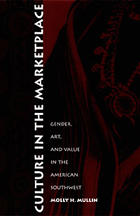 Culture in the Marketplace: Gender, Art, and Value in the American Southwest
Molly H. Mullin
Duke University Press, 2001 In the early twentieth century, a group of elite East coast women turned to the American Southwest in search of an alternative to European-derived concepts of culture. In Culture in the Marketplace Molly H. Mullin provides a detailed narrative of the growing influence that this network of women had on the Native American art market—as well as the influence these activities had on them—in order to investigate the social construction of value and the history of American concepts of culture.
Drawing on fiction, memoirs, journalistic accounts, and extensive interviews with artists, collectors, and dealers, Mullin shows how anthropological notions of culture were used to valorize Indian art and create a Southwest Indian art market. By turning their attention to Indian affairs and art in Santa Fe, New Mexico, she argues, these women escaped the gender restrictions of their eastern communities and found ways of bridging public and private spheres of influence. Tourism, in turn, became a means of furthering this cultural colonization. Mullin traces the development of aesthetic worth as it was influenced not only by politics and profit but also by gender, class, and regional identities, revealing how notions of “culture” and “authenticity” are fundamentally social ones. She also shows how many of the institutions that the early patrons helped to establish continue to play an important role in the contemporary market for American Indian art.
This book will appeal to audiences in cultural anthropology, art history, American studies, women’s studies, and cultural history.
 Culture Incorporated: Museums, Artists, And Corporate Sponsorships
Mark W. Rectanus
University of Minnesota Press, 2002 An exposé of the hidden costs of corporate funding of the arts Photographer Annie Leibowitz collaborates with American Express on a portrait exhibition. Absolut Vodka engages artists for their advertisements. Philip Morris mounts an "Arts Against Hunger" campaign in partnership with prominent museums. Is it art or PR, and where is the line that separates the artistic from the corporate? According to Mark Rectanus, that line has blurred. These mergers of art, business, and museums, he argues, are examples of the worldwide privatization of cultural funding. In Culture Incorporated, Rectanus calls for full disclosure of corporate involvement in cultural events and examines how corporations, art institutions, and foundations are reshaping the cultural terrain. In turn, he also shows how that ground is destabilized by artists subverting these same institutions to create a heightened awareness of critical alternatives. Rectanus exposes how sponsorship helps maintain social legitimation in a time when corporations are the target of significant criticism. He provides wide-ranging examples of artists and institutions grappling with corporate sponsorship, including artists’s collaboration with sponsors, corporate sponsorship of museum exhibitions, festivals, and rock concerts, and cybersponsoring. Throughout, Rectanus analyzes the convergence of cultural institutions with global corporate politics and its influence on our culture and our communities.
 Culture Keeping: White Mothers, International Adoption, and the Negotiation of Family Difference
Heather Jacobson
Vanderbilt University Press, 2008 Since the early 1990s, close to 250,000 children born abroad have been adopted into the United States. Nearly half of these children have come from China or Russia. Culture Keeping: White Mothers, International Adoption, and the Negotiation of Family Difference offers the first comparative analysis of these two popular adoption programs. Heather Jacobson examines these adoptions by focusing on a relatively new social phenomenon, the practice by international adoptive parents, mothers in particular, of incorporating aspects of their children's cultures of origin into their families' lives. "Culture keeping" is now standard in the adoption world, though few adoptive parents, the majority of whom are white and native-born, have experience with the ethnic practices of their children's homelands prior to adopting. Jacobson follows white adoptive mothers as they navigate culture keeping: from their motivations, to the pressures and constraints they face, to the content of their actual practices concerning names, food, toys, travel, cultural events, and communities of belonging. Through her interviews, she explores how women think about their children, their families, and themselves as mothers as they labor to construct or resist ethnic identities for their children, who may be perceived as birth children (because they are white) or who may be perceived as adopted (because of racial difference). The choices these women make about culture, Jacobson argues, offer a window into dominant ideas of race and the "American Family," and into how social differences are conceived and negotiated in the United States.
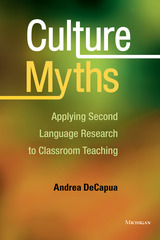 Culture Myths: Applying Second Language Research to Classroom Teaching
Andrea DeCapua
University of Michigan Press, 2018 Culture Myths is intended for all educators who work with culturally and linguistically diverse students. The book is designed to help readers observe, evaluate, and appreciate cultural differences in values, beliefs, behaviors, attitudes, and worldviews by focusing on the underlying and mostly invisible reasons for these differences. Developing an awareness of one's own cultural assumptions deepens understanding and empathy and contributes to the breaking down of the cultural barriers that can affect communication. A goal of this book is to help readers strike a balance between minimizing cultural differences and assuming similarities across cultures on one hand, and exoticizing other cultures or accentuating surface differences on the other. The myths about culture as it relates to the classroom that are explored in this book are: - We are all human beings, so how different can we really be?
- The goal of education is to develop each individual’s potential.
- Focusing on conversational skills in the classroom is overrated.
- Not looking at the teacher shows disrespect.
- How something is said is not as important as what is said.
- Everyone knows what a good instructional environment is.
- By the time students get to middle or high school, they know how to be a student.
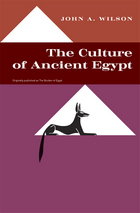 The Culture of Ancient Egypt
John A. Wilson
University of Chicago Press, 1956 The story of Egypt is the story of history itself—the endless rise and fall, the life and death and life again of the eternal human effort to endure, enjoy, and understand the mystery of our universe. Emerging from the ancient mists of time, Egypt met the challenge of the mystery in a glorious evolution of religious, intellectual, and political institutions and for two millenniums flourished with all the vigor that the human heart can invest in a social and cultural order. Then Egypt began to crumble into the desert sands and the waters of the Nile, and her remarkable achievements in civilization became her lingering epitaph. John A. Wilson has written a rich and interpretive biography of one of the greatest cultural periods in human experience. He answers—as best the modern Egyptologist can—the questions inevitably asked concerning the dissolution of Egypt's glory. Here is scholarship in its finest form, concerned with the humanity that has preceded us, and finding in man's past grandeur and failure much meaning for men of today.
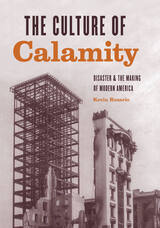 The Culture of Calamity: Disaster and the Making of Modern America
Kevin Rozario
University of Chicago Press, 2007 Turn on the news and it looks as if we live in a time and place unusually consumed by the specter of disaster. The events of 9/11 and the promise of future attacks, Hurricane Katrina and the destruction of New Orleans, and the inevitable consequences of environmental devastation all contribute to an atmosphere of imminent doom. But reading an account of the San Francisco earthquake of 1906, with its vivid evocation of buildings “crumbling as one might crush a biscuit,” we see that calamities—whether natural or man-made—have long had an impact on the American consciousness.
Uncovering the history of Americans’ responses to disaster from their colonial past up to the present, Kevin Rozario reveals the vital role that calamity—and our abiding fascination with it—has played in the development of this nation. Beginning with the Puritan view of disaster as God’s instrument of correction, Rozario explores how catastrophic events frequently inspired positive reactions. He argues that they have shaped American life by providing an opportunity to take stock of our values and social institutions. Destruction leads naturally to rebuilding, and here we learn that disasters have been a boon to capitalism, and, paradoxically, indispensable to the construction of dominant American ideas of progress.
As Rozario turns to the present, he finds that the impulse to respond creatively to disasters is mitigated by a mania for security. Terror alerts and duct tape represent the cynical politician’s attitude about 9/11, but Rozario focuses on how the attacks registered in the popular imagination—how responses to genuine calamity were mediated by the hyperreal thrills of movies; how apocalyptic literature, like the best-selling Left Behind series, recycles Puritan religious outlooks while adopting Hollywood’s style; and how the convergence of these two ways of imagining disaster points to a new postmodern culture of calamity. The Culture of Calamity will stand as the definitive diagnosis of the peculiarly American addiction to the spectacle of destruction.
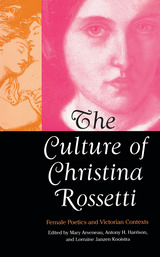 The Culture of Christina Rossetti: Female Poetics and Victorian Contexts
Mary Arseneau
Ohio University Press, 1999 The Culture of Christina Rossetti explores a “new” Christina Rossetti as she emerges from the scrutiny of the particular historical and cultural context in which she lived and wrote. The essays in this collection demonstrate how the recluse, saint, and renunciatory spinster of former studies was in fact an active participant in her society’s attempt to grapple with new developments in aesthetics, theology, science, economics, and politics. The volume examines Rossetti’s poetry, fiction, and nonfiction from a variety of theoretical and critical perspectives in order to reevaluate her place in the Victorian world of art, literature, and ideas. The essays offer a radical rethinking of her best-known poems, retrieve neglected works, establish the diversity of her writing, and reposition Rossetti within a canon continually under formation. Contributing to the ongoing retrieval of the nineteenth-century woman poet, The Culture of Christina Rossetti highlights Rossetti’s responses to both male and female literary traditions and explores her incorporation and revision of literary influences from medieval Italian sources to contemporary writers.
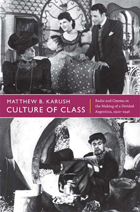 Culture of Class: Radio and Cinema in the Making of a Divided Argentina, 1920-1946
Matthew B. Karush
Duke University Press, 2012 In an innovative cultural history of Argentine movies and radio in the decades before Peronism, Matthew B. Karush demonstrates that competition with jazz and Hollywood cinema shaped Argentina's domestic cultural production in crucial ways, as Argentine producers tried to elevate their offerings to appeal to consumers seduced by North American modernity. At the same time, the transnational marketplace encouraged these producers to compete by marketing "authentic" Argentine culture. Domestic filmmakers, radio and recording entrepreneurs, lyricists, musicians, actors, and screenwriters borrowed heavily from a rich tradition of popular melodrama. Although the resulting mass culture trafficked in conformism and consumerist titillation, it also disseminated versions of national identity that celebrated the virtue and dignity of the poor, while denigrating the wealthy as greedy and mean-spirited. This anti-elitism has been overlooked by historians, who have depicted radio and cinema as instruments of social cohesion and middle-class formation. Analyzing tango and folk songs, film comedies and dramas, radio soap operas, and other genres, Karush argues that the Argentine culture industries generated polarizing images and narratives that provided much of the discursive raw material from which Juan and Eva Perón built their mass movement.
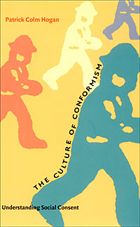 The Culture of Conformism: Understanding Social Consent
Patrick Colm Hogan
Duke University Press, 2001 “[Hogan’s] goal is not merely to explain but to provide tools of understanding that will be of practical value to those who struggle for justice and freedom. Drawing from an impressive array of sources, his valuable study advances both ends considerably, no mean accomplishment.”—Noam Chomsky In this wide-ranging and informative work, Patrick Colm Hogan draws on cognitive science, psychoanalysis, and social psychology to explore the cultural and psychological components of social consent. Focusing in particular on Americans’ acquiescence to a system that underpays and underrepresents the vast majority of the population, Hogan moves beyond typical studies of this phenomenon by stressing more than its political and economic dimensions.
With new insights into particularly insideous forms of consent such as those manifest in racism, sexism, and homophobia, The Culture of Conformism considers the role of emotion as it works in conjunction with belief and with the formation of group identity. Arguing that coercion is far more pervasive in democratic societies than is commonly recognized, Hogan discusses the subtle ways in which economic and social pressures operate to complement the more obviously violent forces of the police and military. Addressing issues of narcissism, self-esteem, and empathy, he also explains the concept of “rational” conformity—that is, the degree to which our social consent is based on self-interest—and explores the cognitive factors that produce and sustain social ideology.
Social activists, economic theorists, social psychologists, and political scientists will be intrigued and informed by this book.
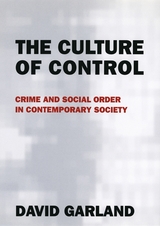 The Culture of Control: Crime and Social Order in Contemporary Society
David Garland
University of Chicago Press, 2001 The past 30 years have seen vast changes in our attitudes toward crime. More and more of us live in gated communities; prison populations have skyrocketed; and issues such as racial profiling, community policing, and "zero-tolerance" policies dominate the headlines. How is it that our response to crime and our sense of criminal justice has come to be so dramatically reconfigured? David Garland charts the changes in crime and criminal justice in America and Britain over the past twenty-five years, showing how they have been shaped by two underlying social forces: the distinctive social organization of late modernity and the neoconservative politics that came to dominate the United States and the United Kingdom in the 1980s.
Garland explains how the new policies of crime and punishment, welfare and security—and the changing class, race, and gender relations that underpin them—are linked to the fundamental problems of governing contemporary societies, as states, corporations, and private citizens grapple with a volatile economy and a culture that combines expanded personal freedom with relaxed social controls. It is the risky, unfixed character of modern life that underlies our accelerating concern with control and crime control in particular. It is not just crime that has changed; society has changed as well, and this transformation has reshaped criminological thought, public policy, and the cultural meaning of crime and criminals. David Garland's The Culture of Control offers a brilliant guide to this process and its still-reverberating consequences.
A Culture of Corruption?: Coping with Government in Post-communist Europe
William L. Miller
Central European University Press, 2001 Based upon surveys and interviews with government officials and citizens, this book focuses on issues such as bribery, corruption, inefficiency and freedom of information in Ukraine, Bulgaria, Slovakia and the Czech Republic. The authors go beyond an analysis of public perceptions and behaviour and look at public attitudes towards proposals for reform. They reveal how the problem of citizens' interactions with officials varies in kind as well as in degree across the countries of Central and Eastern Europe.
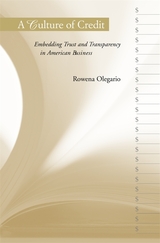 A Culture of Credit: Embedding Trust and Transparency in American Business
Rowena Olegario
Harvard University Press, 2006 In the growing and dynamic economy of nineteenth-century America, businesses sold vast quantities of goods to one another, mostly on credit. This book explains how business people solved the problem of whom to trust--how they determined who was deserving of credit, and for how much. In the process, a business system based largely on information circulating through personal networks became dependent on more formalized methods and institutions. First to appear in the 1830s was the credit reporting agency, whose pioneers included the abolitionist Lewis Tappan, and businessmen John Bradstreet and Robert G. Dun (whose firms merged in 1933 to form Dun & Bradstreet). Later, groups of business creditors formed interchanges and bureaus to share information on their customers' payment records. In 1896, the National Association of Credit Men was established, and by 1920, credit men had established both a national credit information clearinghouse and a bureau for American exporters.
These developments forced American businesses, large and small, to make their financial situations more transparent to creditors and credit reporting firms. Rowena Olegario traces the way resistance, mutual suspicion, skepticism, and legal challenges were overcome in the relentless quest to make information on business borrowers more accurate and available.
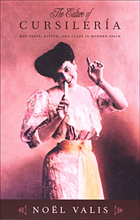 The Culture of Cursilería: Bad Taste, Kitsch, and Class in Modern Spain
Noel Valis
Duke University Press, 2002 Not easily translated, the Spanish terms cursi and cursilería refer to a cultural phenomenon widely prevalent in Spanish society since the nineteenth century. Like "kitsch," cursi evokes the idea of bad taste, but it also suggests one who has pretensions of refinement and elegance without possessing them. In The Culture of Cursilería, Noël Valis examines the social meanings of cursi, viewing it as a window into modern Spanish history and particularly into the development of middle-class culture. Valis finds evidence in literature, cultural objects, and popular customs to
argue that cursilería has its roots in a sense of cultural inadequacy felt by the lower middle classes in nineteenth- and early-twentieth-century Spain. The Spain of this era, popularly viewed as the European power most resistant to economic and social modernization, is characterized by Valis as suffering from nostalgia for a bygone, romanticized society that structured itself on strict class delineations. With the development of an economic middle class during the latter half of the nineteenth century, these designations began to break down, and individuals across all levels of the middle class exaggerated their own social status in an attempt to protect their cultural capital. While the resulting manifestations of cursilería were often provincial, indeed backward, the concept was—and still is—closely associated with a sense of home. Ultimately, Valis shows how cursilería embodied the disparity between old ways and new, and how in its awkward manners, airs of pretension, and graceless anxieties it represents Spain's uneasy surrender to the forces of modernity.
The Culture of Cursilería will interest students and scholars of Latin America, cultural studies, Spanish literature, and modernity.
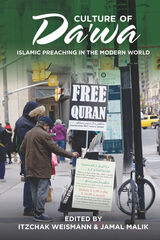 Culture of Da'wa: Preaching in the Modern World
Edited by Itzchak Weismann and Jamil Malik
University of Utah Press, 2020 This book provides the first in-depth, wide-scope treatment of da’wa. A term difficult to translate, da’wa covers a semantic field ranging from the call or invitation to Islam, to religious preaching and proselytizing, to the mission and message of Islam. Historically da’wa has been directed outward to nonbelievers, but in modern times it has turned increasingly inward to “straying” Muslims. While the media and many scholars have focused on extremism and militant groups that have raised the banner of jihad, this volume argues that da’wa, not jihad, forms the backbone of modern Islamic politics and religiosity, and that the study of da’wa is essential for understanding contemporary Islamic politics as well as jihadist activity. Contributors represent a variety of approaches and come from a range of academic, religious, and national backgrounds. In these essays, they analyze the major discourses of da’wa, their embodiment in the major Islamic movements of the twentieth century, and their transformation into new forms of activism through the media, the state, and jihadi groups—including al-Qaeda and ISIS—in the twenty-first century.
 The Culture of Digital Scholarship in Academic Libraries
Robin Chin Roemer
American Library Association, 2019 At the heart of digital scholarship are universal questions, lessons, and principles relating both to the mission of higher education and the shared values that make an academic library culture. But while global in aspirations, digital scholarship starts with local culture drawn from the community. Editors Chin Roemer and Kern invite you into their institutional workspace, the University of Washington, gathering voices from a range of positions that speak to the facets of digital scholarship. This mosaic of perspectives reveals the challenges, questions, and personalities that sit at the nexus of academic libraries and digital scholarship culture. Reflecting on UW’s approach, you’ll gain insights for your own institution on topics such as - ways to create awareness of digital services through training;
- supporting students as creators of content;
- blending existing analog collections with ongoing digital initiatives using a media lab;
- creating a campus-wide, discipline agnostic, data repository service;
- how a popular digital storytelling workshop spawned digital scholarship across campus;
- digital scholarship consultations, viewed from an instructional technologist’s approach;
- the place of digital scholarship in the fabric of a revitalized urban community;
- four strategies for teaching research skills within an online-only bachelor’s degree program; and
- assessment findings from focus groups, surveys, digital pedagogy projects, and Omeka case studies.
By thoroughly exploring a single institution, this unique volume elucidates the many ways in which digital scholarship can express the values, priorities, opportunities, and challenges of the community’s intellectual and technical environment.
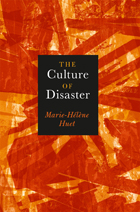 The Culture of Disaster
Marie-Hélène Huet
University of Chicago Press, 2012 From antiquity through the Enlightenment, disasters were attributed to the obscure power of the stars or the vengeance of angry gods. As philosophers sought to reassess the origins of natural disasters, they also made it clear that humans shared responsibility for the damages caused by a violent universe. This far-ranging book explores the way writers, thinkers, and artists have responded to the increasingly political concept of disaster from the Enlightenment until today. Marie-Hélène Huet argues that post-Enlightenment culture has been haunted by the sense of emergency that made natural catastrophes and human deeds both a collective crisis and a personal tragedy. From the plague of 1720 to the cholera of 1832, from shipwrecks to film dystopias, disasters raise questions about identity and memory, technology, control, and liability. In her analysis, Huet considers anew the mythical figures of Medusa and Apollo, theories of epidemics, earthquakes, political crises, and films such as Blow-Up and Blade Runner. With its scope and precision, The Culture of Disaster will appeal to a wide public interested in modern culture, philosophy, and intellectual history.
 The Culture of Education
Jerome Bruner
Harvard University Press, 1996 What we don't know about learning could fill a book--and it might be a schoolbook. In a masterly commentary on the possibilities of education, the eminent psychologist Jerome Bruner reveals how education can usher children into their culture, though it often fails to do so. Applying the newly emerging "cultural psychology" to education, Bruner proposes that the mind reaches its full potential only through participation in the culture--not just its more formal arts and sciences, but its ways of perceiving, thinking, feeling, and carrying out discourse. By examining both educational practice and educational theory, Bruner explores new and rich ways of approaching many of the classical problems that perplex educators.
Education, Bruner reminds us, cannot be reduced to mere information processing, sorting knowledge into categories. Its objective is to help learners construct meanings, not simply to manage information. Meaning making requires an understanding of the ways of one's culture--whether the subject in question is social studies, literature, or science. The Culture of Education makes a forceful case for the importance of narrative as an instrument of meaning making. An embodiment of culture, narrative permits us to understand the present, the past, and the humanly possible in a uniquely human way.
Going well beyond his earlier acclaimed books on education, Bruner looks past the issue of achieving individual competence to the question of how education equips individuals to participate in the culture on which life and livelihood depend. Educators, psychologists, and students of mind and culture will find in this volume an unsettling criticism that challenges our current conventional practices--as well as a wise vision that charts a direction for the future.
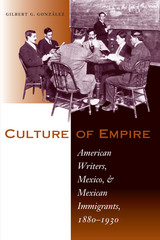 Culture of Empire: American Writers, Mexico, and Mexican Immigrants, 1880–1930
By Gilbert G. González
University of Texas Press, 2003 A history of the Chicano community cannot be complete without taking into account the United States' domination of the Mexican economy beginning in the late nineteenth and early twentieth centuries, writes Gilbert G. González. For that economic conquest inspired U.S. writers to create a "culture of empire" that legitimated American dominance by portraying Mexicans and Mexican immigrants as childlike "peons" in need of foreign tutelage, incapable of modernizing without Americanizing, that is, submitting to the control of U.S. capital. So powerful was and is the culture of empire that its messages about Mexicans shaped U.S. public policy, particularly in education, throughout the twentieth century and even into the twenty-first. In this stimulating history, Gilbert G. González traces the development of the culture of empire and its effects on U.S. attitudes and policies toward Mexican immigrants. Following a discussion of the United States' economic conquest of the Mexican economy, González examines several hundred pieces of writing by American missionaries, diplomats, business people, journalists, academics, travelers, and others who together created the stereotype of the Mexican peon and the perception of a "Mexican problem." He then fully and insightfully discusses how this misinformation has shaped decades of U.S. public policy toward Mexican immigrants and the Chicano (now Latino) community, especially in terms of the way university training of school superintendents, teachers, and counselors drew on this literature in forming the educational practices that have long been applied to the Mexican immigrant community.
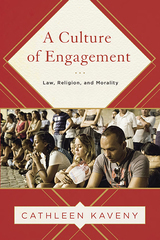 A Culture of Engagement: Law, Religion, and Morality
Cathleen Kaveny
Georgetown University Press Religious traditions in the United States are characterized by ongoing tension between assimilation to the broader culture, as typified by mainline Protestant churches, and defiant rejection of cultural incursions, as witnessed by more sectarian movements such as Mormonism and Hassidism. However, legal theorist and Catholic theologian Cathleen Kaveny contends there is a third possibility—a culture of engagement—that accommodates and respects tradition. It also recognizes the need to interact with culture to remain relevant and to offer critiques of social, political, legal, and economic practices. Kaveny suggests that rather than avoid the crisscross of the religious and secular spheres of life, we should use this conflict as an opportunity to come together and to encounter, challenge, contribute to, and correct one another. Focusing on five broad areas of interest—Law as a Teacher, Religious Liberty and Its Limits, Conversations about Culture, Conversations about Belief, and Cases and Controversies—Kaveny demonstrates how thoughtful and purposeful engagement can contribute to rich, constructive, and difficult discussions between moral and cultural traditions. This provocative collection of Kaveny's articles from Commonweal magazine, substantially revised and updated from their initial publication, provides astonishing insight into a range of hot-button issues like abortion, assisted suicide, government-sponsored torture, contraception, the Ashley Treatment, capital punishment, and the role of religious faith in a pluralistic society. At turns masterful and inspirational, A Culture of Engagement is a welcome reminder of what can be gained when a diversity of experiences and beliefs is brought to bear on American public life.
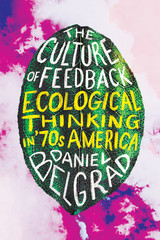 The Culture of Feedback: Ecological Thinking in Seventies America
Daniel Belgrad
University of Chicago Press, 2019 When we want advice from others, we often casually speak of “getting some feedback.” But how many of us give a thought to what this phrase means? The idea of feedback actually dates to World War II, when the term was developed to describe the dynamics of self-regulating systems, which correct their actions by feeding their effects back into themselves. By the early 1970s, feedback had become the governing trope for a counterculture that was reoriented and reinvigorated by ecological thinking.
The Culture of Feedback digs deep into a dazzling variety of left-of-center experiences and attitudes from this misunderstood period, bringing us a new look at the wild side of the 1970s. Belgrad shows us how ideas from systems theory were taken up by the counterculture and the environmental movement, eventually influencing a wide range of beliefs and behaviors, particularly related to the question of what is and is not intelligence. He tells the story of a generation of Americans who were struck by a newfound interest in—and respect for—plants, animals, indigenous populations, and the very sounds around them, threading his tapestry with cogent insights on environmentalism, feminism, systems theory, and psychedelics. The Culture of Feedback repaints the familiar image of the ’70s as a time of Me Generation malaise to reveal an era of revolutionary and hopeful social currents, driven by desires to radically improve—and feed back into—the systems that had come before.
The Culture of Inequality
Michael Lewis
University of Massachusetts Press, 1993 We are currently updating our website and have not yet posted complete information for this title. Many of our books are in the Google preview program, which allows readers to view up to 20% of the book. If this title is active in the program, you will find the Google Preview button in the sidebar below.
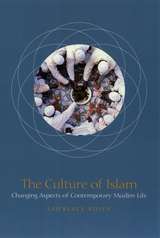 The Culture of Islam: Changing Aspects of Contemporary Muslim Life
Lawrence Rosen
University of Chicago Press, 2002 Having worked for several decades in North Africa, anthropologist Lawrence Rosen is uniquely placed to ask what factors contribute to the continuity and changes characterizing the present-day Muslim world. In The Culture of Islam, he brings his erudition and his experiences to illuminating key aspects of Muslim life and how central tenets of that life are being challenged and culturally refashioned.
Through a series of poignant tales—from the struggle by a group of friends against daily corruption to the contest over a saint's identity, from nostalgia for the departed Jews to Salman Rushdie's vision of doubt in a world of religious certainty—Rosen shows how a dazzling array of potential changes are occurring alongside deeply embedded continuity, a process he compares to a game of chess in which infinite variations of moves can be achieved while fundamental aspects of "the game" have had a remarkably enduring quality. Whether it is the potential fabrication of new forms of Islam by migrants to Europe (creating a new "Euro-Islam," as Rosen calls it), the emphasis put on individuals rather than institutions, or the heartrending problems Muslims may face when their marriages cross national boundaries, each story and each interpretation offers a window into a world of contending concepts and challenged coherence.
The Culture of Islam is both an antidote to simplified versions of Islam circulating today and a consistent story of the continuities that account for much of ordinary Muslim life. It offers, in its human stories and its insights, its own contribution, as the author says, "to the mutual understanding and forgiveness that alone will make true peace possible."
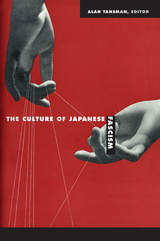 The Culture of Japanese Fascism
Alan Tansman, ed.
Duke University Press, 2009 This bold collection of essays demonstrates the necessity of understanding fascism in cultural terms rather than only or even primarily in terms of political structures and events. Contributors from history, literature, film, art history, and anthropology describe a culture of fascism in Japan in the decades preceding the end of the Asia-Pacific War. In so doing, they challenge past scholarship, which has generally rejected descriptions of pre-1945 Japan as fascist. The contributors explain how a fascist ideology was diffused throughout Japanese culture via literature, popular culture, film, design, and everyday discourse. Alan Tansman’s introduction places the essays in historical context and situates them in relation to previous scholarly inquiries into the existence of fascism in Japan. Several contributors examine how fascism was understood in the 1930s by, for example, influential theorists, an antifascist literary group, and leading intellectuals responding to capitalist modernization. Others explore the idea that fascism’s solution to alienation and exploitation lay in efforts to beautify work, the workplace, and everyday life. Still others analyze the realization of and limits to fascist aesthetics in film, memorial design, architecture, animal imagery, a military museum, and a national exposition. Contributors also assess both manifestations of and resistance to fascist ideology in the work of renowned authors including the Nobel-prize-winning novelist and short-story writer Kawabata Yasunari and the mystery writers Edogawa Ranpo and Hamao Shirō. In the work of these final two, the tropes of sexual perversity and paranoia open a new perspective on fascist culture. This volume makes Japanese fascism available as a critical point of comparison for scholars of fascism worldwide. The concluding essay models such work by comparing Spanish and Japanese fascisms. Contributors. Noriko Aso, Michael Baskett, Kim Brandt, Nina Cornyetz, Kevin M. Doak, James Dorsey, Aaron Gerow, Harry Harootunian, Marilyn Ivy, Angus Lockyer, Jim Reichert, Jonathan Reynolds, Ellen Schattschneider, Aaron Skabelund, Akiko Takenaka, Alan Tansman, Richard Torrance, Keith Vincent, Alejandro Yarza
The Culture of Kitharoidia
Timothy Power
Harvard University Press, 2010 Kitharoidia was arguably the most popular, most geographically widespread, and longest-running performance genre in antiquity. From the archaic period to the late Roman imperial era, citharodes enjoyed star status, playing their songs to vast crowds at festival competitions and concerts throughout the Mediterranean world.
The Culture of Kitharoidia is the first study dedicated exclusively to the art, practice, and charismatic persona of the citharode. Traversing a wide range of discourse and imagery about kitharoidia—poetic and prose texts, iconography, inscriptions—the book offers a nuanced account of the aesthetic and sociocultural complexities of citharodic song and examines the iconic role of the songmakers in the popular imagination, from mythical citharodes such as Orpheus to the controversial innovator Timotheus, to that most notorious of musical dilettantes, Nero.
The Culture of Korean Industry: An Ethnography of Poongsan Corporation
Choong Soon Kim
University of Arizona Press, 1992 As Americans become more conscious of trade competition from Japan, Korea looms large as another source of high-quality goods. What accounts for Korea's ability to compete in foreign markets, and what distinguishes it from its island neighbor? Anthropologist Kim sheds light on this question through an ethnography of a South Korean manufacturer, showing how Korean values, ethics, and other cultural traits such as kinship networks are translated into organizational structure and economic life.
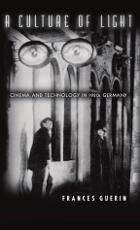 A Culture of Light: Cinema and Technology in 1920s Germany
Frances Guerin
University of Minnesota Press, 2005 Cinema is a medium of light. And during Weimar Germany's advance to technological modernity, light - particularly the representational possibilities of electrical light - became the link between the cinema screen and the rapid changes that were transforming German life.In Frances Guerin's compelling history of German silent cinema of the 1920s, the innovative use of light is the pivot around which a new conception of a national cinema, and a national culture emerges. Guerin depicts a nocturnal Germany suffused with light - electric billboards, storefronts, police searchlights - and shows how this element of the mise-en-scene came to reflect both the opportunities and the anxieties surrounding modernity and democracy. Guerin's interpretations center on use of light in films such as Schatten (1923), Variete (1925), Metropolis (1926), and Der Golem (1920). In these films we see how light is the substance of image composition, the structuring device of the narrative, and the central thematic concern. This history relieves German films of the responsibility to explain the political and ideological instability of the period, an instability said to be the uncertain foundation of Nazism. In unlocking this dubious link, A Culture of Light redefines the field of German film scholarship.
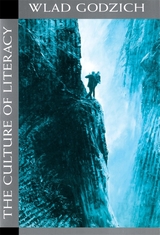 The Culture of Literacy
Wlad Godzich
Harvard University Press, 1994 At the onset of modernity in the sixteenth century, literature and history were wrenched apart. Wlad Godzich, one of the animators of the turn toward literary theory, seeks to restore historical consciousness to criticism after a period of painful depression. In this sweeping study, he considers the emergence of the modern state, the institutions and disciplines of culture and learning, as well as the history of philosophy, the history of historiography, and literary history itself. He offers a powerful account of semiotics; an important critical perspective on narratology; a profound discussion of deconstruction; and many brief, practical demonstrations of why Kant, Hegel, and Heidegger remain essential resources for contemporary critical thought.
The culture of literacy is on the wane, Godzich argues. Throughout the modern period, language has been the institution that provided the condition of possibility for all other institutions, from university to church to state. But the pervasive crisis of meaning we now experience is the result of a shift in the modes of production of knowledge. The culture of literacy has been faced with transformations it cannot accommodate, and the existing organization of knowledge has been challenged. By wedding literature to a reflective practice of history, Godzich leads us toward a critique of political reason, and a profound sense of how postmodernity can overcome by deftly sidestepping the modern. This book will bring to a wider audience the work of a writer who is recognized as one of the most commanding figures of his generation for range, learning, and capacity for innovation.
 The Culture of Love: Victorians to Moderns
Stephen Kern
Harvard University Press The Culture of Love interprets the sweeping change in loving that spanned a period when scientific discoveries reduced the terrors and dangers of sex, when new laws gave married women control over their earnings and their bodies, when bold novelists and artists shook off the prudishness and hypocrisy that so paralyzed the Victorians. As public opinion, family pressure, and religious conviction loosened, men and women took charge of their love. Stephen Kern argues that, in contrast to modern sex, Victorian sex was anatomically constricted, spatially confined, morally suspect, deadly serious, and abruptly over.
Kern divides love into its elements and traces profound changes in each: from waiting for love to ending it. Most revealing are the daring ways moderns began to talk about their current lovemaking as well as past lovers. While Victorians viewed jealousy as a "foreign devil," moderns began to acknowledge responsibility for it. Desire lost its close tie with mortal sin and became the engine of artistic creation; women's response to the marriage proposal shifted from mere consent to active choice. There were even new possibilities of kissing, beyond the sudden, blind, disembodied, and censored Victorian meeting of lips.
Kern's evidence is mainly literature and art, including classic novels by the Brontës, Flaubert, Hugo, Eliot, Hardy, Forster, Colette, Proust, Mann, Joyce, Woolf, Lawrence, Hemingway, Fitzgerald, and Musil as well as the paintings and sculptures of Millais, Courbet, Gérôme, Rodin, Munch, Klimt, Schiele, Valadon, Chagall, Kandinsky, Kokoschka, Picasso, Matisse, and Brancusi. The book's conceptual foundation comes from Heidegger's existential philosophy, in particular his authentic-inauthentic distinction, which Kern adapts to make his overall interpretation and concluding affirmation of the value of authenticity: "The moderns may have lost some of the Victorians' delicacy and poignancy, perhaps even some of their heroism, but in exchange became more reflective of what it means to be a human being in love and hence better able to make that loving more their very own."
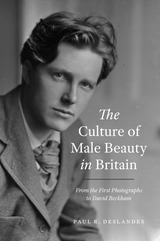 The Culture of Male Beauty in Britain: From the First Photographs to David Beckham
Paul R. Deslandes
University of Chicago Press, 2021 A heavily illustrated history of two centuries of male beauty in British culture.
Spanning the decades from the rise of photography to the age of the selfie, this book traces the complex visual and consumer cultures that shaped masculine beauty in Britain, examining the realms of advertising, health, pornography, psychology, sport, and celebrity culture. Paul R. Deslandes chronicles the shifting standards of male beauty in British culture—from the rising cult of the athlete to changing views on hairlessness—while connecting discussions of youth, fitness, and beauty to growing concerns about race, empire, and degeneracy. From earlier beauty show contestants and youth-obsessed artists, the book moves through the decades into considerations of disfigured soldiers, physique models, body-conscious gay men, and celebrities such as David Beckham and David Gandy who populate the worlds of television and social media.
Deslandes calls on historians to take beauty and gendered aesthetics seriously while recasting how we think about the place of physical appearance in historical study, the intersection of different forms of high and popular culture, and what has been at stake for men in “looking good.”
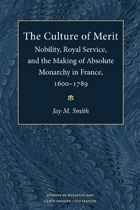 The Culture of Merit: Nobility, Royal Service, and the Making of Absolute Monarchy in France, 1600-1789
Jay M. Smith
University of Michigan Press, 1996 The eighteenth century's critique of privilege and its commitment to the idea of advancement by merit are widely regarded as sources of modernity. But if meritocratic values were indeed the product of the Enlightenment and the French Revolution, how do we explain earlier attention to merit--especially the nobility whose values the Revolution rejected? The Culture of Merit probes this paradox by analyzing changing perceptions of merit among the old nobility from the age of Louis XIII to the eve of the French Revolution.
Jay M. Smith argues that the early modern nobility instinctively drew a correlation between the meaning of merit and an image of the "sovereign's gaze." In the early seventeenth century, merit meant the qualities traditionally associated with aristocratic values: generosity, fidelity, and honor. Nobles sought to display those qualities before the appreciative gaze of the king himself. But the expansion of the monarchy forced the routinization of the sovereign's gaze, and Louis XIV began to affirm and reward new qualities--talent and application--besides those thought innately noble.
The contradictions implicit within the absolute monarchy's culture of merit are demonstrated by the eighteenth-century French army, which was dominated by the nobility, but also committed to efficiency and expertise. Smith shows that the army's continuous efforts to encourage and reward "merit" led to a clash of principles. The ever-growing emphasis on talent and discipline led reformers--the great majority of them noble--to attack the most egregious examples of privilege and favoritism in the army. Smith's analysis of the long-term evolution in conceptions of royal service suggests a new explanation for the shift in values signified by the French Revolution. The transition away from the "personal" gaze of the king toward the "public" gaze of the monarchy and nation foretold the triumph of a new culture of merit in which noble birth would have no meaning.
The Culture of Merit will interest historians and other social scientists concerned with issues of aristocratic identity, state formation, professionalization, and the changing political culture of pre-Revolutionary France.
Jay M. Smith is Assistant Professor of History, University of North Carolina, Chapel Hill.
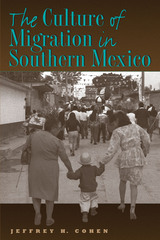 The Culture of Migration in Southern Mexico
By Jeffrey H. Cohen
University of Texas Press, 2004 Migration is a way of life for many individuals and even families in the Mexican state of Oaxaca. Some who leave their rural communities go only as far as the state capital, while others migrate to other parts of Mexico and to the United States. Most send money back to their communities, and many return to their homes after a few years. Migration offers Oaxacans economic opportunities that are not always available locally—but it also creates burdens for those who stay behind. This book explores the complex constellation of factors that cause rural Oaxacans to migrate, the historical and contemporary patterns of their migration, the effects of migration on families and communities, and the economic, cultural, and social reasons why many Oaxacans choose not to migrate. Jeffrey Cohen draws on fieldwork and survey data from twelve communities in the central valleys of Oaxaca to give an encompassing view of the factors that drive migration and determine its outcomes. He demonstrates conclusively that, while migration is an effective way to make a living, no single model can explain the patterns of migration in southern Mexico.
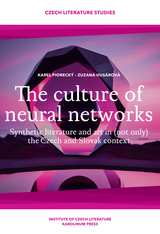 The Culture of Neural Networks: Synthetic Literature and Art in (Not Only) the Czech and Slovak Context
Zuzana Husárová and Karel Piorecký
Karolinum Press, 2024 Contextualizes literary texts and other cultural artifacts generated using the latest technological techniques.
The possibilities of generated cultural production have undergone fundamental changes in recent years, leading to a rethinking of existing approaches to the text and the artwork as such. To grasp this process, Zuzana Husárová and Karel Piorecký propose the term “neural network culture,” which captures a wide range of generative practices and reception mechanisms. The Culture of Neural Networks contextualizes the phenomenon of literary texts and other artifacts generated using the latest technological techniques. The generation of literary texts using neural networks is part of a broader cultural process, to which this publication formulates a position through the lens of literary science, media theory, and art theory.
The scholarly debate over this topic has been inconsistent—on the one hand, it underestimates the diachronic connections between generated texts and the tradition of experimental and conceptual literature; on the other hand, it does not sufficiently clarify the new-generation procedures and the contribution of human and technological actors in them. Therefore, Husárová and Piorecký propose the notion of synthetic textual art, which reflects the specific roles of the different actors involved in generative practice and its intermedial nature. In doing so, they approach the topic from both historical and theoretical perspectives, analyzing the current state of generative practice in all three basic literary types and in the intermedial space using selected foreign and Czech-Slovak projects. This state of affairs is often distorted in media discourse and even mythicized in terms of the capabilities of “artificial intelligence”; therefore, a critical analysis of this media discourse is essential. Finally, the authors summarize the implications of this stage in the development of generative practice on creativity theory and literary theory.
The Culture of Photography in Public Space
Edited by Anne Marsh, Melissa Miles, and Daniel Palmer
Intellect Books, 2015 From privacy concerns regarding Google Street View to surveillance photography’s association with terrorism and sexual predators, photography as an art has become complex terrain upon which anxieties about public space have been played out. Yet the photographic threat is not limited to the image alone. A range of social, technological, and political issues converge in these rising anxieties and affect the practice, circulation, and consumption of contemporary public photography today. The Culture of Photography in Public Space collects essays and photographs that offer a new response to these restrictions, the events, and the anxieties that give rise to them.
 The Culture of Property: The Crisis of Liberalism in Modern Britain
Jordanna Bailkin
University of Chicago Press, 2004 What kind of property is art? Is it property at all? Jordanna Bailkin's The Culture of Property offers a new historical response to these questions, examining ownership disputes over art objects and artifacts during the crisis of liberalism in the United Kingdom. From the 1870s to the 1920s, Britons fought over prized objects from ancient gold ornaments dug up in an Irish field to a portrait of the Duchess of Milan at the National Gallery in London. They fought to keep these objects in Britain, to repatriate them to their points of origin, and even to destroy them altogether. Bailkin explores these disputes in order to investigate the vexed status of property within modern British politics as well as the often surprising origins of ongoing institutional practices. Bailkin's detailed account of these struggles illuminates the relationship between property and citizenship, which has constituted the heart of liberal politics as well as its greatest weakness.
Drawing on court transcripts, gallery archives, exhibition reviews, private correspondence—and a striking series of cartoons and photographs—The Culture of Property traverses the history of gender, material culture, urban life, colonialism, Irish and Scottish nationalism, and British citizenship. This fascinating book challenges recent scholarship in museum studies in light of ongoing culture wars. It should be required reading for cultural policy makers, museum professionals, and anyone interested in the history of art and Britain.
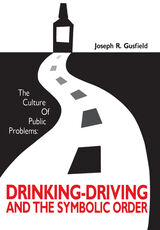 The Culture of Public Problems: Drinking-Driving and the Symbolic Order
Joseph R. Gusfield
University of Chicago Press, 1980 "Everyone knows 'drunk driving' is a 'serious' offense. And yet, everyone knows lots of 'drunk drivers' who don't get involved in accidents, don't get caught by the police, and manage to compensate adequately for their 'drunken disability.' Everyone also knows of 'drunk drivers' who have been arrested and gotten off easy. Gusfield's book dissects the conventional wisdom about 'drinking-driving' and examines the paradox of a 'serious' offense that is usually treated lightly by the judiciary and rarely carries social stigma."—Mac Marshall, Social Science and Medicine
"A sophisticated and thoughtful critic. . . . Gusfield argues that the 'myth of the killer drunk' is a creation of the 'public culture of law.' . . . Through its dramatic development and condemnation of the anti-social character of the drinking-driver, the public law strengthens the illusion of moral consensus in American society and celebrates the virtues of a sober and orderly world."—James D. Orcutt, Sociology and Social Research
"Joseph Gusfield denies neither the role of alcohol in highway accidents nor the need to do something about it. His point is that the research we conduct on drinking-driving and the laws we make to inhibit it tells us more about our moral order than about the effects of drinking-driving itself. Many will object to this conclusion, but none can ignore it. Indeed, the book will put many scientific and legal experts on the defensive as they face Gusfield's massive erudition, pointed analysis and criticism, and powerful argumentation. In The Culture of Public Problems, Gusfield presents the experts, and us, with a masterpiece of sociological reasoning."—Barry Schwartz, American Journal of Sociology
This book is truly an outstanding achievement. . . . It is sociology of science, sociology of law, sociology of deviance, and sociology of knowledge. Sociologists generally should find the book of great theoretical interest, and it should stimulate personal reflection on their assumptions about science and the kind of consciousness it creates. They will also find that the book is a delight to read."—William B. Bankston, Social Forces
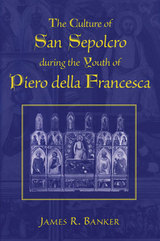 The Culture of San Sepolcro during the Youth of Piero della Francesca
James R. Banker
University of Michigan Press, 2003 The paintings of Piero della Francesca have remained intriguing because of their distinctive three-dimensional space and unemotional figures, but the artist himself remains a mystery. Curiously, his activities were not confined to painting. He wrote treatises on perspective, commercial arithmetic, and geometry, all without ever settling in any of the centers of great intellectual achievement. James R.Banker has unearthed previously undiscovered documents that make it possible for him to write a social biography of the artist that accounts for his early formation. The Culture of San Sepolcro during the Youth of Piero della Francesca examines the culture of the southeastern Tuscan town of Piero's youth. Analyses of San Sepolcro's political and social organization and its specific religious culture serve to enhance our understanding of Piero's early career prior to his experiences in Florence.
Piero della Francesca has remained an enigma because of the contradictions observed in his life and art. Banker's archival research has enabled him to clear away some of the obscurities. This book situates Piero in the earliest social and intellectual worlds within which he moved. Heretofore, writers on Piero have begun his putative formation in Florence in 1439. Banker demonstrates that the young painter's formation began prior to 1439, when he was surrounded by his family and the local artisans' community.
The Culture of San Sepolcro during the Youth of Piero della Francesca integrates social and art history in order to better understand the formation of a Renaissance artist. It will be vital to scholars and historians of the Italian Renaissance city states, as well as to art historians and those interested in the relationship of art and society.
James R. Banker is Professor of History, North Carolina State University.
The Culture of Sensibility: Sex and Society in Eighteenth-Century Britain
G. J. Barker-Benfield
University of Chicago Press, 1992 G. J. Barker-Benfield documents the emergence of the culture of sensibility that transformed British society of the eighteenth century. His account focuses on the rise of new moral and spiritual values and the struggle to redefine the group identities of men and women. Drawing on the full spectrum of eighteenth-century thought from Adam Smith to John Locke, from the Earl of Shaftesberry to Dr. George Cheyne, and especially Mary Wollstonecraft, Barker-Benfield offers an innovative and compelling way to understand how Britain entered the modern age.
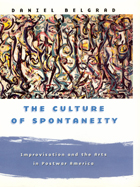 The Culture of Spontaneity: Improvisation and the Arts in Postwar America
Daniel Belgrad
University of Chicago Press, 1998 The Culture of Spontaneity is the first comprehensive history of the postwar avant-garde, integrating such diverse moments in American culture as abstract expressionism, bebop jazz, gestalt therapy, Black Mountain College, Jungian psychology, beat poetry, experimental dance, Zen Buddhism, Alfred North Whitehead's cosmology, and the antinuclear movement. Daniel Belgrad shows how a startling variety of artistic movements actually had one unifying theme: spontaneous improvisation.
"A compelling narrative, putting living flesh on shorthand intuitions that connect North Beach to Black Mountain College, Fenollosa to Pollock, Jackson Lears's No Place of Grace to Todd Gitlin's The Sixties."—Joel Smith, Boston Review
"An invaluable introduction to postwar modernism across the arts."—Thomas Augst, Boston Book Review
"Belgrad's extensive probing of the artists and movements with their profound sociological roots is timely as well as comprehensive....A major contribution for serious scholars."—Choice
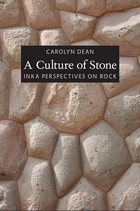 A Culture of Stone: Inka Perspectives on Rock
Carolyn Dean
Duke University Press, 2010 A major contribution to both art history and Latin American studies, A Culture of Stone offers sophisticated new insights into Inka culture and the interpretation of non-Western art. Carolyn Dean focuses on rock outcrops masterfully integrated into Inka architecture, exquisitely worked masonry, and freestanding sacred rocks, explaining how certain stones took on lives of their own and played a vital role in the unfolding of Inka history. Examining the multiple uses of stone, she argues that the Inka understood building in stone as a way of ordering the chaos of unordered nature, converting untamed spaces into domesticated places, and laying claim to new territories. Dean contends that understanding what the rocks signified requires seeing them as the Inka saw them: as potentially animate, sentient, and sacred. Through careful analysis of Inka stonework, colonial-period accounts of the Inka, and contemporary ethnographic and folkloric studies of indigenous Andean culture, Dean reconstructs the relationships between stonework and other aspects of Inka life, including imperial expansion, worship, and agriculture. She also scrutinizes meanings imposed on Inka stone by the colonial Spanish and, later, by tourism and the tourist industry. A Culture of Stone is a compelling multidisciplinary argument for rethinking how we see and comprehend the Inka past.
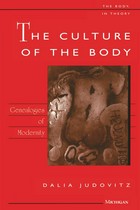 The Culture of the Body: Genealogies of Modernity
Dalia Judovitz
University of Michigan Press, 2001 What is the body? How was it culturally constructed, conceived, and cultivated before and after the advent of rationalism and modern science? This interdisciplinary study elaborates a cultural genealogy of the body and its legacies to modernity by tracing its crucial redefinition from a live anatomical entity to disembodied, mechanical and virtual analogs.
The study ranges from Baroque, pre-Cartesian interpretations of body and embodiment, to the Cartesian elaboration of ontological difference and mind-body dualism, and it concludes with the parodic and violent aftermath of this legacy to the French Enlightenment. It engages work by philosophical authors such as Montaigne, Descartes and La Mettrie, as well as literary works by d'Urfé, Corneille and the Marquis de Sade. The examination of sexuality and the emergence of sexual difference as a dominant mode of embodiment are central to the book's overall design. The work is informed by philosophical accounts of the body (Nietzsche, Foucault, Merleau-Ponty), by feminist theory (Butler, Irigaray, Bordo), as well as by literary and cultural historians (Scarry, Stewart, Bynum, etc.) and historians of science (Canguilhem, Pagel, and Temkin), among others. It will appeal to scholars of literature, philosophy, French studies, critical theory, feminist theory, cultural historians and historians of science and technology.
Dalia Judovitz is Professor of French, Emory University. She is also author of Unpacking Duchamp: Art in Transit and Subjectivity and Representation in Decartes: The Origins of Modernity.
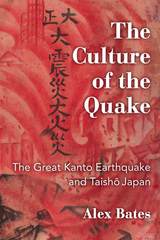 The Culture of the Quake: The Great Kanto Earthquake and Taisho Japan
Alex Bates
University of Michigan Press, 2015 The Culture of the Quake is first and foremost an exploration of Taishō-era narrative fiction. Every major film studio produced earthquake films, and authors from I-novelists to modernists, proletarian writers to popular fiction writers wrote something on the earthquake. In every case pre-existing attitudes toward their work shaped the way these people represented the earthquake, and yet the overwhelming destruction and mass suffering also posed particular challenges in representation. How could one show the pain without exploitation? Other scholars have looked at some of these groups of writers or filmmakers individually, but there are no studies looking at how they each tackled a similar subject. The Great Kanto Earthquake is an understudied event that has only recently caught the attention of scholars. By focusing on the way it was represented in high and low culture, The Culture of the Quake gives insight into how people experienced the disaster and how they interpreted it in the years following. This book should be of interest to scholars of Japanese and Asian literature, film, culture, and history, and scholars of disaster studies.
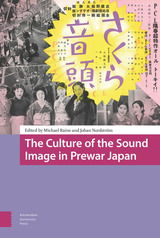 The Culture of the Sound Image in Prewar Japan
Michael Raine
Amsterdam University Press, 2021 This collection of essays explores the development of electronic sound recording in Japanese cinema, radio, and popular music to illuminate the interrelationship of aesthetics, technology, and cultural modernity in prewar Japan. Putting the cinema at the center of a ‘culture of the sound image’, it restores complexity to a media transition that is often described simply as slow and reluctant. In that vibrant sound culture, the talkie was introduced on the radio before it could be heard in the cinema, and pop music adaptations substituted for musicals even as cinema musicians and live narrators resisted the introduction of recorded sound. Taken together, the essays show that the development of sound technology shaped the economic structure of the film industry and its labour practices, the intermedial relation between cinema, radio, and popular music, as well as the architecture of cinemas and the visual style of individual Japanese films and filmmakers.
The Culture of Time and Space, 1880–1918: With a New Preface
Stephen Kern
Harvard University Press, 2003 Stephen Kern writes about the sweeping changes in technology and culture between 1880 and World War I that created new modes of understanding and experiencing time and space. To mark the book’s twentieth anniversary, Kern provides an illuminating new preface about the breakthrough in interpretive approach that has made this a seminal work in interdisciplinary studies.
 The Culture of Violence: Essays on Tragedy and History
Francis Barker
University of Chicago Press, 1993 'Culture' and 'violence' have always been regarded as antithetical terms. In The Culture of Violence, Francis Barker takes a different view.
Central to his argument is the contention that, contrary to post-Enlightenment humanist, liberal and conservative thought, 'culture' does not necessarily stand in opposition to political inequality and social injustice, but may be complicit with the oppressive exercise of power.
The book focuses on Shakespearean tragedy and on the historicism and culturalism of much present-day cultural theory. Barker's analysis moves dialectically backwards and forwards between these two moments in order to illuminate aspects of early modern culture, and to critique the ways in which the complicity between culture and violence has been occluded. Rejecting the tendency of both modernism and post-modernism to homogenise historical time, Barker argues for a genuinely new, 'diacritical' understanding of the violence of history.
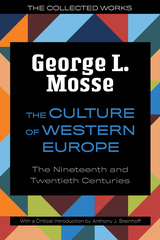 The Culture of Western Europe: The Nineteenth and Twentieth Centuries
George L. Mosse with a critical introduction by Anthony James Steinhoff
University of Wisconsin Press, 2023 The Culture of Western Europe, George L. Mosse’s sweeping cultural history, was originally published in 1961 and revised and expanded in 1974 and 1988. Originating from the lectures at the University of Wisconsin–Madison for which Mosse would become famous, the book addresses, in crisp and accessible language, the key issues he saw as animating the movement of culture in Europe. Mosse emphasizes the role of both rational and irrational forces in making modern Europe, beginning with the interplay between eighteenth-century rationalism and nineteenth-century Romanticism. He traces cultural and political movements in all areas of society, especially nationalism but also economics, class identity and conflict, religion and morality, family structure, medicine, and art. This new edition restores the original 1961 illustrations and features a critical introduction by Anthony J. Steinhoff, professor in the department of history at the Université du Québec à Montréal, contextualizing Mosse’s project and arguing for its continued relevance today.
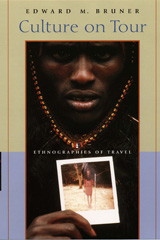 Culture on Tour: Ethnographies of Travel
Edward M. Bruner
University of Chicago Press, 2004 Recruited to be a lecturer on a group tour of Indonesia, Edward M. Bruner decided to make the tourists aware of tourism itself. He photographed tourists photographing Indonesians, asking the group how they felt having their pictures taken without their permission. After a dance performance, Bruner explained to the group that the exhibition was not traditional, but instead had been set up specifically for tourists. His efforts to induce reflexivity led to conflict with the tour company, which wanted the displays to be viewed as replicas of culture and to remain unexamined. Although Bruner was eventually fired, the experience became part of a sustained exploration of tourist performances, narratives, and practices.
Synthesizing more than twenty years of research in cultural tourism, Culture on Tour analyzes a remarkable variety of tourist productions, ranging from safari excursions in Kenya and dance dramas in Bali to an Abraham Lincoln heritage site in Illinois. Bruner examines each site in all its particularity, taking account of global and local factors, as well as the multiple perspectives of the various actors—the tourists, the producers, the locals, and even the anthropologist himself. The collection will be essential to those in the field as well as to readers interested in globalization and travel.
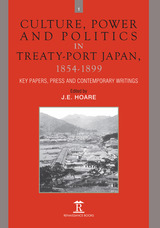 Culture, Power and Politics in Treaty-Port Japan, 1854-1899: Key Papers, Press and Contemporary writings
James Hoare
Amsterdam University Press, 2018 This two–volume collection, supported by an in-depth introduction that addresses origins, actuality, endgame and afterlife, brings together for the first time contemporary documentation and more recent scholarship to give a broad picture of Japan’s Treaty Ports and their inhabitants at work and play in the second half of the nineteenth century. The material selected, shows how the ports’ existence and the Japanese struggle to end their special status, impacted on many aspects of modern Japan beyond their primary role as trading stations. Compared with their counterparts in China, the Japanese treaty ports cast a small shadow. They were far fewer – only four really mattered – and lasted for just under fifty years, while the Chinese ports made their centenary. Yet the Japanese ports were important. The thriving modern cities of Yokohama and Kobe had their origins as treaty ports. Nagasaki, a major centre of foreign trade since at least the sixteenth century, may not have owed so much to its treaty-port status, but it was a factor in its modern development.
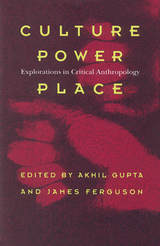 Culture, Power, Place: Explorations in Critical Anthropology
Akhil Gupta and James Ferguson, eds.
Duke University Press, 1997 Anthropology has traditionally relied on a spatially localized society or culture as its object of study. The essays in Culture, Power, Place demonstrate how in recent years this anthropological convention and its attendant assumptions about identity and cultural difference have undergone a series of important challenges. In light of increasing mass migration and the transnational cultural flows of a late capitalist, postcolonial world, the contributors to this volume examine shifts in anthropological thought regarding issues of identity, place, power, and resistance. This collection of both new and well-known essays begins by critically exploring the concepts of locality and community; first, as they have had an impact on contemporary global understandings of displacement and mobility, and, second, as they have had a part in defining identity and subjectivity itself. With sites of discussion ranging from a democratic Spain to a Puerto Rican barrio in North Philadelphia, from Burundian Hutu refugees in Tanzania to Asian landscapes in rural California, from the silk factories of Hangzhou to the long-sought-after home of the Palestinians, these essays examine the interplay between changing schemes of categorization and the discourses of difference on which these concepts are based. The effect of the placeless mass media on our understanding of place—and the forces that make certain identities viable in the world and others not—are also discussed, as are the intertwining of place-making, identity, and resistance as they interact with the meaning and consumption of signs. Finally, this volume offers a self-reflective look at the social and political location of anthropologists in relation to the questions of culture, power, and place—the effect of their participation in what was once seen as their descriptions of these constructions. Contesting the classical idea of culture as the shared, the agreed upon, and the orderly, Culture, Power, Place is an important intervention in the disciplines of anthropology and cultural studies. Contributors. George E. Bisharat, John Borneman, Rosemary J. Coombe, Mary M. Crain, James Ferguson, Akhil Gupta, Kristin Koptiuch, Karen Leonard, Richard Maddox, Lisa H. Malkki, John Durham Peters, Lisa Rofel
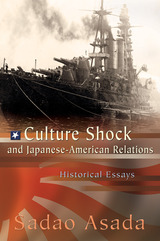 Culture Shock and Japanese-American Relations: Historical Essays
Sadao Asada
University of Missouri Press, 2007 Ever since Commodore Perry sailed into Uraga Channel, relations between the United States and Japan have been characterized by culture shock. Now a distinguished Japanese historian critically analyzes contemporary thought, public opinion, and behavior in the two countries over the course of the twentieth century, offering a binational perspective on culture shock as it has affected their relations. In these essays, Sadao Asada examines the historical interaction between these two countries from 1890 to 2006, focusing on naval strategy, transpacific racism, and the atomic bomb controversy. For each topic, he offers a rigorous analysis of both American and Japanese perceptions, showing how cultural relations and the interchange of ideas have been complex—and occasionally destructive. Culture Shock and Japanese-American Relations contains insightful essays on the influence of Alfred Mahan on the Japanese navy and on American images of Japan during the 1920s. Other essays consider the progressive breakdown of relations between the two countries and the origins of the Pacific War from the viewpoint of the Japanese navy, then tackle the ultimate shock of the atomic bomb and Japan’s surrender, tracing changing perceptions of the decision to use the bomb on both sides of the Pacific over the course of sixty years. In discussing these subjects, Asada draws on Japanese sources largely inaccessible to Western scholars to provide a host of eye-opening insights for non-Japanese readers. After studying in America for nine years and receiving degrees from both Carleton College and Yale University, Asada returned to Japan to face his own reverse culture shock. His insights raise important questions of why people on opposite sides of the Pacific see things differently and adapt their perceptions to different purposes. This book marks a major effort toward reconstructing and understanding the conflicted course of Japanese-American relations during the first half of the twentieth century.
 Culture: The Anthropologists’ Account
Adam Kuper
Harvard University Press, 2000 Suddenly culture seems to explain everything, from civil wars to financial crises and divorce rates. But when we speak of culture, what, precisely, do we mean?
Adam Kuper pursues the concept of culture from the early twentieth century debates to its adoption by American social science under the tutelage of Talcott Parsons. What follows is the story of how the idea fared within American anthropology, the discipline that took on culture as its special subject. Here we see the influence of such prominent thinkers as Clifford Geertz, David Schneider, Marshall Sahlins, and their successors, who represent the mainstream of American cultural anthropology in the second half of the twentieth century--the leading tradition in world anthropology in our day. These anthropologists put the idea of culture to the ultimate test--in detailed, empirical ethnographic studies--and Kuper's account shows how the results raise more questions than they answer about the possibilities and validity of cultural analysis.
Written with passion and wit, Culture clarifies a crucial chapter in recent intellectual history. Adam Kuper makes the case against cultural determinism and argues that political and economic forces, social institutions, and biological processes must take their place in any complete explanation of why people think and behave as they do.
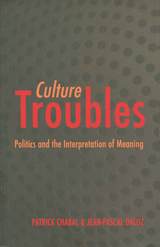 Culture Troubles: Politics and the Interpretation of Meaning
Patrick Chabal and Jean-Pascal Daloz
University of Chicago Press, 2005 Understanding politics in nations other than your own is a perilous exercise. If you were to read two newspaper articles on the same topic but from different countries, you would likely find two very different interpretations of the same event. But how we think about what is written in our own country seems somehow less distorted, less wrong. So which side is right? And from what reference point can we begin to compare the two?
Culture Troubles is a systematic reevaluation of the role of culture in political analysis. Here, Patrick Chabal and Jean-Pascal Daloz contend that it is unwise to compare different societies without taking into account culture, which in their interpretation is not a system of values, but rather a system of inherited meanings and symbols. This cultural approach, they argue, can attribute meaning to political comparison, and they outline the shape of that approach, one that draws from an eclectic range of sources. Illustrating the sharpness and acuity of their methods, they proceed with a comparative study of the state and political representation in three very different nations—France, Nigeria, and Sweden—to untangle the many ways that culture informs our understanding of political events. As a result, Culture Troubles offers a rational starting point from which we may begin to understand foreign politics.
 Culture War: Affective Cultural Politics, Tepid Nationalism, and Art Activism
Camilla Møhring Reestorff
Intellect Books, 2017 The culture wars—intertwining art, culture, and politics—have sparked prominent political debates across the globe for many years, but particularly in Europe and America since 2001. Focusing specifically on the experience of Denmark during this period, Culture War aims to analyze and understand the rise of right-wing nationalism in Europe as part of the globalization and mediatization of the modern nation state and the culture war and affective politics arising from it. This culture war provides an example of an affective cultural politics in which institutional structures become entwined with media representations, events, and patterns of belonging.
Employing a detailed and critically reflective argument covering social media, television, political campaigns, advertising, and “artivism,” Camilla Møhring Reestorff refuses the traditional distinction between the world of visual culture and the political domain, and she provides multiple tools for understanding the dynamics of contemporary affective cultural politics in a highly mediatized environment.
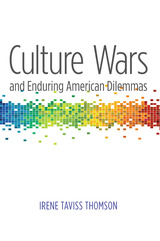 Culture Wars and Enduring American Dilemmas
Irene Taviss Thomson
University of Michigan Press, 2010 "Irene Taviss Thomson gives us a nuanced portrait of American social politics that helps explain both why we are drawn to the idea of a 'culture war' and why that misrepresents what is actually going on."
---Rhys H. Williams, Professor and Chair, Department of Sociology, Loyola University Chicago "An important work showing---beneath surface conflict---a deep consensus on a number of ideals by social elites."
---John H. Evans, Department of Sociology, University of California, San Diego The idea of a culture war, or wars, has existed in America since the 1960s---an underlying ideological schism in our country that is responsible for the polarizing debates on everything from the separation of church and state, to abortion, to gay marriage, to affirmative action. Irene Taviss Thomson explores this notion by analyzing hundreds of articles addressing hot-button issues over two decades from four magazines: National Review, Time, The New Republic, and The Nation, as well as a wide array of other writings and statements from a substantial number of public intellectuals. What Thomson finds might surprise you: based on her research, there is no single cultural divide or cultural source that can account for the positions that have been adopted. While issues such as religion, homosexuality, sexual conduct, and abortion have figured prominently in public discussion, in fact there is no single thread that unifies responses to each of these cultural dilemmas for any of the writers. Irene Taviss Thomson is Professor Emeritus of Sociology, having taught in the Department of Social Sciences and History at Fairleigh Dickinson University for more than 30 years. Previously, she taught in the Department of Sociology at Harvard University.
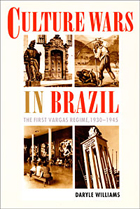 Culture Wars in Brazil: The First Vargas Regime, 1930–1945
Daryle Williams
Duke University Press, 2001 In Culture Wars in Brazil Daryle Williams analyzes the contentious politicking over the administration, meaning, and look of Brazilian culture that marked the first regime of president-dictator Getúlio Vargas (1883–1954). Examining a series of interconnected battles waged among bureaucrats, artists, intellectuals, critics, and everyday citizens over the state’s power to regulate and consecrate the field of cultural production, Williams argues that the high-stakes struggles over cultural management fought between the Revolution of 1930 and the fall of the Estado Novo dictatorship centered on the bragging rights to brasilidade—an intangible yet highly coveted sense of Brazilianness.
Williams draws on a rich selection of textual, pictorial, and architectural sources in his exploration of the dynamic nature of educational film and radio, historical preservation, museum management, painting, public architecture, and national delegations organized for international expositions during the unsettled era in which modern Brazil’s cultural canon took definitive form. In his close reading of the tensions surrounding official policies of cultural management, Williams both updates the research of the pioneer generation of North American Brazilianists, who examined the politics of state building during the Vargas era, and engages today’s generation of Brazilianists, who locate the construction of national identity of modern Brazil in the Vargas era.
By integrating Brazil into a growing body of literature on the cultural dimensions of nations and nationalism, Culture Wars in Brazil will be important reading for students and scholars of Latin American history, state formation, modernist art and architecture, and cultural studies.
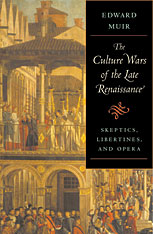 The Culture Wars of the Late Renaissance: Skeptics, Libertines, and Opera
Edward Muir
Harvard University Press, 2007 In the summer of 1591 students from the University of Padua attacked the local Jesuit college and successfully appealed to the Venetian Senate to intervene on behalf of the university. When the Jesuits were expelled from the Venetian dominion a few years later, religious censorship was virtually eliminated. The result was a remarkable era of cultural innovation that promoted free inquiry in the face of philosophical and theological orthodoxy, advocated libertine morals, critiqued the tyranny of aristocratic fathers over their daughters, and expanded the theatrical potential of grand opera.
In Padua a faction of university faculty, including Galileo Galilei and the philosopher Cesare Cremonini, pursued an open and free inquiry into astronomy and philosophy. In Venice some of Cremonini's students founded the Accademia degli Incogniti (Academy of the Unknowns), one of whose most notorious members was the brilliant polemicist Ferrante Pallavicino.
The execution of Pallavicino for his writings attacking Pope Urban VIII silenced the more outrageous members of the Incogniti, who soon turned to writing libretti for operas. The final phase of the Venetian culture wars pitted commercial opera, with its female performers and racy plot lines, against the decorous model of Jesuit theater. The libertine inclinations of the Incogniti suffuse many of the operas written in the 1640s, especially Monteverdi's masterpiece, L'Incoronazione di Poppea.
Edward Muir's exploration of an earlier age of anxiety reveals the distinguished past of today's culture wars, including debates about the place of women in society, the clash between science and faith, and the power of the arts to stir emotions.
Culture Wars: School and Society in the Conservative Restoration
Ira Shor
University of Chicago Press, 1992 This lively and controversial work critiques the conservative efforts in the 1970s and 1980s to undo the educational reforms of the 1960s, to reestablish control over the curriculum, and to change the nature of the debate and the goals of education.
"An outstanding work of educational theory and history."—John Coatsworth, University of Chicago
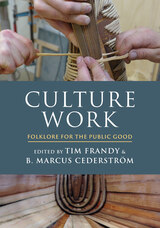 Culture Work: Folklore for the Public Good
Tim Frandy and B. Marcus Cederström
University of Wisconsin Press, 2022 How do culture workers construct public arts and culture projects that are effective and transformative? How do we create public humanities projects of the community, for the community, and with the community? How can culture work make a concrete difference in the quality of life for communities, and lead to the creation of a more just world? Why do the public humanities matter? Culture Work explores these questions through real-world examples of cultural and public humanities projects. The innovative case studies analyzed in the book demonstrate the vast numbers of creative possibilities in culture work today—in all their complexities, challenges, and potentialities.
Thematically arranged chapters embody the interconnected aspects of culture work, from amplifying local voices to galvanizing community from within, from preservation of cultural knowledge to its creative repurposing for a desired future. These inventive projects provide concrete examples and accessible theory grounded in practice, encourage readers to embark on their own public culture work, and create new forward-looking inspiration for community leaders and scholars in the field.
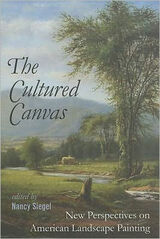 The Cultured Canvas: New Perspectives on American Landscape Painting
Nancy Siegel
University of New Hampshire Press, 2012 Written from aesthetic, sociopolitical, cultural, and literary perspectives, The Cultured Canvas explores myriad ways in which American visual culture can be evaluated through newly conceived thematic and ideological approaches. This book moves beyond our accepted notion of the oil painting on canvas to consider the term as both a literal and figurative surface upon which artists construct or construe the landscape as an intellectual, cultural, or physical entity. It provides an innovative reevaluation of traditional thought concerning the Hudson River School, Luminism, and artists of the Civil War era.
As interdisciplinary emphases are employed with increasing frequency in arts and humanities courses, the breadth and depth of topics covered in this collection will provide a much-needed text for scholars in American art history, nineteenth-century American studies, and landscape studies, in addition to serving as a complement to courses in American literature and culture.
Hardcover is un-jacketed.
Cultured Force: Makers and Defenders of the French Colonial Empire
Barnett Singer and John Langdon
University of Wisconsin Press, 2008 Bridging gaps between intellectual history, biography, and military/colonial history, Barnett Singer and John Langdon provide a challenging, readable interpretation of French imperialism and some of its leading figures from the early modern era through the Fifth Republic. They ask us to rethink and reevaluate, pulling away from the usual shoal of simplistic condemnation. In a series of finely-etched biographical studies, and with much detail on both imperial culture and wars (including World War I and II), they offer a balanced, deep, strong portrait of key makers and defenders of the French Empire, one that will surely stimulate much historical work in the field.
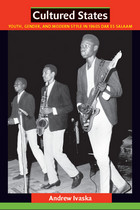 Cultured States: Youth, Gender, and Modern Style in 1960s Dar es Salaam
Andrew Ivaska
Duke University Press, 2011 Cultured States is a vivid account of the intersections of postcolonial state power, the cultural politics of youth and gender, and global visions of modern style in Dar es Salaam, Tanzania, during the 1960s and early 1970s. Andrew Ivaska describes a cosmopolitan East African capital rocked by debates over youth culture, national cultural policy, the rumored sexual escapades of the postcolonial elite, the content of university education, leftist activism, and the reform of colonial-era marriage laws. If young Tanzanians saw themselves as full-fledged participants in modern global culture, their understandings of the modern conflicted with that of a state launching “decency campaigns” banning cultural forms such as soul music, miniskirts, wigs, and bell-bottoms. Promoted by the political elite as a radical break from the colonial order, these campaigns nonetheless contained strong echoes of colonial assumptions about culture, tradition, and African engagements with the modern city. Exploring the ambivalence over the modern at the heart of these contests, Ivaska uses them as lenses through which to analyze struggles around gender relations and sexual politics, youth and masculinity, and the competition for material resources in a Dar es Salaam in rapid flux. Cultured States is a major contribution to understandings of urban cultural politics; national political culture; social struggles around gender, generation, and wealth; and the transnational dimensions of postcolonial histories too often conceived within national frames.
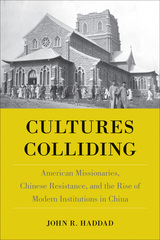 Cultures Colliding: American Missionaries, Chinese Resistance, and the Rise of Modern Institutions in China
John R. Haddad
Temple University Press, 2023 As incredible as it may seem, the American missionaries who journeyed to China in 1860 planning solely to spread the Gospel ultimately reinvented their entire enterprise. By 1900, they were modernizing China with schools, colleges, hospitals, museums, and even YMCA chapters. In Cultures Colliding, John R. Haddad nimbly recounts this transformative institution-building—how and why it happened—and its consequences. When missionaries first traveled to rural towns atop mules, they confronted populations with entrenched systems of belief that embraced Confucius and rejected Christ. Conflict ensued as these Chinese viewed missionaries as unwanted disruptors. So how did this failing movement eventually change minds and win hearts? Many missionaries chose to innovate. They built hospitals and established educational institutions offering science and math. A second wave of missionaries opened YMCA chapters, coached sports, and taught college. Crucially, missionaries also started listening to Chinese citizens, who exerted surprising influence over the preaching, teaching, and caregiving, eventually running some organizations themselves. They embraced new American ideals while remaining thoroughly Chinese. In Cultures Colliding, Haddad recounts the unexpected origins and rapid rise of American institutions in China by telling the stories of the Americans who established these institutions and the Chinese who changed them from within. Today, the impact of this untold history continues to resonate in China.
Cultures In Conflict: A Documentary History of the Mormon War in Illinois
John Hallwas and Roger Launius
Utah State University Press, 1999 Hallwas and Launius have compiled and written the most balanced and thorough account yet of the events and circumstances that led to the forced Mormon exodus from Nauvoo following the mini civil war that erupted in Illinois during the 1840s.
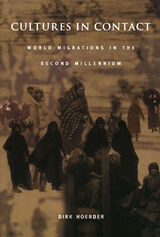 Cultures in Contact: World Migrations in the Second Millennium
Dirk Hoerder
Duke University Press, 2011 A landmark work on human migration around the globe, Cultures in Contact provides a history of the world told through the movements of its people. It is a broad, pioneering interpretation of the scope, patterns, and consequences of human migrations over the past ten centuries. In this magnum opus thirty years in the making, Dirk Hoerder reconceptualizes the history of migration and immigration, establishing that societal transformation cannot be understood without taking into account the impact of migrations and, indeed, that mobility is more characteristic of human behavior than is stasis. Signaling a major paradigm shift, Cultures in Contact creates an English-language map of human movement that is not Atlantic Ocean-based. Hoerder describes the origins, causes, and extent of migrations around the globe and analyzes the cultural interactions they have triggered. He pays particular attention to the consequences of immigration within the receiving countries. His work sweeps from the eleventh century forward through the end of the twentieth, when migration patterns shifted to include transpacific migration, return migrations from former colonies, refugee migrations, and distinct regional labor migrations in the developing world. Hoerder demonstrates that as we enter the third millennium, regional and intercontinental migration patterns no longer resemble those of previous centuries. They have been transformed by new communications systems and other forces of globalization and transnationalism.
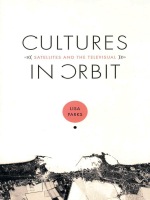 Cultures in Orbit: Satellites and the Televisual
Lisa Parks
Duke University Press, 2005 In 1957 Sputnik, the world’s first man-made satellite, dazzled people as it zipped around the planet. By the beginning of the twenty-first century, more than eight thousand satellites orbited the Earth, and satellite practices such as live transmission, direct broadcasting, remote sensing, and astronomical observation had altered how we imagined ourselves in relation to others and our planet within the cosmos. In Cultures in Orbit, Lisa Parks analyzes these satellite practices and shows how they have affected meanings of “the global” and “the televisual.” Parks suggests that the convergence of broadcast, satellite, and computer technologies necessitates an expanded definition of “television,” one that encompasses practices of military monitoring and scientific observation as well as commercial entertainment and public broadcasting. Roaming across the disciplines of media studies, geography, and science and technology studies, Parks examines uses of satellites by broadcasters, military officials, archaeologists, and astronomers. She looks at Our World, a live intercontinental television program that reached five hundred million viewers in 1967, and Imparja tv, an Aboriginal satellite tv network in Australia. Turning to satellites’ remote-sensing capabilities, she explores the U.S. military’s production of satellite images of the war in Bosnia as well as archaeologists’ use of satellites in the excavation of Cleopatra’s palace in Alexandria, Egypt. Parks’s reflections on how Western fantasies of control are implicated in the Hubble telescope’s views of outer space point to a broader concern: that while satellite uses promise a “global village,” they also cut and divide the planet in ways that extend the hegemony of the post-industrial West. In focusing on such contradictions, Parks highlights how satellites cross paths with cultural politics and social struggles.
Cultures of Anti-Racism in Latin America and the Caribbean
Edited by Peter Wade, James Scorer, and Ignacio Aguiló
University of London Press, 2019 Latin America’s long history of showing how racism can co-exist with racial mixture and conviviality offers useful ammunition for strengthening anti-racist stances. This volume asks whether cultural production has a particular role to play within discourses and practices of anti-racism in Latin America and the Caribbean. The contributors analyse music, performance, education, language, film and art in diverse national contexts across the region. The book also places Latin American and Caribbean racial formations within a broader global context and sets out the premise that the region provides valuable opportunities for thinking about anti-racism when recent political events have made ever more fragile the claims that, at least in Europe and the United States, we exist in a ‘post-racial’ world.
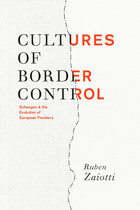 Cultures of Border Control: Schengen and the Evolution of European Frontiers
Ruben Zaiotti
University of Chicago Press, 2011 In recent years, a number of European countries abolished national border controls in favor of Europe’s external frontiers. In doing so, they challenged long-established conceptions of sovereignty, territoriality, and security in world affairs.
Setting forth a new analytic framework informed by constructivism and pragmatism, Ruben Zaiotti traces the transformation of underlying assumptions and cultural practices guiding European policymakers and postnational Europe, shedding light on current trends characterizing its politics and relations with others. The book also includes a fascinating comparison to developments in North America, where the United States has pursued more restrictive border control strategies since 9/11. As a broad survey of the origins, evolution, and implications of this remarkable development in European integration, Cultures of Border Control will be of interest to students and scholars of international relations and political geography.
The Cultures of Celebrations
Edited by Ray B. Browne and Michael T. Marsden
University of Wisconsin Press, 1994 Popular entertainments are windows into the attitudes and values of the people who participate in them. They both reflect and affect society as they celebrate an aspect of life. The fifteen essays in this collection demonstrate various aspects of celebrations of cultures and the importance they have in those cultures.
Topics include: feminine processions and masculine parades; political activism and quietism in Shi’a rituals; civic socializing in Puritan New England; the circus and American culture; the Wild West shows; beauty pageants; theme parks; Bourbon Street, New Orleans; and Stonehenge.
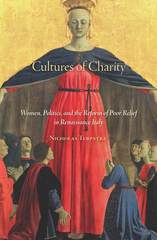 Cultures of Charity: Women, Politics, and the Reform of Poor Relief in Renaissance Italy
Nicholas Terpstra
Harvard University Press, 2013 Renaissance Italians pioneered radical changes in ways of helping the poor, including orphanages, workhouses, pawnshops, and women’s shelters. Nicholas Terpstra shows that gender was the key factor driving innovation. Most of the recipients of charity were women. The most creative new plans focused on features of women’s poverty like illegitimate births, hunger, unemployment, and domestic violence. Signal features of the reforms, from forced labor to new instruments of saving and lending, were devised specifically to help young women get a start in life.
Cultures of Charity is the first book to see women’s poverty as the key factor driving changes to poor relief. These changes generated intense political debates as proponents of republican democracy challenged more elitist and authoritarian forms of government emerging at the time. Should taxes fund poor relief? Could forced labor help build local industry? Focusing on Bologna, Terpstra looks at how these fights around politics and gender generated pioneering forms of poor relief, including early examples of maternity benefits, unemployment insurance, food stamps, and credit union savings plans.
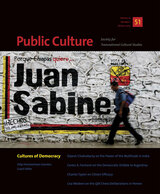 Cultures of Democracy, Volume 19
Dilip Parameshwar Gaonkar, ed.
Duke University Press Cultures of Democracy, a special issue of Public Culture, proposes that democratic strategies and practices pursued by different countries, and the relative successes of those strategies and practices, are deeply affected by the countries’ cultures, histories, and reception of, or resistance to, modernity. The collection suggests that a commitment to normative models of democracy prevents recognition of democratic practices in societies not usually seen as democratic or proto-democratic from a Western vantage point. Offering accounts of practices of democracy in Egypt, Yemen, Argentina, and India, these cultural theorists—drawing on work in anthropology, political theory, and postcolonial studies—revise notions of what might be regarded as a democratic practice. The essays look at examples of democracy in a variety of spheres. One examines how the chewing of khat leaves in public gatherings in Yemen acts as a democratic practice by creating spontaneous forums for political discussion. Another considers the events of the 2003 municipal elections in Buenos Aires, when the center Right secured a record number of votes from an electorate jaded by political corruption by forming strategic alliances with local football clubs, ultimately leading to the election of the president of one popular club. And another essay explores the Indian government’s reaction when the political methods used to achieve the nation’s independence—defiance of the law, hunger strikes, demonstrations, and the destruction of public property—were used to challenge the government in the postcolonial period. Taken as a whole, the essays argue that democracy might be productively viewed as a cultural system inclusive of many cultures of democracy. Contributors. Arjun Appadurai, Craig Calhoun, Dipesh Chakrabarty, Jean Comaroff, Carlos Forment, Dilip Parameshwar Gaonkar, Claudio Lomnitz , Manar Shorbagy, Charles Taylor, Lisa Wedeen
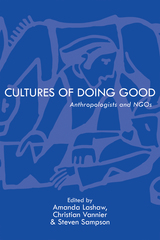 Cultures of Doing Good: Anthropologists and NGOs
Edited by Amanda Lashaw, Christian Vannier, and Steven Sampson
University of Alabama Press, 2018 Anthropological field studies of nongovernmental organizations (NGOs) in their unique cultural and political contexts.
Cultures of Doing Good: Anthropologists and NGOs serves as a foundational text to advance a growing subfield of social science inquiry: the anthropology of nongovernmental organizations (NGOs). Thorough introductory chapters provide a short history of NGO anthropology, address how the study of NGOs contributes to anthropology more broadly, and examine ways that anthropological studies of NGOs expand research agendas spawned by other disciplines. In addition, the theoretical concepts and debates that have anchored the analysis of NGOs since they entered scholarly discourse after World War II are explained.
The wide-ranging volume is organized into thematic parts: “Changing Landscapes of Power,” “Doing Good Work,” and “Methodological Challenges of NGO Anthropology.” Each part is introduced by an original, reflective essay that contextualizes and links the themes of each chapter to broader bodies of research and to theoretical and methodological debates. A concluding chapter synthesizes how current lines of inquiry consolidate and advance the first generation of anthropological NGO studies, highlighting new and promising directions in this field.
In contrast to studies about surveys of NGOs that cover a single issue or region, this book offers a survey of NGO dynamics in varied cultural and political settings. The chapters herein cover NGO life in Tanzania, Serbia, the Czech Republic, Egypt, Peru, the United States, and India. The diverse institutional worlds and networks include feminist activism, international aid donors, USAID democracy experts, Romani housing activism, academic gender studies, volunteer tourism, Jewish philanthropy, Islamic faith-based development, child welfare, women’s legal arbitration, and environmental conservation.
The collection explores issues such as normative democratic civic engagement, elitism and professionalization, the governance of feminist advocacy, disciplining religion, the politics of philanthropic neutrality, NGO tourism and consumption, blurred boundaries between anthropologists as researchers and activists, and barriers to producing critical NGO ethnographies.
Cultures of Fear: A Critical Reader
Edited by Uli Linke and Danielle Taana Smith
Pluto Press, 2009 In Cultures of Fear, a truly world-class line up of scholars explore the formation and normalisation of fear in the context of war and terrorism.
"Freedom from fear" is a universal right and fundamental for human well-being. People often look to governments, humanitarian agencies, and other institutions to further this aim. However, this book shows that these organisations often use the same "logic of fear" to monitor, control, and contain human beings in zones of violence.
This is an excellent interdisciplinary reader for students of anthropology, sociology and politics. Contributors include Noam Chomsky, Slavoj Zizek, Jean Baudrillard, Catharine MacKinnon, Neil Smith, Cynthia Enloe, David L. Altheide, Cynthia Cockburn and Carolyn Nordstrum.
 Cultures of Femininity in Modern Fashion
Ilya Parkins
University of New Hampshire Press, 2011 Grounded in the ubiquitous, ever-changing matter of fashion, Cultures of Femininity in Modern Fashion places women at the heart of modern culture. Rich and cohesive, this collection demonstrates how fashion shaped and emerged from diverse cultures of femininity and modernity. By recovering fashion as a dynamic and far-reaching force in culture and politics, the volume examines the nuanced and conflicted terrain of femininity from the mid-nineteenth to the early twentieth century. Revealing the inextricability of fashion from modern life, the volume argues for placing gender, everyday life, and materiality at the forefront of our accounts of modernity.
This transatlantic and truly interdisciplinary collection, with an afterword by distinguished literary scholar Rita Felski, is also notable for its mix of established and emerging scholars. The contributors address diverse aspects of women’s engagement with fashion in modernity, through such topics as Sapphic architecture, tea gowns, secondhand clothing, transnational identity, the coquette, nursing uniforms, and Harlem Renaissance photographs. Cultures of Femininity in Modern Fashion traces a unique and often surprising history of modernity and its entwinement with the gendered phenomenon of fashion.
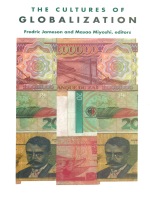 The Cultures of Globalization
Fredric Jameson and Masao Miyoshi, eds.
Duke University Press, 1998 A pervasive force that evades easy analysis, globalization has come to represent the export and import of culture, the speed and intensity of which has increased to unprecedented levels in recent years. The Cultures of Globalization presents an international panel of intellectuals who consider the process of globalization as it concerns the transformation of the economic into the cultural and vice versa; the rise of consumer culture around the world; the production and cancellation of forms of subjectivity; and the challenges it presents to national identity, local culture, and traditional forms of everyday life. Discussing overlapping themes of transnational consequence, the contributors to this volume describe how the global character of technology, communication networks, consumer culture, intellectual discourse, the arts, and mass entertainment have all been affected by recent worldwide trends. Appropriate to such diversity of material, the authors approach their topics from a variety of theoretical perspectives, including those of linguistics, sociology, economics, anthropology, and the law. Essays examine such topics as free trade, capitalism, the North and South, Eurocentrism, language migration, art and cinema, social fragmentation, sovereignty and nationhood, higher education, environmental justice, wealth and poverty, transnational corporations, and global culture. Bridging the spheres of economic, political, and cultural inquiry, The Cultures of Globalization offers crucial insights into many of the most significant changes occurring in today’s world. Contributors. Noam Chomsky, Ioan Davies, Manthia Diawara, Enrique Dussel, David Harvey, Sherif Hetata, Fredric Jameson, Geeta Kapur, Liu Kang, Joan Martinez-Alier, Masao Miyoshi, Walter D. Mignolo, Alberto Moreiras, Paik Nak-chung, Leslie Sklair, Subramani, Barbara Trent
Cultures of Letters: Scenes of Reading and Writing in Nineteenth-Century America
Richard H. Brodhead
University of Chicago Press, 1993 Using a variety of historical sources, Richard H. Brodhead reconstructs the institutionalized literary worlds that coexisted in nineteenth-century America: the middle-class domestic culture of letters, the culture of mass-produced cheap reading, the militantly hierarchical high culture of post-emancipation black education. He describes how these socially structured worlds of writing shaped the terms of literary practice for writers like Stowe, Hawthorne, Fanny Fern, Louisa May Alcott, Sarah Orne Jewett, and Charles Chesnutt.
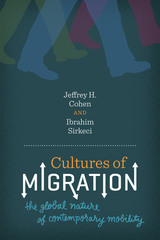 Cultures of Migration: The Global Nature of Contemporary Mobility
By Jeffrey H. Cohen and Ibrahim Sirkeci
University of Texas Press, 2011 Around the globe, people leave their homes to better themselves, to satisfy needs, and to care for their families. They also migrate to escape undesirable conditions, ranging from a lack of economic opportunities to violent conflicts at home or in the community. Most studies of migration have analyzed the topic at either the macro level of national and global economic and political forces, or the micro level of the psychology of individual migrants. Few studies have examined the "culture of migration"—that is, the cultural beliefs and social patterns that influence people to move. Cultures of Migration combines anthropological and geographical sensibilities, as well as sociological and economic models, to explore the household-level decision-making process that prompts migration. The authors draw their examples not only from their previous studies of Mexican Oaxacans and Turkish Kurds but also from migrants from Europe, sub-Saharan Africa, the Pacific, and many parts of Asia. They examine social, economic, and political factors that can induce a household to decide to send members abroad, along with the cultural beliefs and traditions that can limit migration. The authors look at both transnational and internal migrations, and at shorter- and longer-term stays in the receiving location. They also consider the effect that migration has on those who remain behind. The authors' "culture of migration" model adds an important new dimension to our understanding of the cultural beliefs and social patterns associated with migration and will help specialists better respond to increasing human mobility.
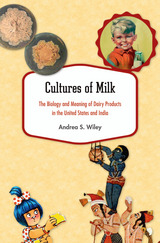 Cultures of Milk: The Biology and Meaning of Dairy Products in the United States and India
Andrea S. Wiley
Harvard University Press, 2014 Milk is the only food mammals produce naturally to feed their offspring. The human species is the only one that takes milk from other animals and consumes it beyond weaning age. Cultures of Milk contrasts the practices of the world’s two leading milk producers, India and the United States. In both countries, milk is considered to have special qualities. Drawing on ethnographic and scientific studies, popular media, and government reports, Andrea Wiley reveals that the cultural significance of milk goes well beyond its nutritive value.
Shifting socioeconomic and political factors influence how people perceive the importance of milk and how much they consume. In India, where milk is out of reach for many, consumption is rising rapidly among the urban middle class. But milk drinking is declining in America, despite the strength of the dairy industry. Milk is bound up in discussions of food scarcity in India and food abundance in the United States. Promotion of milk as a means to enhance child growth boosted consumption in twentieth-century America and is currently doing the same in India, where average height is low. Wiley considers how variation among populations in the ability to digest lactose and ideas about how milk affects digestion influence the type of milk and milk products consumed. In India, most milk comes from buffalo, but cows have sacred status for Hindus. In the United States, cow’s milk has long been a privileged food, but is now facing competition from plant-based milk.
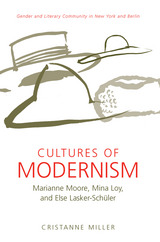 Cultures of Modernism: Marianne Moore, Mina Loy, and Else Lasker-Schuler
Cristanne Miller
University of Michigan Press, 2005 Cultures of Modernism explores how the structure and location of literary communities significantly influence who writes, what they write about, and their openness to formal experimentation. These influences particularly affect women writers. Author Cristanne Miller notes striking patterns of similarity in the concerns and lives of women living in geographically distant centers of modernist production. She looks at three significant poets---the American Marianne Moore, the British expatriate Mina Loy, and the German Else Lasker-Schüler---in the context of cultural, national, and local elements to argue that location significantly affected their performances of subjectivity, gender, race, and religion. The first book of its kind, Cultures of Modernism breaks new ground while it contributes to the ongoing reconception of the modernist period. "A fascinating, provocative, and genuinely original study of a 'different' modernism in poetry---namely, the Modernism of women poets."
---Marjorie Perloff, Stanford University "An important and ambitious work that makes major contributions to the fields of gender studies and modernist studies, and to the study of modernist poetry."
---Robin Schulze, Pennsylvania State University "Offers a welcome corrective to the unreflective critical tendency . . . to make broad claims about the historical experiences and cultural conundrums of 'women,' and particularly 'women writers.' Miller offers tour-de-force comparative readings . . . threading together the world-historical with the personal, poetics with the political, and wielding the instruments of scansion as deftly as a surgeon."
---Modernism/modernity, The Official Journal of the Modernist Studies Association Cristanne Miller is Edward H. Butler Professor of English and Chair of the English Department at the University of Buffalo, State University of New York.
Cultures of Print: Essays in the History of the Book
David D. Hall
University of Massachusetts Press, 1996 How did people in early America understand the authority of print and how was this authority sustained and contested? These questions are at the heart of this set of pathbreaking essays in the history of the book by one of America's leading practitioners in this interdisciplinary field.
David D. Hall examines the interchange between popular and learned cultures and the practices of reading and writing. His writings deal with change and continuity, exploring the possibility of a reading revolution and arguing for the long duration of a Protestant vernacular tradition. A newly written essay on book culture in the early Chesapeake describes a system of scribal publication. The pieces reflect Hall's belief that the better we understand the production and consumption of books, the closer we come to a social history of culture.
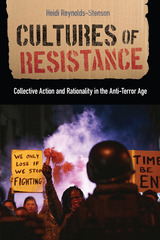 Cultures of Resistance: Collective Action and Rationality in the Anti-Terror Age
Heidi Reynolds-Stenson
Rutgers University Press, 2022 Cultures of Resistance provides new insight on a long-standing question: whether government efforts to repress social movements produce a chilling effect on dissent, or backfire and spur greater mobilization. In recent decades, the U.S. government’s repressive capacity has expanded dramatically, as the legal, technological, and bureaucratic tools wielded by agents of the state have become increasingly powerful. Today, more than ever, it is critical to understand how repression impacts the freedom to dissent and collectively express political grievances. Through analysis of activists’ rich and often deeply moving experiences of repression and resistance, the book uncovers key group processes that shape how individuals understand, experience, and weigh these risks of participating in collective action. Qualitative and quantitative analyses demonstrate that, following experiences of state repression, the achievement or breakdown of these group processes, not the type or severity of repression experienced, best explain why some individuals persist while others disengage. In doing so, the book bridges prevailing theoretical divides in social movement research by illuminating how individual rationality is collectively constructed, mediated, and obscured by protest group culture.
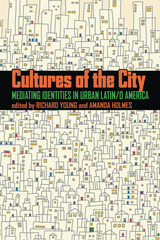 Cultures of the City
Richard Young
University of Pittsburgh Press, 2010
Cultures of the City explores the cultural mediation of relationships between people and urban spaces in Latin/o America and how these mediations shape the identities of cities and their residents.
Addressing a broad spectrum of phenomena and disciplinary approaches, the contributors to this volume analyze lived urban experiences and their symbolic representation in cultural texts. Individual chapters explore Havana in popular music; Mexico City in art; Buenos Aires, Recife, and Salvador in film; and Asuncion and Buenos Aires in literature. Others focus on particular events, conditions, and practices of urban life including the Havana book fair, mass transit in Bogotá, the restaurant industry in Los Angeles, the media in Detroit, Andean festivals in Lima, and the photographic record of a visit by members of the Zapatista Liberation Army to Mexico City.
The contributors examine identity and the sense of place and belonging that connect people to urban environments, relating these to considerations of ethnicity, social and economic class, gender, everyday life, and cultural practices. They also consider history and memory and the making of places through the iterative performance of social practices. As such, places are works in progress, a condition that is particularly evident in contemporary Latin/o American cities where the opposition between local and global influences is a prominent facet of daily life.
These core issues are theorized further in an afterword by Abril Trigo, who takes the chapters as a point of departure for a discussion of the dialectics of identity in the Latin/o American global city.
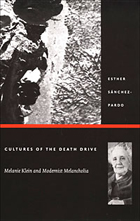 Cultures of the Death Drive: Melanie Klein and Modernist Melancholia
Esther Sánchez-Pardo
Duke University Press, 2003 Cultures of the Death Drive is a comprehensive guide to the work of pioneering psychoanalyst Melanie Klein (1882–1960) and to developments in Kleinian theory to date. It is also an analysis and a demonstration of the distinctive usefulness of Klein’s thought for understanding modernist literature and visual art. Esther Sánchez-Pardo examines the issues that the seminal discourses of psychoanalysis and artistic modernism brought to the fore in the early twentieth century and points toward the uses of Kleinian thinking for reconceptualizing the complexities of identity and social relations today. Sánchez-Pardo argues that the troubled political atmosphere leading to both world wars created a melancholia fueled by “cultures of the death drive” and the related specters of object loss—loss of coherent and autonomous selves, of social orders where stability reigned, of metaphysical guarantees, and, in some cases, loss and fragmentation of empire. This melancholia permeated, and even propelled, modernist artistic discourses. Sánchez-Pardo shows how the work of Melanie Klein, the theorist of melancholia par excellence, uniquely illuminates modernist texts, particularly their representations of gender and sexualities. She offers a number of readings—of works by Virginia Woolf, René Magritte, Lytton Strachey, Djuna Barnes, and Countee Cullen—that reveal the problems melancholia posed for verbal and visual communication and the narrative and rhetorical strategies modernist artists derived to either express or overcome them. In her afterword, Sánchez-Pardo explicates the connections between modernist and contemporary melancholia. A valuable contribution to psychoanalytic theory, gender and sexuality studies, and the study of representation in literature and the visual arts, Cultures of the Death Drive is a necessary resource for those interested in the work of Melanie Klein.
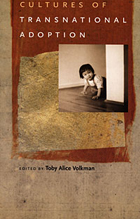 Cultures of Transnational Adoption
Toby Alice Volkman, ed.
Duke University Press, 2005 During the 1990s, the number of children adopted from poorer countries to the more affluent West grew exponentially. Close to 140,000 transnational adoptions occurred in the United States alone. While in an earlier era, adoption across borders was assumed to be straightforward—a child traveled to a new country and stayed there—by the late twentieth century, adoptees were expected to acquaint themselves with the countries of their birth and explore their multiple identities. Listservs, Web sites, and organizations creating international communities of adoptive parents and adoptees proliferated. With contributors including several adoptive parents, this unique collection looks at how transnational adoption creates and transforms cultures. The cultural experiences considered in this volume raise important questions about race and nation; about kinship, biology, and belonging; and about the politics of the sending and receiving nations. Several essayists explore the images and narratives related to transnational adoption. Others examine the recent preoccupation with “roots” and “birth cultures.” They describe a trip during which a group of Chilean adoptees and their Swedish parents traveled “home” to Chile, the “culture camps” attended by thousands of young-adult Korean adoptees whom South Korea is now eager to reclaim as “overseas Koreans,” and adopted children from China and their North American parents grappling with the question of what “Chinese” or “Chinese American” identity might mean. Essays on Korean birth mothers, Chinese parents who adopt children within China, and the circulation of children in Brazilian families reveal the complexities surrounding adoption within the so-called sending countries. Together, the contributors trace the new geographies of kinship and belonging created by transnational adoption. Contributors. Lisa Cartwright, Claudia Fonseca, Elizabeth Alice Honig, Kay Johnson, Laurel Kendall, Eleana Kim, Toby Alice Volkman, Barbara Yngvesson
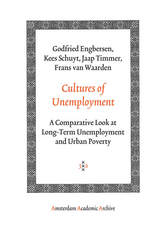 Cultures of Unemployment: A Comparative Look at Long-Term Unemployment and Urban Poverty
Godfried Engerbersen, Kees Schuyt, Jaap Timmer, and Frans van Waarden
Amsterdam University Press, 2006 In the 1980s a team of Dutch sociologists conducted a study on the daily life of unemployed in the Netherlands. They were inspired by the classical work Marienthal: the Sociology of an Unemployed Community first published in 1933. The authors conducted three neighborhood studies to analyze the social behavior of the unemployed. Based on the work of Robert K. Merton and Mary Douglas they developed a typology of different cultures of unemployment. This typology is still relevant to analyze contemporary reactions to unemployment in European welfare states. The authors also demonstrated that their cultural analysis is fruitful to understand the heterogeneity of urban marginality in the United States. A foreword by U.S. scholar William Julius Wilson emphasizes the universality of the method and the findings presented here.
 Cultures of United States Imperialism
Amy Kaplan and Donald Pease, eds.
Duke University Press, 1993 Cultures of United States Imperialism represents a major paradigm shift that will remap the field of American Studies. Pointing to a glaring blind spot in the basic premises of the study of American culture, leading critics and theorists in cultural studies, history, anthropology, and literature reveal the "denial of empire" at the heart of American Studies. Challenging traditional definitions and periodizations of imperialism, this volume shows how international relations reciprocally shape a dominant imperial culture at home and how imperial relations are enacted and contested within the United States. Drawing on a broad range of interpretive practices, these essays range across American history, from European representations of the New World to the mass media spectacle of the Persian Gulf War. The volume breaks down the boundary between the study of foreign relations and American culture to examine imperialism as an internal process of cultural appropriation and as an external struggle over international power. The contributors explore how the politics of continental and international expansion, conquest, and resistance have shaped the history of American culture just as much as the cultures of those it has dominated. By uncovering the dialectical relationship between American cultures and international relations, this collection demonstrates the necessity of analyzing imperialism as a political or economic process inseparable from the social relations and cultural representations of gender, race, ethnicity, and class at home. Contributors. Lynda Boose, Mary Yoko Brannen, Bill Brown, William Cain, Eric Cheyfitz, Vicente Diaz, Frederick Errington, Kevin Gaines, Deborah Gewertz, Donna Haraway, Susan Jeffords, Myra Jehlen, Amy Kaplan, Eric Lott, Walter Benn Michaels, Donald E. Pease, Vicente Rafael, Michael Rogin, José David Saldívar, Richard Slotkin, Doris Sommer, Gauri Viswanathan, Priscilla Wald, Kenneth Warren, Christopher P. Wilson
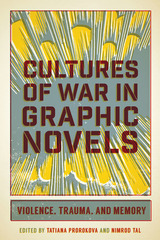 Cultures of War in Graphic Novels: Violence, Trauma, and Memory
Prorokova, Tatiana
Rutgers University Press, 2018 First runner-up for the 2019 Ray and Pat Browne Award for the Best Edited Collection in Popular and American Culture
Cultures of War in Graphic Novels examines the representation of small-scale and often less acknowledged conflicts from around the world and throughout history. The contributors look at an array of graphic novels about conflicts such as the Boxer Rebellion (1899-1901), the Irish struggle for national independence (1916-1998), the Falkland War (1982), the Bosnian War (1992-1995), the Rwandan genocide (1994), the Israel-Lebanon War (2006), and the War on Terror (2001-). The book explores the multi-layered relation between the graphic novel as a popular medium and war as a pivotal recurring experience in human history. The focus on largely overlooked small-scale conflicts contributes not only to advance our understanding of graphic novels about war and the cultural aspects of war as reflected in graphic novels, but also our sense of the early twenty-first century, in which popular media and limited conflicts have become closely interrelated.
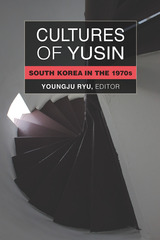 Cultures of Yusin: South Korea in the 1970s
Youngju Ryu, Editor
University of Michigan Press, 2018 Cultures of Yusin examines the turbulent and yet deeply formative years of Park Chung Hee’s rule in South Korea, focusing on the so-called Yusin era (1972–79). Beginning with the constitutional change that granted dictatorial powers to the president and ending with his assassination, Yusin was a period of extreme political repression coupled with widespread mobilization of the citizenry towards the statist gospel of modernization and development. While much has been written about the political and economic contours of this period, the rich complexity of its cultural production remains obscure. This edited volume brings together a wide range of scholars to explore literature, film, television, performance, music, and architecture, as well as practices of urban and financial planning, consumption, and homeownership. Examining the plural forms of culture’s relationship to state power, the authors illuminate the decade of the 1970s in South Korea and offer an essential framework for understanding contemporary Korean society.
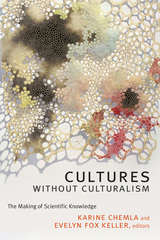 Cultures without Culturalism: The Making of Scientific Knowledge
Karine Chemla and Evelyn Fox Keller, editors
Duke University Press, 2017 Cultural accounts of scientific ideas and practices have increasingly come to be welcomed as a corrective to previous—and still widely held—theories of scientific knowledge and practices as universal. The editors caution, however, against the temptation to overgeneralize the work of culture, and to lapse into a kind of essentialism that flattens the range and variety of scientific work. The book refers to this tendency as culturalism. The contributors to the volume model a new path where historicized and cultural accounts of scientific practice retain their specificity and complexity without falling into the traps of culturalism. They examine, among other issues, the potential of using notions of culture to study behavior in financial markets; the ideology, organization, and practice of earthquake monitoring and prediction during China's Cultural Revolution; the history of quadratic equations in China; and how studying the "glass ceiling" and employment discrimination became accepted in the social sciences. Demonstrating the need to understand the work of culture as a fluid and dynamic process that directly both shapes and is shaped by scientific practice, Cultures without Culturalism makes an important intervention in science studies.
Contributors. Bruno Belhoste, Karine Chemla, Caroline Ehrhardt, Fa-ti Fan,Kenji Ito, Evelyn Fox Keller, Guillaume Lachenal, Donald MacKenzie, Mary S. Morgan, Nancy J. Nersessian, David Rabouin, Hans-Jörg Rheinberger, Claude Rosental, Koen Vermeir
 Culturing Life: How Cells Became Technologies
Hannah Landecker
Harvard University Press, 2010 How did cells make the journey, one we take so much for granted, from their origin in living bodies to something that can be grown and manipulated on artificial media in the laboratory, a substantial biomass living outside a human body, plant, or animal? This is the question at the heart of Hannah Landecker's book. She shows how cell culture changed the way we think about such central questions of the human condition as individuality, hybridity, and even immortality and asks what it means that we can remove cells from the spatial and temporal constraints of the body and "harness them to human intention."
Rather than focus on single discrete biotechnologies and their stories--embryonic stem cells, transgenic animals--Landecker documents and explores the wider genre of technique behind artificial forms of cellular life. She traces the lab culture common to all those stories, asking where it came from and what it means to our understanding of life, technology, and the increasingly blurry boundary between them. The technical culture of cells has transformed the meaning of the term "biological," as life becomes disembodied, distributed widely in space and time. Once we have a more specific grasp on how altering biology changes what it is to be biological, Landecker argues, we may be more prepared to answer the social questions that biotechnology is raising.
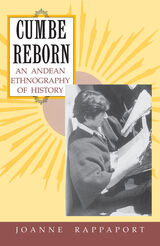 Cumbe Reborn: An Andean Ethnography of History
Joanne Rappaport
University of Chicago Press, 1993 According to legend, Cumbe ruled the Colombian community of Cumbal during the Spanish invasion. Although there is no documentation of Chief Cumbe's existence, today's Cumbales point to him as their ancestral link to Pasto ancestors. His image reappears often in popular music, theater, community organization, and militant politics as the Cumbales attempt to reinvigorate their indigenous heritage and reclaim the lands this heritage justifies.
Joanne Rappaport examines the Cumbales' reappropriation of history and the resulting reinvention of tradition. She explores the ways in which personal memories are interpreted in nonverbal expression, such as ritual and material culture, as well as in oral and written communication. This novel approach to historical consciousness is grounded on a unique combination of historical and ethnographical analysis.
Cumbe Reborn makes a significant contribution both to our understanding of ethnic militancy in the Americas and to the broader methodological discussion of non-western historical consciousness under colonial domination. It will attract a wide audience of anthropologists, historians, specialists in Andean ethnohistory and Latin American studies and literature, and folklore specialists interested in subaltern discourse.
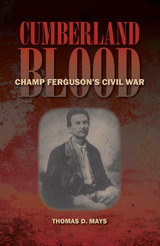 Cumberland Blood: Champ Ferguson's Civil War
Thomas D. Mays
Southern Illinois University Press, 2008 By the end of the Civil War, Champ Ferguson had become a notorious criminal whose likeness covered the front pages of Harper’s Weekly, Leslie’s Illustrated, and other newspapers across the country. His crime? Using the war as an excuse to steal, plunder, and murder Union civilians and soldiers. Cumberland Blood: Champ Ferguson’s Civil War offers insights into Ferguson's lawless brutality and a lesser-known aspect of the Civil War, the bitter guerrilla conflict in the Appalachian highlands, extending from the Carolinas through Tennessee, Kentucky, Virginia, and West Virginia. This compelling volume delves into the violent story of Champ Ferguson, who acted independently of the Confederate army in a personal war that eventually garnered the censure of Confederate officials. Author Thomas D. Mays traces Ferguson's life in the Cumberland highlands of southern Kentucky, where—even before the Civil War began—he had a reputation as a vicious killer. Ferguson, a rising slave owner, sided with the Confederacy while many of his neighbors and family members took up arms for the Union. For Ferguson and others in the highlands, the war would not be decided on the distant fields of Shiloh or Gettysburg: it would be local—and personal. Cumberland Blood describes how Unionists drove Ferguson from his home in Kentucky into Tennessee, where he banded together with other like-minded Southerners to drive the Unionists from the region. Northern sympathizers responded, and a full-scale guerrilla war erupted along the border in 1862. Mays notes that Ferguson's status in the army was never clear, and he skillfully details how raiders picked up Ferguson's gang to work as guides and scouts. In 1864, Ferguson and his gang were incorporated into the Confederate army, but the rogue soldier continued operating as an outlaw, murdering captured Union prisoners after the Battle of Saltville, Virginia. Cumberland Blood, enhanced by twenty-one illustrations, is an illuminating assessment of one of the Civil War's most ruthless men. Ferguson's arrest, trial, and execution after the war captured the attention of the nation in 1865, but his story has been largely forgotten. Cumberland Blood: Champ Ferguson's Civil War returns the story of Ferguson's private civil war to its place in history.
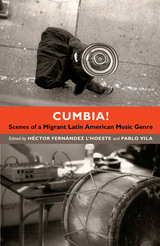 Cumbia!: Scenes of a Migrant Latin American Music Genre
Héctor Fernández L Hoeste and Pablo Vila, eds.
Duke University Press, 2013 Cumbia is a musical form that originated in northern Colombia and then spread throughout Latin America and wherever Latin Americans travel and settle. It has become one of the most popular musical genre in the Americas. Its popularity is largely due to its stylistic flexibility. Cumbia absorbs and mixes with the local musical styles it encounters. Known for its appeal to workers, the music takes on different styles and meanings from place to place, and even, as the contributors to this collection show, from person to person. Cumbia is a different music among the working classes of northern Mexico, Latin American immigrants in New York City, Andean migrants to Lima, and upper-class Colombians, who now see the music that they once disdained as a source of national prestige. The contributors to this collection look at particular manifestations of cumbia through their disciplinary lenses of musicology, sociology, history, anthropology, linguistics, and literary criticism. Taken together, their essays highlight how intersecting forms of identity—such as nation, region, class, race, ethnicity, and gender—are negotiated through interaction with the music.
Contributors. Cristian Alarcón, Jorge Arévalo Mateus, Leonardo D'Amico, Héctor Fernández L'Hoeste, Alejandro L. Madrid, Kathryn Metz, José Juan Olvera Gudiño, Cathy Ragland, Pablo Semán, Joshua Tucker, Matthew J. Van Hoose, Pablo Vila
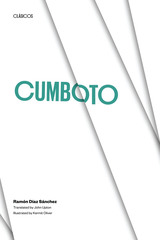 Cumboto
By Ramón Díaz Sánchez
University of Texas Press, 1969 This richly orchestrated novel, which won a national literary prize in the author's native land, Venezuela, also earned international recognition when the William Faulkner Foundation gave it an award as the most notable novel published in Ibero America between 1945 and 1962. Cumboto's disturbing story unfolds during the early decades of the twentieth century on a Venezuelan coconut plantation, in a turbulent Faulknerian double world of black and white. It records the lives of Don Federico, the effete survivor of a once vigorous family of landowners, and his Black servant Natividad, who since the days of their mutual childhood has been his only friend. Young Federico, psychologically impotent and lost to human contact, lives on as a lonely recluse in the century-old main house of "Cumboto," surrounded by descendants of African slaves who still manage, despite his apathy, to keep the plantation on its feet. Natividad's heroic and selfless struggle to redeem his friend by awakening him to the stirrings of the earth and life about him sets in motion a series of events that are to shatter Federico's childlike world: a headlong love affair with a voluptuous black girl, her terrified flight in the face of the bitter condemnation of her own people, and the unexpected appearance, twenty years later, of their extraordinary son. Throughout the novel runs a recurring theme: neither race can survive without the other. Black and white, Díaz Sánchez suggests, embody contrasting aspects of human nature, which are not inimical but complementary: the languid intellectualism of European culture must be tempered with the indestructible vitality and intuition of the African soul if humanity is ever fully to comprehend the living essence of the world.
The Cumulus Effect
J. Mae Barizo
Four Way Books, 2015 The Cumulus Effect alternates between the act of forgetting and the tumult of remembering. Minimalist, but insistently mercurial, the poems move through American and European cities: seduction in an Neoclassical palace in Saint Petersburg; a “hindsight of blood” in New York City; late-summer longing in Berlin’s Senefelder Platz. The Cumulus Effect sets on the page a prismatic and complex topography of the body forever en route.
C-Unit: Search for Community in Prison
Elliot Studt
Russell Sage Foundation, 1968 One of the most detailed reports ever made on an effort to establish a therapeutic community within a California prison. This work describes how the program was launched, gives a number of examples of its operation, and outlines the new problems and prospects created for inmates, staff, and the broader prison administration by this attempt to redefine the roles within the prison.
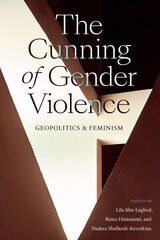 The Cunning of Gender Violence: Geopolitics and Feminism
Lila Abu-Lughod, Rema Hammami, and Nadera Shalhoub-Kevorkian, editors
Duke University Press, 2023 The Cunning of Gender Violence focuses on how a once visionary feminist project has folded itself into contemporary world affairs. Combating violence against women and gender-based violence constitutes a highly visible and powerful agenda enshrined in international governance and law and embedded in state violence and global securitization. Case studies on Palestine, Bangladesh, Iran, India, Pakistan, Israel, and Turkey as well as on UN and US policies trace the silences and omissions, along with the experiences of those subjected to violence, to question the rhetoric that claims the agenda as a “feminist success story.” Because religion and racialized ethnicity, particularly “the Muslim question,” run so deeply through the institutional structures of the agenda, the contributions explore ways it may be affirming or enabling rationales and systems of power, including civilizational hierarchies, that harm the very people it seeks to protect.
Contributors. Lila Abu-Lughod, Nina Berman, Inderpal Grewal, Rema Hammami, Janet R. Jakobsen, Shenila Khoja-Moolji, Vasuki Nesiah, Samira Shackle, Sima Shakhsari, Nadera Shalhoub-Kevorkian, Dina M Siddiqi, Shahla Talebi, Leti Volpp, Rafia Zakaria
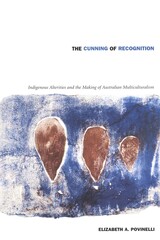 The Cunning of Recognition: Indigenous Alterities and the Making of Australian Multiculturalism
Elizabeth A. Povinelli
Duke University Press, 2002 The Cunning of Recognition is an exploration of liberal multiculturalism from the perspective of Australian indigenous social life. Elizabeth A. Povinelli argues that the multicultural legacy of colonialism perpetuates unequal systems of power, not by demanding that colonized subjects identify with their colonizers but by demanding that they identify with an impossible standard of authentic traditional culture.
Povinelli draws on seventeen years of ethnographic research among northwest coast indigenous people and her own experience participating in land claims, as well as on public records, legal debates, and anthropological archives to examine how multicultural forms of recognition work to reinforce liberal regimes rather than to open them up to a true cultural democracy. The Cunning of Recognition argues that the inequity of liberal forms of multiculturalism arises not from its weak ethical commitment to difference but from its strongest vision of a new national cohesion. In the end, Australia is revealed as an exemplary site for studying the social effects of the liberal multicultural imaginary: much earlier than the United States and in response to very different geopolitical conditions, Australian nationalism renounced the ideal of a unitary European tradition and embraced cultural and social diversity.
While addressing larger theoretical debates in critical anthropology, political theory, cultural studies, and liberal theory, The Cunning of Recognition demonstrates that the impact of the globalization of liberal forms of government can only be truly understood by examining its concrete—and not just philosophical—effects on the world.
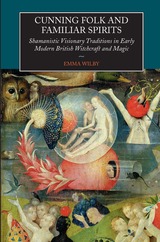 Cunning-Folk and Familiar Spirits: Shamanistic Visionary Traditions in Early Modern British Witchcraft and Magic
Emma Wilby
Sussex Academic Press, 2022 In the hundreds of confessions relating to witchcraft and sorcery trials from early modern Britain we frequently find detailed descriptions of intimate working relationships between popular magical practitioners and familiar spirits of either human or animal form. Until recently historians often dismissed these descriptions as elaborate fictions created by judicial interrogators eager to find evidence of stereotypical pacts with the Devil. Although this paradigm is now routinely questioned, and most historians acknowledge that there was a folkloric component to familiar lore in the period, these beliefs and the experiences reportedly associated with them, remain substantially unexamined. Cunning-Folk and Familiar Spirits examines the folkloric roots of familiar lore from historical, anthropological and comparative religious perspectives. It argues that beliefs about witches' familiars were rooted in beliefs surrounding the use of fairy familiars by beneficent magical practitioners or 'cunning folk', and corroborates this through a comparative analysis of familiar beliefs found in traditional native American and Siberian shamanism. The author explores the experiential dimension of familiar lore by drawing parallels between early modern familiar encounters and visionary mysticism as it appears in both tribal shamanism and medieval European contemplative traditions. These perspectives challenge the reductionist view of popular magic in early modern British often presented by historians.
A Cup of Tea in Pamplona
Robert Laxalt
University of Nevada Press, 1993 In this slim tale, Laxalt shows the ugly, desperate, and sometimes violent world of the contrabandiers, Basque smugglers in the Pyrenees. Set in the 1960s, the terse story begins with Nikolas, driven by his family’s financial despair, taking on work from Gregorio, the patrón of a small team of smugglers. Nikolas must smuggle fifty horses over the mountain ridges between France and Spain. If he’s caught, jail and ruin are certain; death is possible. This engrossing novella, told with tight narration and compelling dialogue, shows the grinding poverty and ethnic tensions in Basque lands, fifty years ago.
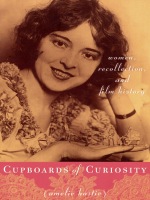 Cupboards of Curiosity: Women, Recollection, and Film History
Amelie Hastie
Duke University Press, 2007 In Cupboards of Curiosity Amelie Hastie rethinks female authorship within film history by expanding the historical archive to include dollhouses, scrapbooks, memoirs, cookbooks, and ephemera. Focusing on women who worked during the silent-film era, Hastie reveals how female stars, directors, and others appropriated personal or “domestic” cultural forms not only to publicize their own achievements but also to reflect on specific films and the broader film industry. Whether considering Colleen Moore’s thirty-six scrapbooks or Dietrich’s eccentric book Marlene Dietrich’s ABC, Hastie emphasizes how these women spoke for themselves—as collectors, historians, critics, and experts—often explicitly contemplating the role their writings and material objects would play in subsequent constructions of history. Hastie pays particular attention to the actresses Colleen Moore and Louise Brooks and Hollywood’s first female director, Alice Guy-Blaché. From the beginning of her career, Moore worked intently to preserve a lasting place for herself as a Hollywood star, amassing collections of photos, souvenirs, and clippings as well as a dollhouse so elaborate that it drew extensive public attention. Brooks’s short essays reveal how she participated in the creation of her image as Lulu and later emerged as a critic of film stardom. The recovery of Blaché’s role in film history by feminist critics in the 1970s and 1980s was made possible by the existence of the director’s own autobiographical history. Broadening her analytical framework to include contemporary celebrities, Hastie turns to how-to manuals authored by female stars, from Zasu Pitts’s cookbook Candy Hits to Christy Turlington’s Living Yoga. She discusses how these assertions of celebrity expertise in realms seemingly unrelated to film and visual culture allow fans to prolong their experience of stardom.
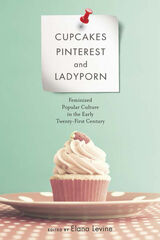 Cupcakes, Pinterest, and Ladyporn: Feminized Popular Culture in the Early Twenty-First Century
Edited by Elana Levine
University of Illinois Press, 2015 Media expansion into the digital realm and the continuing segregation of users into niches has led to a proliferation of cultural products targeted to and consumed by women. Though often dismissed as frivolous or excessively emotional, feminized culture in reality offers compelling insights into the American experience of the early twenty-first century. Elana Levine brings together writings from feminist critics that chart the current terrain of feminized pop cultural production. Analyzing everything from Fifty Shades of Grey to Pinterest to pregnancy apps, contributors examine the economic, technological, representational, and experiential dimensions of products and phenomena that speak to, and about, the feminine. As these essays show, the imperative of productivity currently permeating feminized pop culture has created a generation of texts that speak as much to women's roles as public and private workers as to an impulse for fantasy or escape. Incisive and compelling, Cupcakes, Pinterest, and Ladyporn sheds new light on contemporary women's engagement with an array of media forms in the context of postfeminist culture and neoliberalism.
Cur homo?: A History of the Thesis of Man as a Replacement for Fallen Angels
Vojtech Novotný
Karolinum Press, 2014 Examining, outlining, elucidating, and supplementing the existing body of scholarship concerning the medieval theological supposition that man was created as a replacement for fallen angels, Cur Homo? traces the implications of the question from the first century of the common era to the present day.
First introduced by St. Augustine and developed by other church fathers, the concept truly flourished in the twelfth century, when it was decided that man is an “original” being, created for its own sake, for whom God created the world. Vojtech Novotný goes on to trace the idea as it gradually faded over the centuries and, more recently, has been revived in the fields of modern philosophical thought.
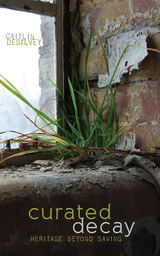 Curated Decay: Heritage beyond Saving
Caitlin DeSilvey
University of Minnesota Press, 2017 Transporting readers from derelict homesteads to imperiled harbors, postindustrial ruins to Cold War test sites, Curated Decay presents an unparalleled provocation to conventional thinking on the conservation of cultural heritage. Caitlin DeSilvey proposes rethinking the care of certain vulnerable sites in terms of ecology and entropy, and explains how we must adopt an ethical stance that allows us to collaborate with—rather than defend against—natural processes. Curated Decay chronicles DeSilvey’s travels to places where experiments in curated ruination and creative collapse are under way, or under consideration. It uses case studies from the United States, Europe, and elsewhere to explore how objects and structures produce meaning not only in their preservation and persistence, but also in their decay and disintegration. Through accessible and engaging discussion of specific places and their stories, it traces how cultural memory is generated in encounters with ephemeral artifacts and architectures. An interdisciplinary reframing of the concept of the ruin that combines historical and philosophical depth with attentive storytelling, Curated Decay represents the first attempt to apply new theories of materiality and ecology to the concerns of critical heritage studies.
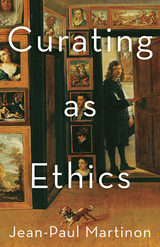 Curating As Ethics
Jean-Paul Martinon
University of Minnesota Press, 2020 A new ethics for the global practice of curating
Today, everyone is a curator. What was once considered a hallowed expertise is now a commonplace and global activity. Can this new worldwide activity be ethical and, if yes, how? This book argues that curating can be more than just selecting, organizing, and presenting information in galleries or online. Curating can also constitute an ethics, one of acquiring, arranging, and distributing an always conjectural knowledge about the world. Curating as Ethics is primarily philosophical in scope, evading normative approaches to ethics in favor of an intuitive ethics that operates at the threshold of thought and action. It explores the work of authors as diverse as Heidegger, Spinoza, Meillassoux, Mudimbe, Chalier, and Kofman. Jean-Paul Martinon begins with the fabric of these ethics: how it stems from matter, how it addresses death, how it apprehends interhuman relationships. In the second part he establishes the ground on which the ethics is based, the things that make up the curatorial—for example, the textual and visual evidence or the digital medium. The final part focuses on the activity of curating as such—sharing, caring, preparing, dispensing, and so on. With its invigorating new approach to curatorial studies, Curating as Ethics moves beyond the field of museum and exhibition studies to provide an ethics for anyone engaged in this highly visible activity, including those using social media as a curatorial endeavor, and shows how philosophy and curating can work together to articulate the world today.
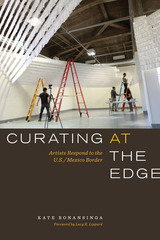 Curating at the Edge: Artists Respond to the U.S./Mexico Border
By Kate Bonansinga
University of Texas Press, 2014 Located less than a mile from Juárez, the Stanlee and Gerald Rubin Center for Visual Arts at the University of Texas at El Paso is a non-collecting institution that serves the Paso del Norte region. In Curating at the Edge, Kate Bonansinga brings to life her experiences as the Rubin’s founding director, giving voice to a curatorial approach that reaches far beyond the limited scope of “border art” or Chicano art. Instead, Bonansinga captures the creative climate of 2004–2011, when contemporary art addressed broad notions of destruction and transformation, irony and subversion, gender and identity, and the impact of location on politics. The Rubin’s location in the Chihuahuan desert on the U.S./Mexican border is meaningful and intriguing to many artists, and, consequently, Curating at the Edge describes the multiple artistic perspectives conveyed in the place-based exhibitions Bonansinga oversaw. Exciting mid-career artists featured in this collection of case studies include Margarita Cabrera, Liz Cohen, Marcos Ramírez ERRE, and many others. Recalling her experiences in vivid, first-person scenes, Bonansinga reveals the processes a contemporary art curator undertakes and the challenges she faces by describing a few of the more than sixty exhibitions that she organized during her tenure at the Rubin. She also explores the artists’ working methods and the relationship between their work and their personal and professional histories (some are Mexican citizens, some are U.S. citizens of Mexican descent, and some have ancestral ties to Europe). Timely and illuminating, Curating at the Edge sheds light on the work of the interlocutors who connect artists and their audiences.
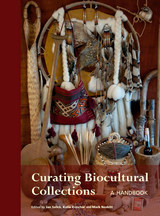 Curating Biocultural Collections: A Handbook
Edited by Jan Salick, Katie Konchar, and Mark Nesbitt
Royal Botanic Gardens, Kew, 2014 Biocultural collections cross the boundary between nature and culture, documenting the remarkable richness and diversity of human engagement with the natural world. With materials ranging from blocks of wood to DNA, and from ancient books to new websites, they play a diverse role in research and relaying valuable information about our world. Curating Biocultural Collections is the first book that both recognizes this role and provides wide-ranging advice for successfully managing these resources.
Written and edited by experts from around the world, Curating Biocultural Collections draws on real-world experiences, providing examples from ethnobiology, anthropology, agriculture, botany, zoology, and museum curation. The book places a strong emphasis on meeting the needs of collection users and encourages ethical and equitable engagement with source communities. With one hundred photographs, including objects from little-known collections, alongside case studies and a carefully chosen bibliography, this book gives valuable insight for anyone working to preserve valuable resources.
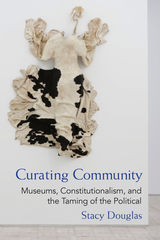 Curating Community: Museums, Constitutionalism, and the Taming of the Political
Stacy Douglas
University of Michigan Press, 2017 In Curating Community: Museums, Constitutionalism, and the Taming of the Political, Stacy Douglas challenges the centrality of sovereignty in our political and juridical imaginations. Creatively bringing together constitutional, political, and aesthetic theory, Douglas argues that museums and constitutions invite visitors to identify with a prescribed set of political constituencies based on national, ethnic, or anthropocentric premises. In both cases, these stable categories gloss over the radical messiness of the world and ask us to conflate representation with democracy. Yet the museum, when paired with the constitution, can also serve as a resource in the production of alternative imaginations of community. Consequently, Douglas’s key contribution is the articulation of a theory of counter-monumental constitutionalism, using the museum, that seeks to move beyond individual and collective forms of sovereignty that have dominated postcolonial and postapartheid theories of law and commemoration. She insists on the need to reconsider deep questions about how we conceptualize the limits of ourselves, as well as our political communities, in order to attend to everyday questions of justice in the courtroom, the museum, and beyond.
Curating Community is a book for academics, artists, curators, and constitutional designers interested in legacies of violence, transitional justice, and democracy.
Curating Crisis
Tom Sellar, special issue editor
Duke University Press, 2017 This issue examines how performance curators are responding to today’s crises both within the world of theater and performance and in the broader spheres of politics, economics, and history. Interviews with four leading performance curators—Boris Charmatz, Sodja Lotker, Florian Malzacher, and Miranda Wright—explore the evolution of their work in response to changes in funding, audience demographics, and creative practices. A special section, coedited by Sigrid Gareis, features essays from a convening at the 2015 SpielART festival that consider the role of the curator in transnational exchange and in response to issues of postcolonialism.
Contributors. Tilmann Broszat, Boris Charmatz, Kenneth Collins, Thomas F. DeFrantz, Sigrid Gareis, André Lepecki, Sodja Lotker, Florian Malzacher, Jay Pather, Suely Rolnik, Tom Sellar, Miranda Wright
Curating Deviance: Programming the Queer Film Canon
Marc Francis
Duke University Press, 2026 In Curating Deviance, Marc Francis scavenges film history for signs of vibrant, wayward life in the film programming of US art house and repertory cinemas between 1968 and 1989. Francis examines how creative and savvy programmers screened films by the likes of John Waters, Pier Paolo Pasolini, Russ Meyer, Rainer Werner Fassbinder, and a bevy of others in major cities across the United States, forming intertextual constellations in their repertory calendars. These programs allied a dizzying range of sexual and gendered outlaws, including stigmatized practices often overlooked by LGBT-focused queer theory. Curating Deviance reveals how repertory and art cinemas built a coalition of outcasts stigmatized for their taboo desires or identities, rekindling queer utopian imaginaries.
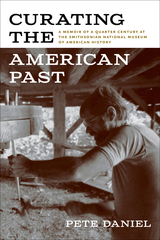 Curating the American Past: A Memoir of a Quarter Century at the Smithsonian National Museum of American History
Pete Daniel
University of Arkansas Press, 2022 “As is well known, Pete is an outstanding storyteller, and this book is no exception."
—Claire Strom, Journal of Southern History
In addition to chronicling significant exhibit work at the Smithsonian National Museum of American History, Curating the American Past, captures the excitement inherent in researching and writing history and Pete Daniel’s efforts to prevent diluted celebratory stories from replacing the red meat of the American past.
In Curating the American Past, Pete Daniel reveals how curators collect objects, plan exhibits, and bring alive the country’s complex and exciting history. In vivid detail, Daniel recounts the exhilaration of innovative research, the joys of collaboration, and the rewards of mentoring new generations of historians. In a career distinguished by prize-winning publications and pathbreaking exhibitions, Daniel also confronted the challenges of serving as a public historian tasked with protecting a definitive American museum from the erosion of scholarly standards. Curating the American Past offers a wealth of museum wisdom, illuminating the crucial role that dedicated historians and curators serve within our most important repositories of cultural memory.
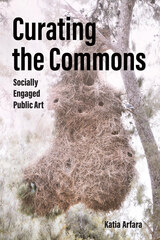 Curating the Commons: Socially Engaged Public Art
Katia Arfara
University of Michigan Press, 2025 Since the 2008 financial crisis and Occupy movements around the globe, artists have increasingly turned to socially engaged public art to create new models of artistic production and community engagement. Curating the Commons examines this turn through an in-depth study of performance-centered public art presented in Athens and Piraeus, Greece, during the austerity years. Extending from Henri Lefebvre’s theory of social space, Arfara examines art and social engagement in relation to the commons and self-organized solidarity initiatives, including performance, photography, film, and sculptures that appeared in unexpected urban spaces to complicate notions of memory, mobility, and belonging. These works all ask the question: Who has the right to the city? Combining her scholarly and curatorial work, Arfara advocates for performance-centered public art that resists processes of exclusion and segregation, reclaiming public space as a commons.
By sharing critical insights, Arfara immerses the reader in the working processes of artists and collectives, showing how public art can address ecosocial concerns in aesthetic forms. Curating the Commons offers a grounded perspective on the making of cutting-edge, socially engaged public artworks and contributes to the larger effort to craft more-than-human narratives in response to global events.
 Curating Worlds: Museum Practices in Contemporary Literature
Emma Bond
Northwestern University Press, 2025 Showing how museum practices shed new light on literary form How and why do books deploy objects in order to narrate the past? To answer this question, Emma Bond sifts through collections of objects stored in boxes, drawers, baskets, and displayed on shelves in contemporary texts by authors such as Valeria Luiselli, Maaza Mengiste, Orhan Pamuk, and Olga Tokarczuk and interprets them using a framework of museum practices. These practices, which include collection, curation, conservation, and display, have helped to turn real-life museums into three-dimensional narrative spaces. Curating Worlds: Museum Practices in Contemporary Literature shows how we can use this same set of practices to shed light on literary form itself: how stories are created, shaped, and communicated. Harnessing museum practices as an innovative lens for critical interpretation, Bond provides a fresh theoretical framework to engage with the meanings of object collections in literature and to make sense of the lives, and afterlives, of things today.
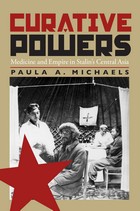 Curative Powers: Medicine and Empire in Stalin's Central Asia
Paula Michaels
University of Pittsburgh Press, 2003
Finalist, PEN Center USA Literary Awards, Research Nonfiction
Rich in oil and strategically located between Russia and China, Kazakhstan is one of the most economically and geopolitically important of the so-called Newly Independent States that emerged after the USSR's collapse. Yet little is known in the West about the region's turbulent history under Soviet rule, particularly how the regime asserted colonial dominion over the Kazakhs and other ethnic minorities.
Grappling directly with the issue of Soviet colonialism, Curative Powers offers an in-depth exploration of this dramatic, bloody, and transformative era in Kazakhstan's history. Paula Michaels reconstructs the Soviet government's use of medical and public health policies to change the society, politics, and culture of its outlying regions. At first glance the Soviets' drive to modernize medicine in Kazakhstan seems an altruistic effort to improve quality of life. Yet, as Michaels reveals, beneath the surface lies a story of power, legitimacy, and control. The Communist regime used biomedicine to reshape the function, self-perception, and practices of both doctors and patients, just as it did through education, the arts, the military, the family, and other institutions.
Paying particular attention to the Kazakhs' ethnomedical customs, Soviet authorities designed public health initiatives to teach the local populace that their traditional medical practices were backward, even dangerous, and that they themselves were dirty and diseased. Through poster art, newsreels, public speeches, and other forms of propaganda, Communist authorities used the power of language to demonstrate Soviet might and undermine the power of local ethnomedical practitioners, while moving the region toward what the Soviet state defined as civilization and political enlightenment.
As Michaels demonstrates, Kazakhs responded in unexpected ways to the institutionalization of this new pan-Soviet culture. Ethnomedical customs surreptitiously lived on, despite direct, sometimes violent, attacks by state authorities. While Communist officials hoped to exterminate all remnants of traditional healing practices, Michaels points to evidence that suggests the Kazakhs continued to rely on ethnomedicine even as they were utilizing the services of biomedical doctors, nurses, and midwives. The picture that ultimately emerges is much different from what the Soviets must have imagined. The disparate medical systems were not in open conflict, but instead both indigenous and alien practices worked side by side, becoming integrated into daily life.
Combining colonial and postcolonial theory with intensive archival and ethnographic research, Curative Powers offers a detailed view of Soviet medical initiatives and their underlying political and social implications and impact on Kazakh society. Michaels also endeavors to link biomedical policies and practices to broader questions of pan-Soviet identity formation and colonial control in the non-Russian periphery.
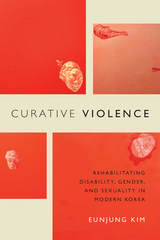 Curative Violence: Rehabilitating Disability, Gender, and Sexuality in Modern Korea
Eunjung Kim
Duke University Press, 2017 In Curative Violence Eunjung Kim examines what the social and material investment in curing illnesses and disabilities tells us about the relationship between disability and Korean nationalism. Kim uses the concept of curative violence to question the representation of cure as a universal good and to understand how nonmedical and medical cures come with violent effects that are not only symbolic but also physical. Writing disability theory in a transnational context, Kim tracks the shifts from the 1930s to the present in the ways that disabled bodies and narratives of cure have been represented in Korean folktales, novels, visual culture, media accounts, policies, and activism. Whether analyzing eugenics, the management of Hansen's disease, discourses on disabled people's sexuality, violence against disabled women, or rethinking the use of disabled people as a metaphor for life under Japanese colonial rule or under the U.S. military occupation, Kim shows how the possibility of life with disability that is free from violence depends on the creation of a space and time where cure is seen as a negotiation rather than a necessity.
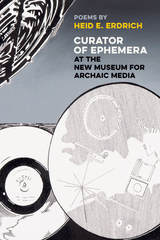 Curator of Ephemera at the New Museum for Archaic Media
Heid E. Erdrich
Michigan State University Press, 2017 Heid E. Erdrich writes from the present into the future where human anxiety lives. Many of her poems engage ekphrasis around the visual work of contemporary artists who, like Erdrich, are Anishinaabe. Poems in this collection also curate unmountable exhibits in not-yet-existent museums devoted to the ephemera of communication and technology. A central trope is the mixtape, an ephemeral form that Erdrich explores in its role of carrying the romantic angst of American couples. These poems recognize how our love of technology and how the extraction industries on indigenous lands that technology requires threaten our future and obscure the realities of indigenous peoples who know what it is to survive apocalypse. Deeply eco-poetic poems extend beyond the page in poemeos, collaboratively made poem films accessible in the text through the new but already archaic use of QR codes. Collaborative poems highlighting lessons in Anishinaabemowin also broaden the context of Erdrich’s work. Despite how little communications technology has helped to bring people toward understanding one another, these poems speak to the keen human yearning to connect as they urge engagement of the image, the moment, the sensual, and the real.
The Curators: A Novel
Maggie Nye
Northwestern University Press, 2024 Violence haunts 1915 Atlanta and so does the golem a group of girls creates
A dark, lyrical blend of historical fiction and magical realism, The Curators examines a critically underexplored event in American history through unlikely eyes. All of Atlanta is obsessed with the two-year-long trial and subsequent lynching of Jewish factory superintendent Leo Frank in 1915. None more so than thirteen-year-old Ana Wulff and her friends, who take history into their own hands—quite literally—when they use dirt from Ana’s garden to build and animate a golem in Frank’s image. They’ll do anything to keep his story alive, but when their scheme gets out of hand, they must decide what responsibility requires of them. The Curators tells the story of five zealous girls and the cyclonic power of their friendship as they come of age in a country riven by white supremacy.
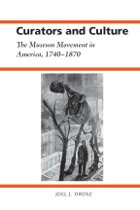 Curators and Culture: The Museum Movement in America, 1740-1870
Joel J. Orosz
University of Alabama Press, 1990 Tracing the birth of American museums and the curators who shaped a nation’s cultural identity. As they formed their pioneer museums, these men were guided not so much by European examples, but rather by the imperatives of the American democratic culture, including the Enlightenment, the simultaneous decline of the respectability and rise of the middle classes, the Age of Egalitarianism, and the advent of professionalism in the sciences. Thus the pre-1870 American museum was neither the frivolous sideshow some critics have imagined, nor the enclave for elitists that others have charged. Instead, the proprietors displayed serious motives and egalitarian aspirations. The conflicting demands for popular education on the one hand and professionalism on the other were a continuing source of tension in American museums after about 1835, but by 1870 the two claims had synthesized into a rough parity. This synthesis, the "American Compromise," has remained the basic model of museums in America down to the present. Thus, by 1870, the form of the modern American museum as an institution which simultaneously provides popular education and promotes scholarly research was completely developed.
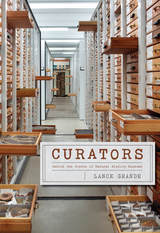 Curators: Behind the Scenes of Natural History Museums
Lance Grande
University of Chicago Press, 2017 Over the centuries, natural history museums have evolved from being little more than musty repositories of stuffed animals and pinned bugs, to being crucial generators of new scientific knowledge. They have also become vibrant educational centers, full of engaging exhibits that share those discoveries with students and an enthusiastic general public.
At the heart of it all from the very start have been curators. Yet after three decades as a natural history curator, Lance Grande found that he still had to explain to people what he does. This book is the answer—and, oh, what an answer it is: lively, exciting, up-to-date, it offers a portrait of curators and their research like none we’ve seen, one that conveys the intellectual excitement and the educational and social value of curation. Grande uses the personal story of his own career—most of it spent at Chicago’s storied Field Museum—to structure his account as he explores the value of research and collections, the importance of public engagement, changing ecological and ethical considerations, and the impact of rapidly improving technology. Throughout, we are guided by Grande’s keen sense of mission, of a job where the why is always as important as the what.
This beautifully written and richly illustrated book is a clear-eyed but loving account of natural history museums, their curators, and their ever-expanding roles in the twenty-first century.
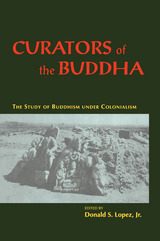 Curators of the Buddha: The Study of Buddhism under Colonialism
Edited by Donald S. Lopez Jr.
University of Chicago Press, 1995 Curators of the Buddha is the first critical history of the study of Buddhism in the West and the first work to bring the insights of colonial and postcolonial cultural studies to bear on this field.
After an overview of the origins of Buddhist studies in the early nineteenth century, the essays focus on important "curators of the Buddha," such as Aurel Stein, D. T. Suzuki, and Carl Jung, who, as they created and maintained the discipline, played a significant role in disseminating knowledge about Buddhism in the West. The essays bring to life many of the important but unexamined social, political, and cultural conditions that have shaped the course of Buddhist studies for more than a century—and have frequently distorted the understanding of a complex set of traditions. Contributors Charles Hallisey, Gustavo Benavides, Stanley Abe, Luis Gómez, Robert Sharf, and Donald Lopez challenge some of the most enduring ideas in Buddhist studies: that Zen Buddhism is, above all, an experience; that Tibetan Buddhism is polluted, or pristine; that the Buddha image is of Greek or Roman origin; that the classical text supersedes the vernacular, as the manuscript supersedes the informant; and many others.
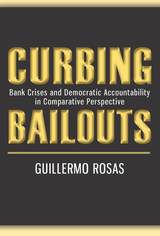 Curbing Bailouts: Bank Crises and Democratic Accountability in Comparative Perspective
Guillermo Rosas
University of Michigan Press, 2009 "Rosas's compelling theory and wide-ranging empirical evidence yield a persuasive but surprising conclusion in light of the financial meltdown of 2008–9. In the event of banking crises, not only do elected governments treat taxpayers better and force bankers and their creditors to pay more for their mistakes, but bankers in democracies are more prudent as a consequence . . . essential reading for all interested in the political economy of crisis and in the future of banking regulation."
---Philip Keefer, Lead Economist, Development Research Group, The World Bank "Rosas convincingly demonstrates how democratic accountability affects the incidence and resolution of banking crises. Combining formal models, case studies, and cutting-edge quantitative methods, Rosas's book represents a model for political economy research."
---William Bernhard, Professor, Department of Political Science, University of Illinois "When the financial crises of the 1990s hit Asia, Russia, and Latin America, the U.S. scolded them about the moral hazard problems of bailing out the banks. Now, the shoe is on the other foot, with the U.S. struggling to manage an imploding financial sector. Rosas's study of bank bailouts could not be more timely, providing us with both a framework for thinking about the issue and some sobering history of how things go both right and badly wrong. Democratic accountability proves the crucial factor in making sure bailouts are fair, a point that is as relevant for U.S. policy as for an understanding of the emerging markets."
---Stephan Haggard, Krause Professor, Graduate School of International Relations and Pacific Studies, University of California, San Diego Banking crises threaten the stability and growth of economies around the world. In response, politicians restore banks to solvency by redistributing losses from bank shareholders and depositors to taxpayers, and the burden the citizenry must bear varies from case to case. Whereas some governments stay close to the prescriptions espoused by Sir Walter Bagehot in the nineteenth century that limit the costs shouldered by taxpayers, others engage in generous bank bailouts at great cost to society. What factors determine a government's response? In this comparative analysis of late-twentieth-century banking crises, Guillermo Rosas identifies political regime type as the determining factor. During a crisis, powerful financial players demand protection of their assets. Rosas maintains that in authoritarian regimes, government officials have little to shield them from such demands and little incentive for rebuffing them, while in democratic regimes, elected officials must weigh these demands against the interests of the voters---that is, the taxpayers. As a result, compared with authoritarian regimes, democratic regimes show a lower propensity toward dramatic, costly bailouts. Guillermo Rosas is Assistant Professor in the Department of Political Science and Fellow at the Center in Political Economy at Washington University in St. Louis.
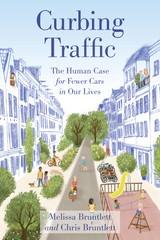 Curbing Traffic: The Human Case for Fewer Cars in Our Lives
Melissa Bruntlett and Chris Bruntlett
Island Press, 2021 In 2019, mobility experts Melissa and Chris Bruntlett began a new adventure in Delft in the Netherlands. They had packed up their family in Vancouver, BC, and moved to Delft to experience the biking city as residents rather than as visitors. A year earlier they had become unofficial ambassadors for Dutch cities with the publication of their first book Building the Cycling City: The Dutch Blueprint for Urban Vitality.
In Curbing Traffic: The Human Case for Fewer Cars in Our Lives, Melissa and Chris Bruntlett chronicle their experience living in the Netherlands and the benefits that result from treating cars as visitors rather than owners of the road. They weave their personal story with research and interviews with experts and Delft locals to help readers share the experience of living in a city designed for people.
In the planning field, little attention is given to the effects that a “low-car” city can have on the human experience at a psychological and sociological level. Studies are beginning to surface that indicate the impact that external factors—such as sound—can have on our stress and anxiety levels. Or how the systematic dismantling of freedom and autonomy for children and the elderly to travel through their cities is causing isolation and dependency.
In Curbing Traffic, the Bruntletts explain why these investments in improving the built environment are about more than just getting from place to place more easily and comfortably. The insights will help decision makers and advocates to better understand and communicate the human impacts of low-car cities: lower anxiety and stress, increased independence, social autonomy, inclusion, and improved mental and physical wellbeing.
The book is organized around the benefits that result from thoughtfully curbing traffic, resulting in a city that is: child-friendly, connected, trusting, feminist, quiet, therapeutic, accessible, prosperous, resilient, and age-friendly.
Planners, public officials, and citizen activists should have a greater understanding of the consequences that building for cars has had on communities (of all sizes). Curbing Traffic provides relatable, emotional, and personal reasons why it matters and inspiration for exporting the low-car city.
 The Cure: A Story of Cancer and Politics from the Annals of the Cold War
Nikolai Krementsov
University of Chicago Press, 2002 Did America try to steal Soviet "cancer secrets"? And how could a cancer cure turn into a "biological atomic bomb"? Nikolai Krementsov's compelling tale of cancer and politics is the story of a husband-and-wife team who developed a promising anticancer treatment in Stalin's Russia, only to see their discovery entangled in Cold War rivalries, ideological conflict, and scientific turf wars.
In 1946, Nina Kliueva and Grigorii Roskin announced the discovery of a preparation able to "dissolve" tumors in mice. Preliminary clinical trials suggested that KR, named after its developers, might work in humans as well. Media hype surrounding KR prompted the U.S. ambassador to the Soviet Union to seek U.S.-Soviet cooperation in perfecting the possible cure. But the escalating Cold War gave this American interest a double edge. Though it helped Kliueva and Roskin solicit impressive research support from the Soviet leadership, including Stalin, it also thrust the couple into the center of an ideological confrontation between the superpowers. Accused of divulging "state secrets" to America, the couple were put on a show trial, and their "antipatriotic sins" were condemned in Soviet stage and film productions.
Parlaying their notoriety into increased funding, Kliueva and Roskin continued their research, but envious colleagues discredited their work and took over their institute. For years, work on KR languished and ceased entirely with the deaths of Kliueva and Roskin. But recently, the Russian press reported that work on KR has begun again, reopening this illuminating story of the intersection among Cold War politics, personal ideals, and biomedical research.
 The Cure of Poetry in an Age of Prose: Moral Essays on the Poet's Calling
Mary Kinzie
University of Chicago Press, 1993 The role of the poet, Mary Kinzie writes, is to engage the most profound subjects with the utmost in expressive clarity. The role of the critic is to follow the poet, word for word, into the arena where the creative struggle occurs. How this mutual purpose is served, ideally and practically, is the subject of this bracingly polemical collection of essays.
A distinguished poet and critic, Kinzie assesses poetry's situation during the past twenty-five years. Ours, she contends, is literally a prosaic age, not only in the popularity of prose genres but in the resultant compromises with truth and elegance in literature. In essays on "the rhapsodic fallacy," confessionalism, and the romance of perceptual response, Kinzie diagnoses some of the trends that diminish the poet's flexibility. Conversely, she also considers individual poets—Randall Jarrell, Elizabeth Bishop, Howard Nemerov, Seamus Heaney, and John Ashbery—who have found ingenious ways of averting the risks of prosaism and preserving the special character of poetry.
Focusing on poet Louise Bogan and novelist J. M. Coetzee, Kinzie identifies a crucial and curative overlap between the practices of great prose-writing and great poetry. In conclusion, she suggests a new approach for teaching writers of poetry and fiction. Forcefully argued, these essays will be widely read and debated among critics and poets alike.
|
|
